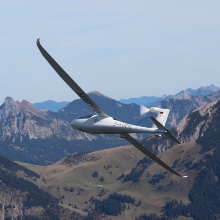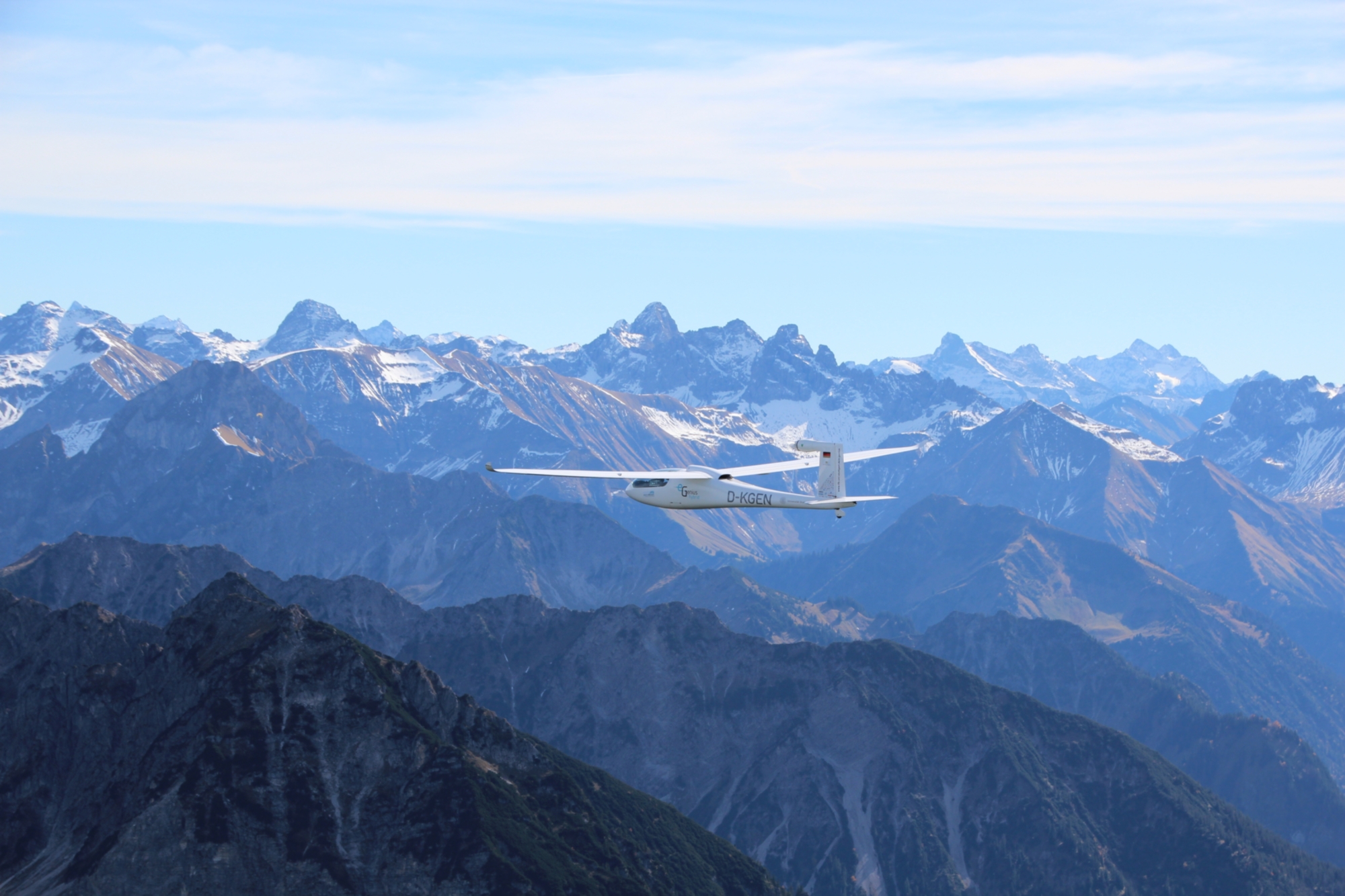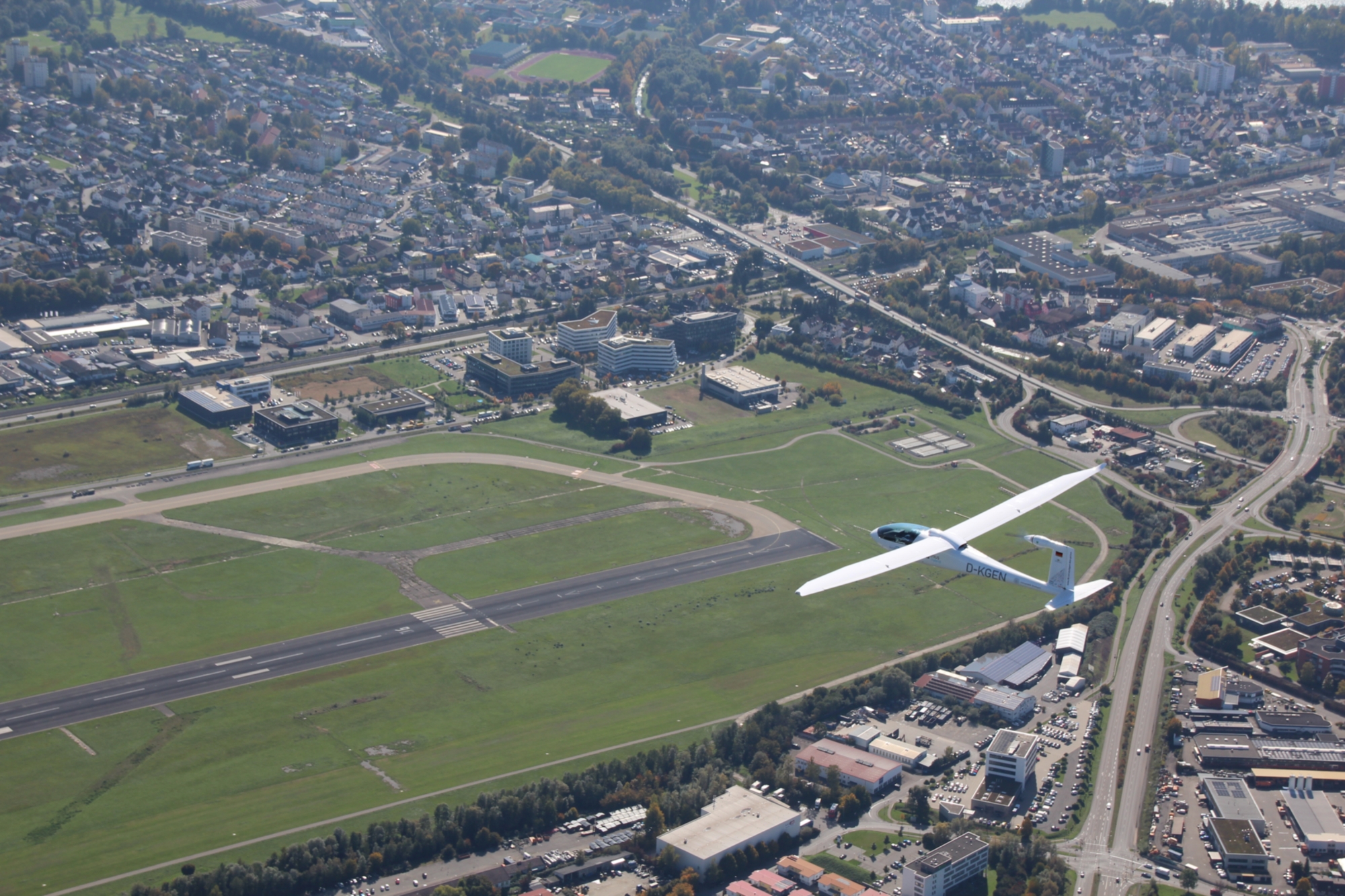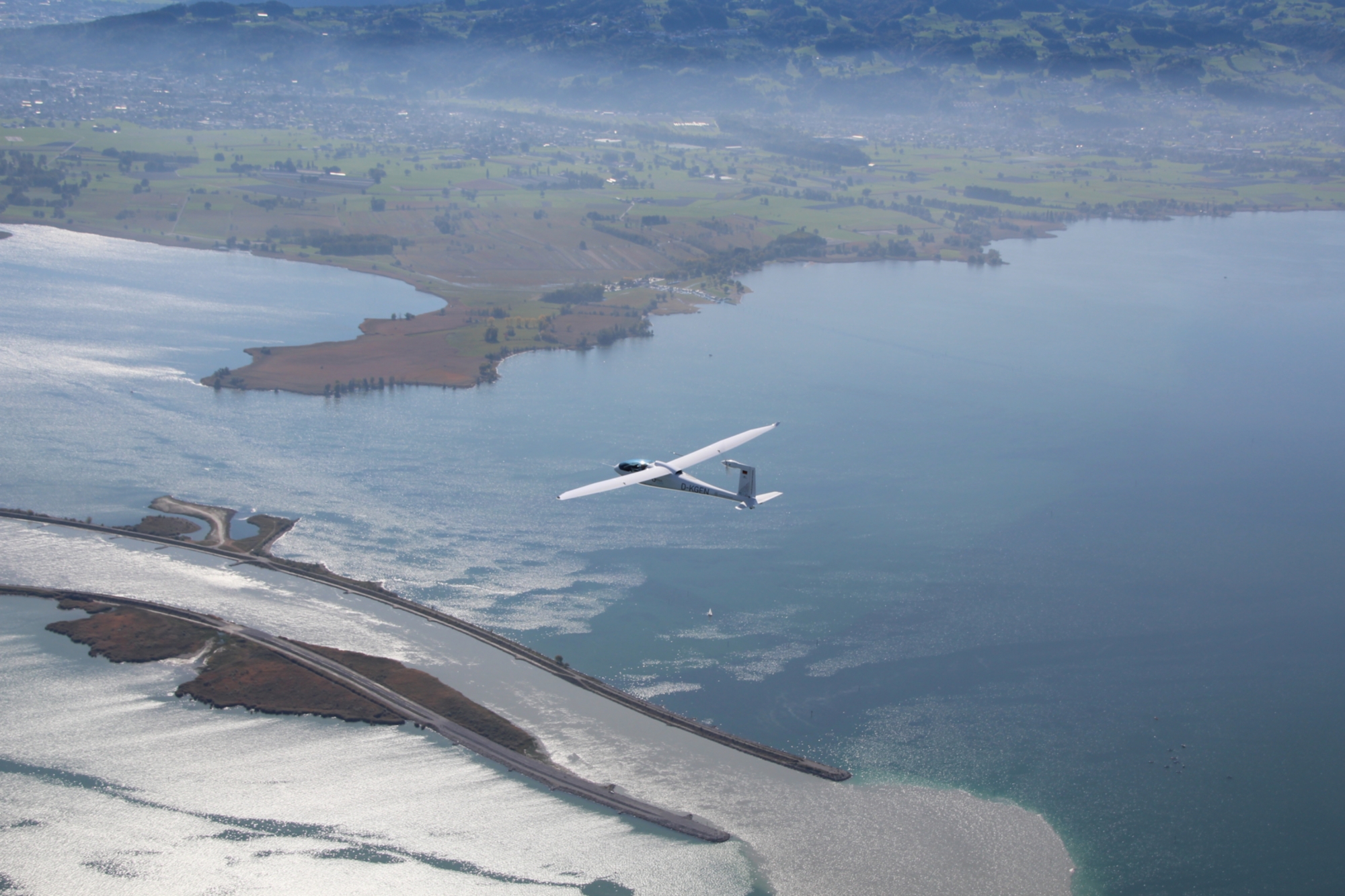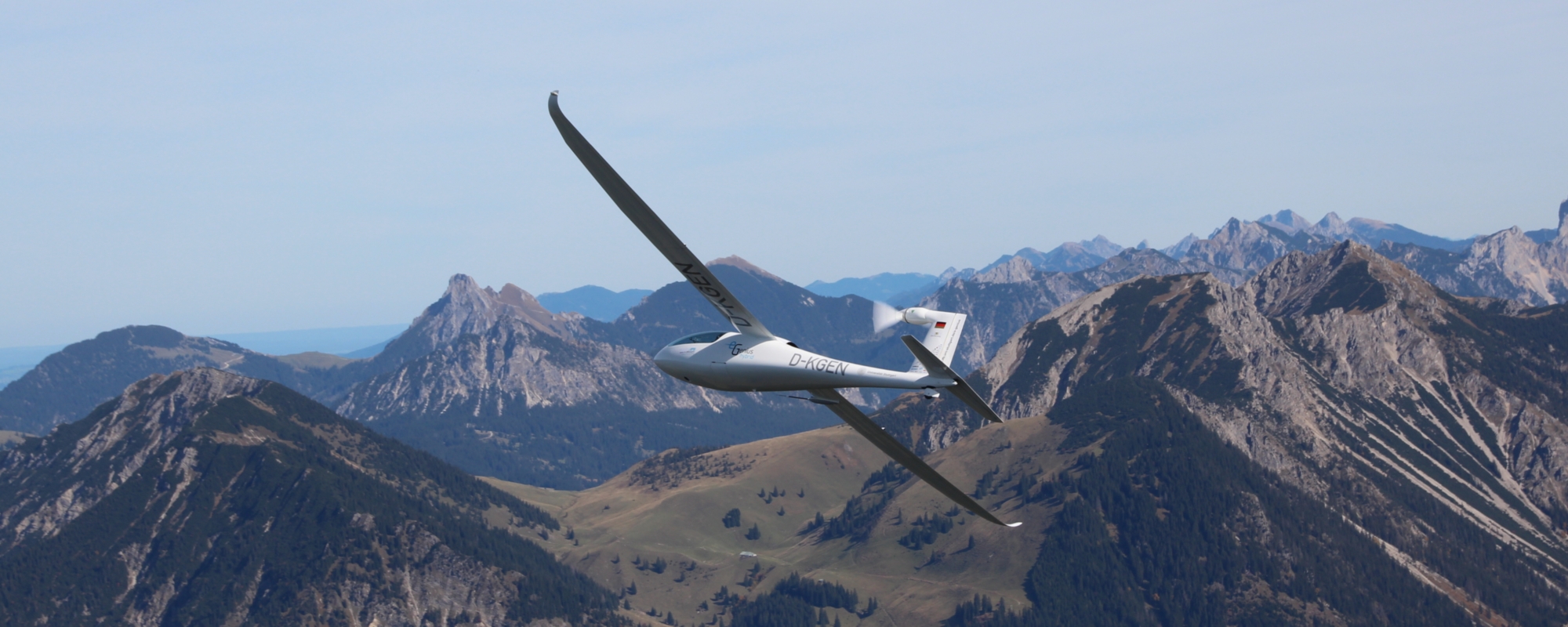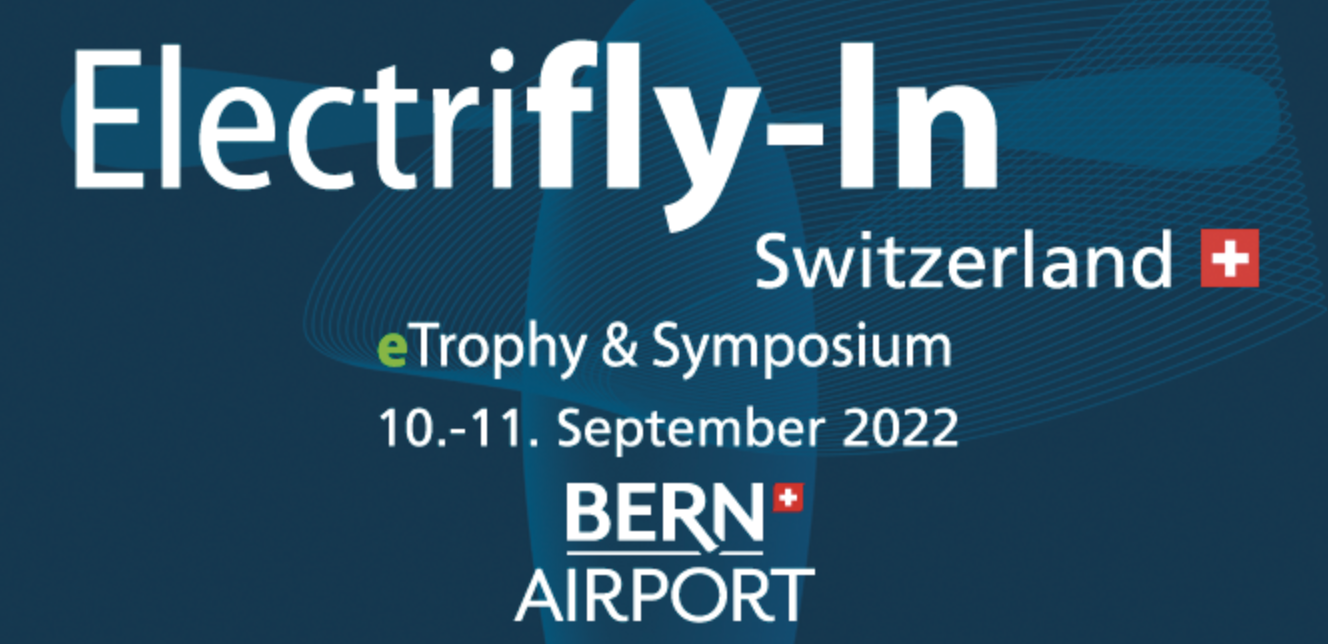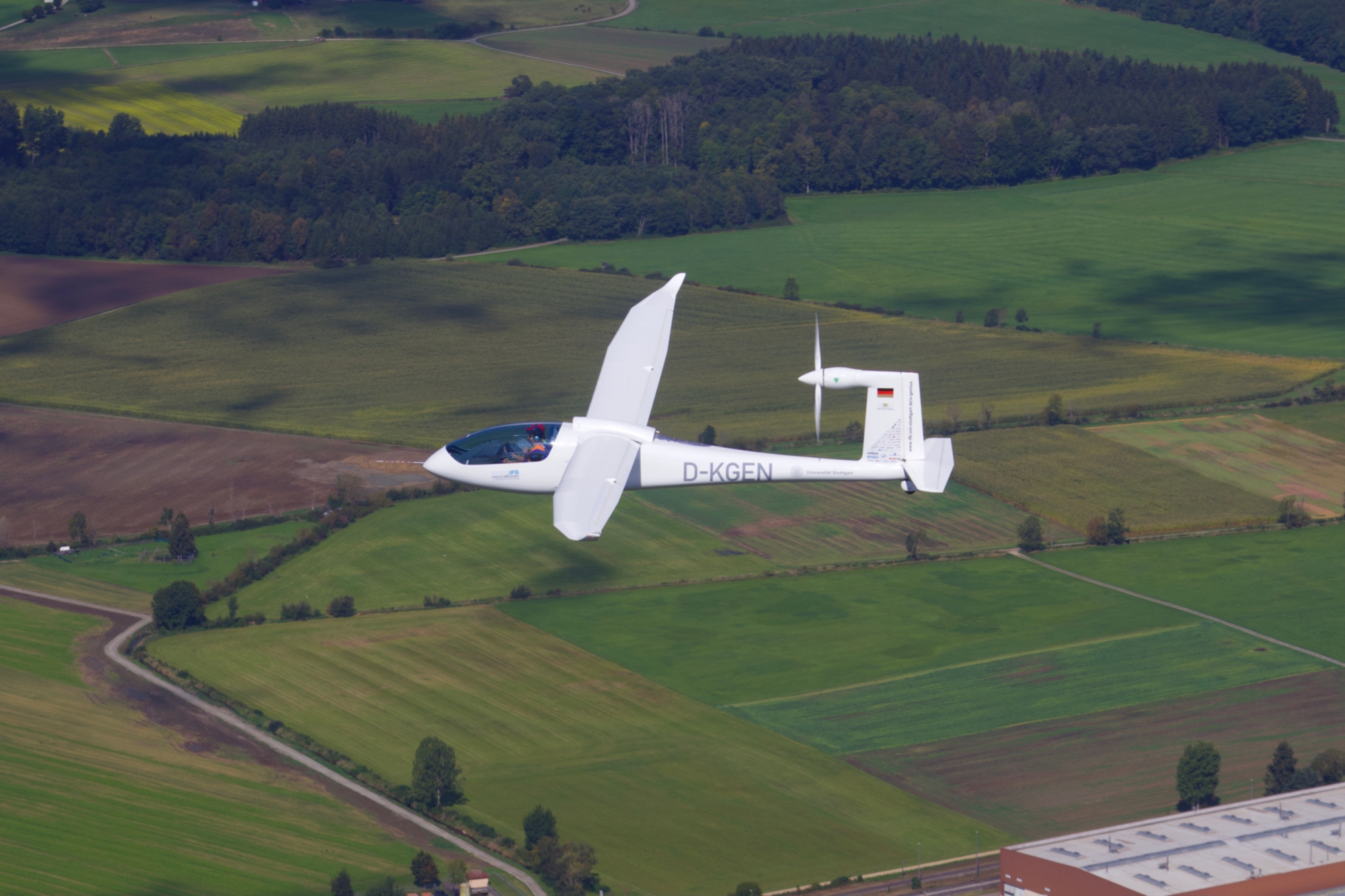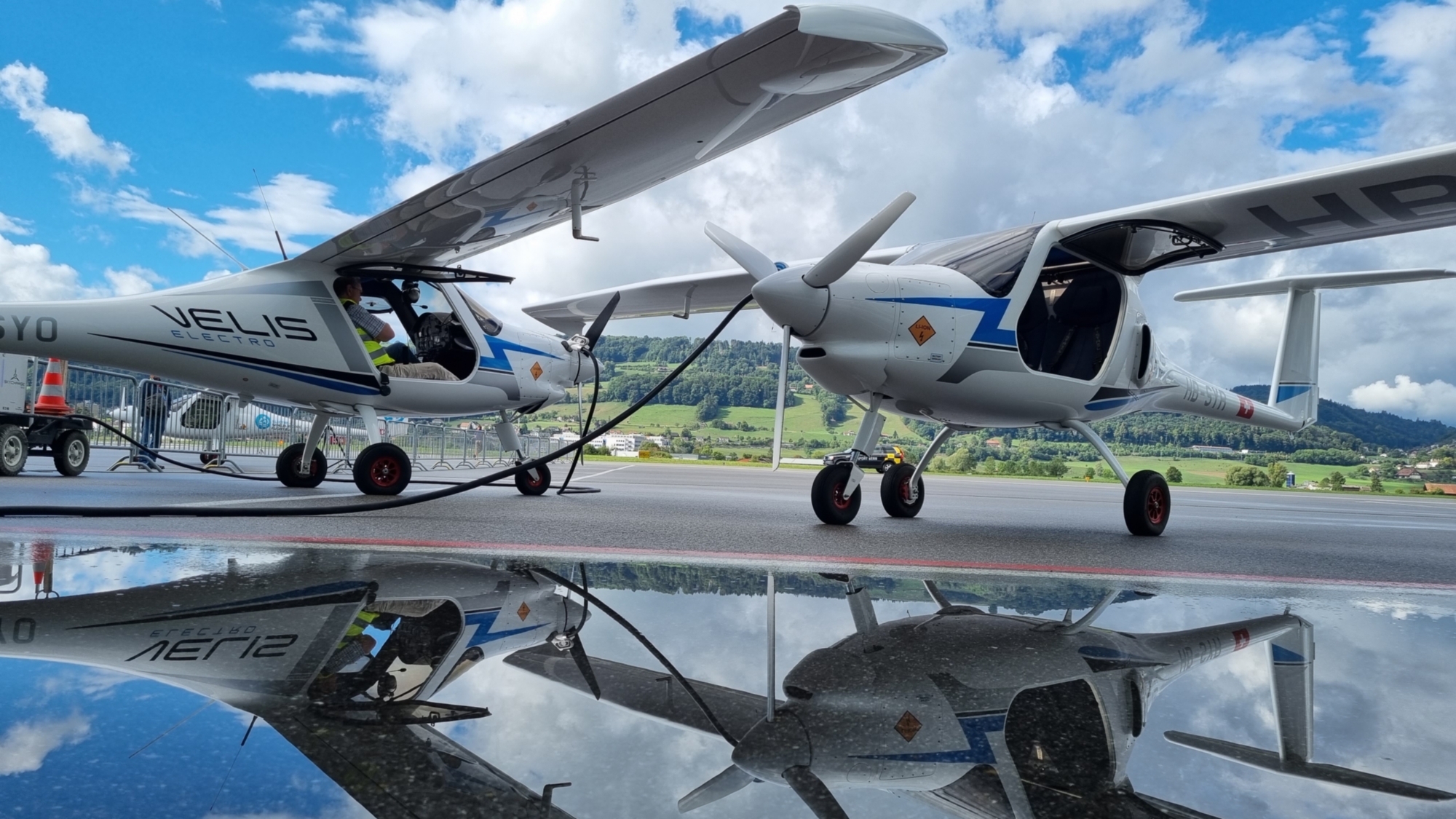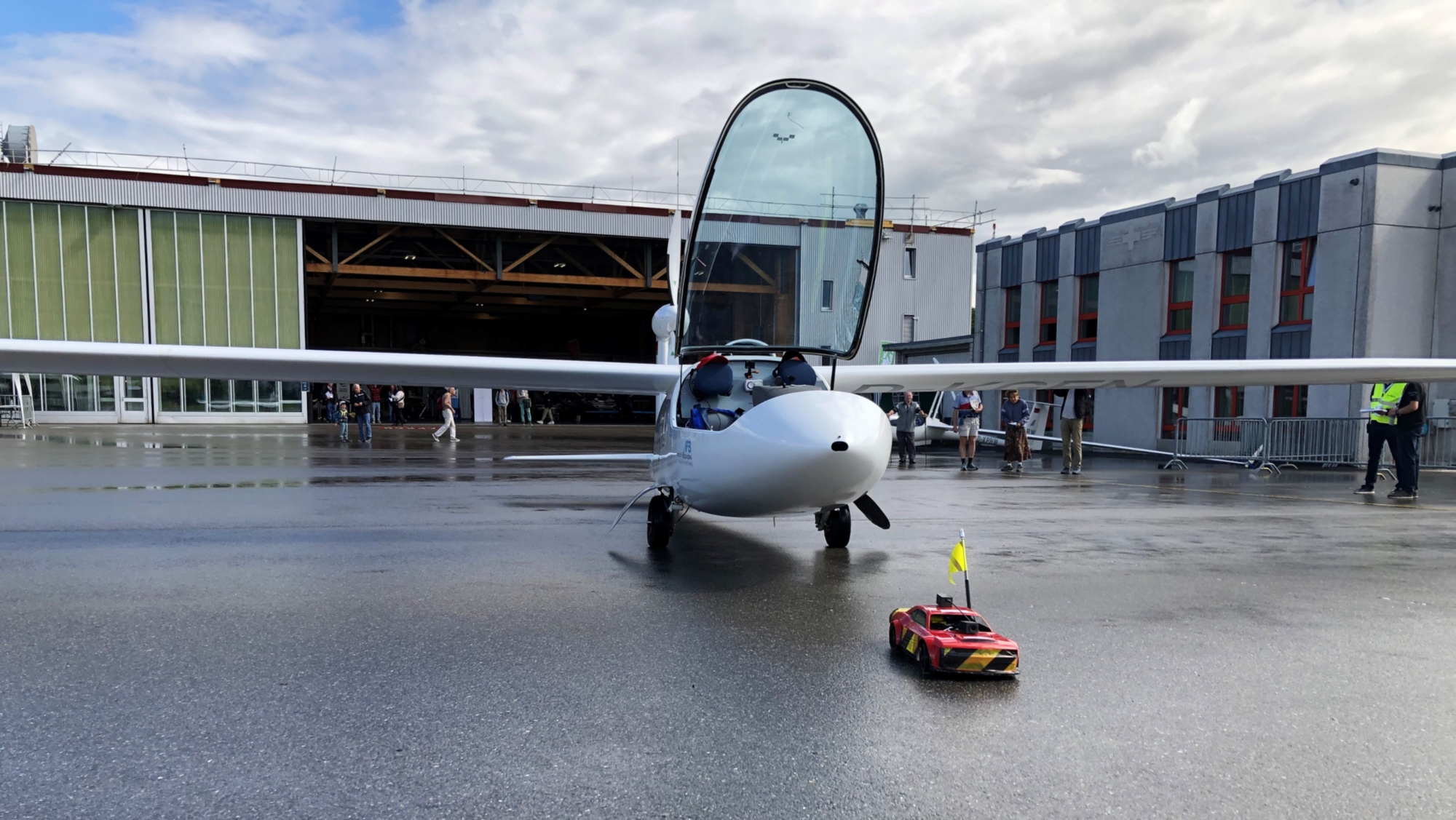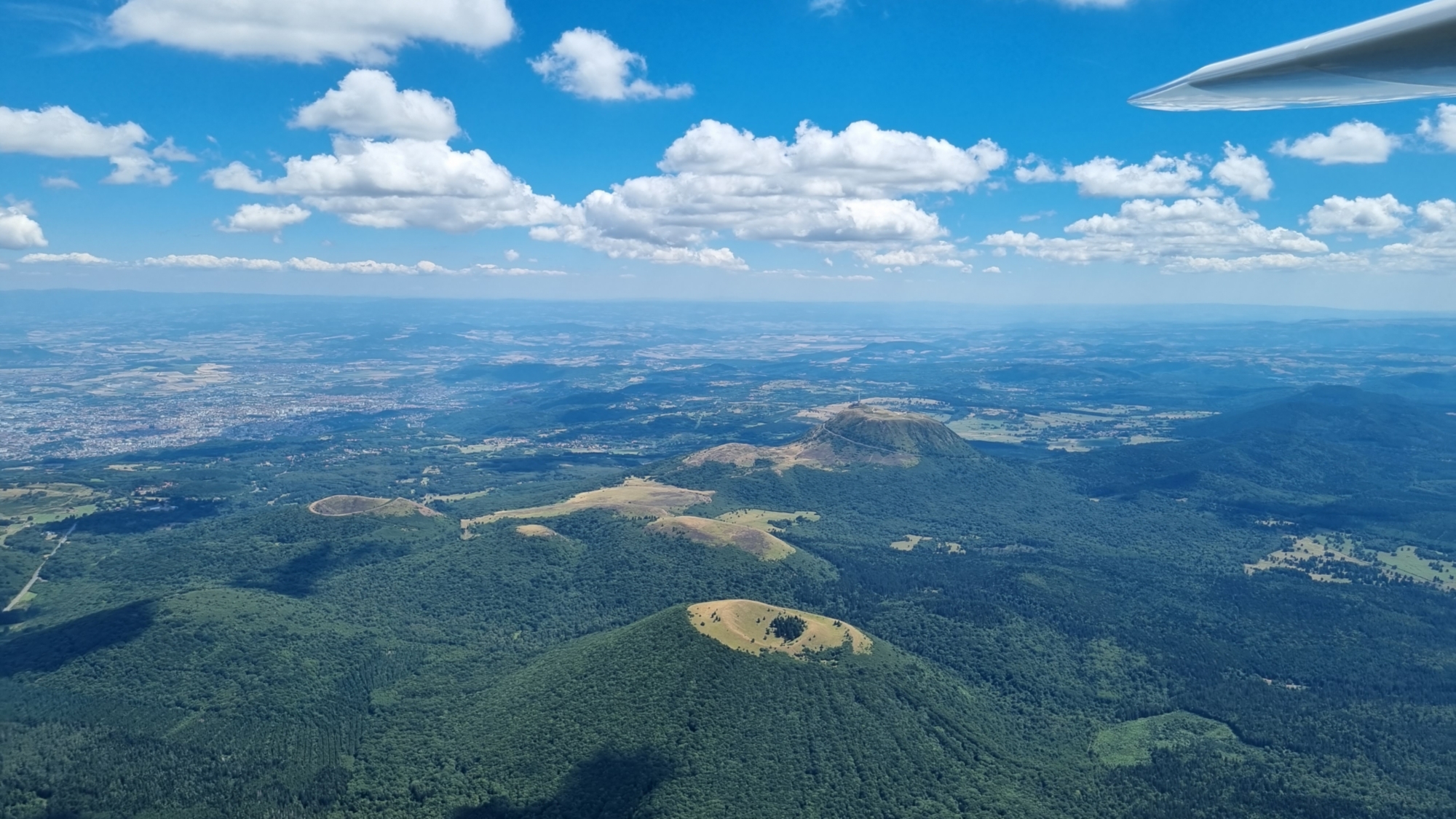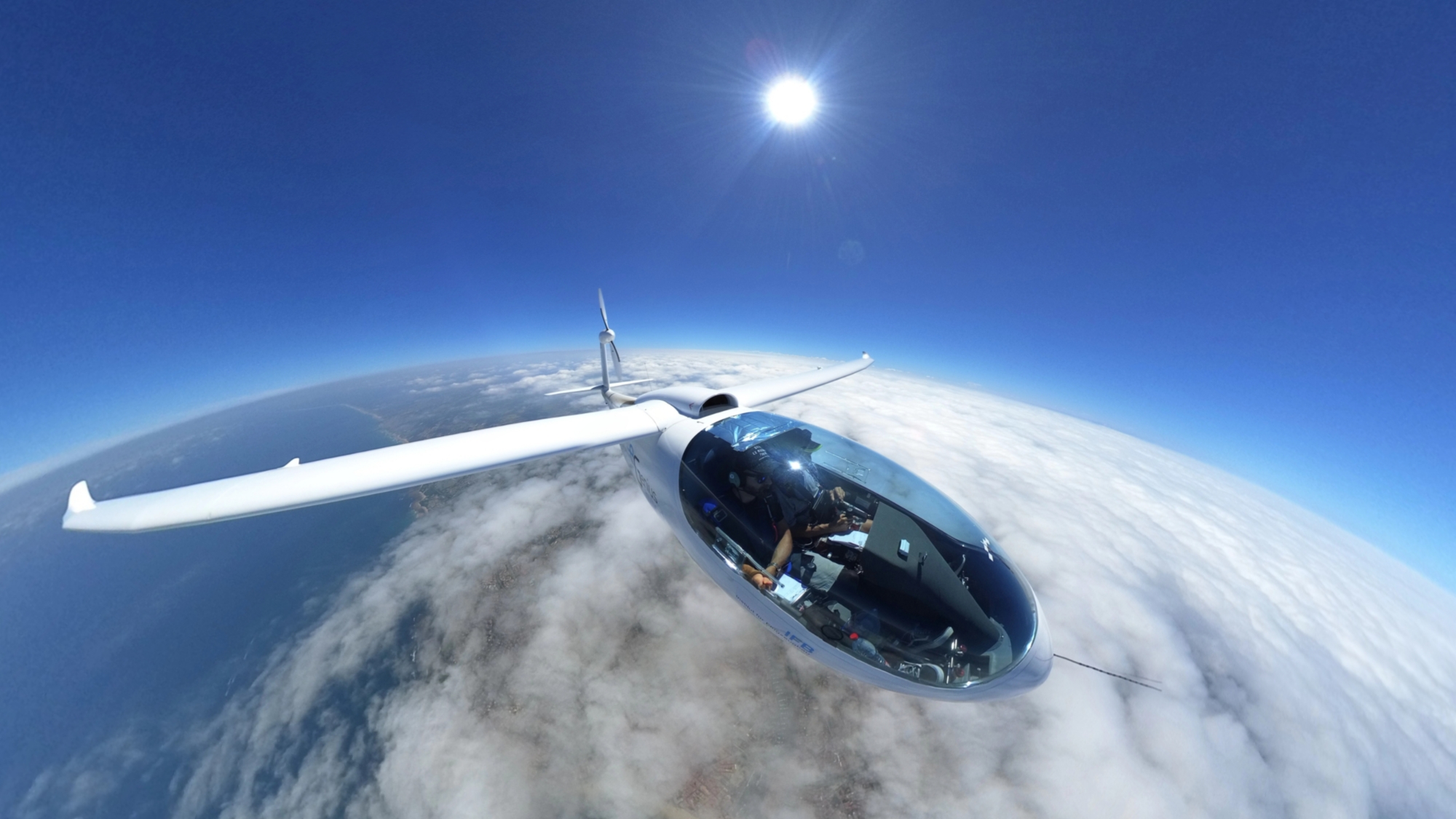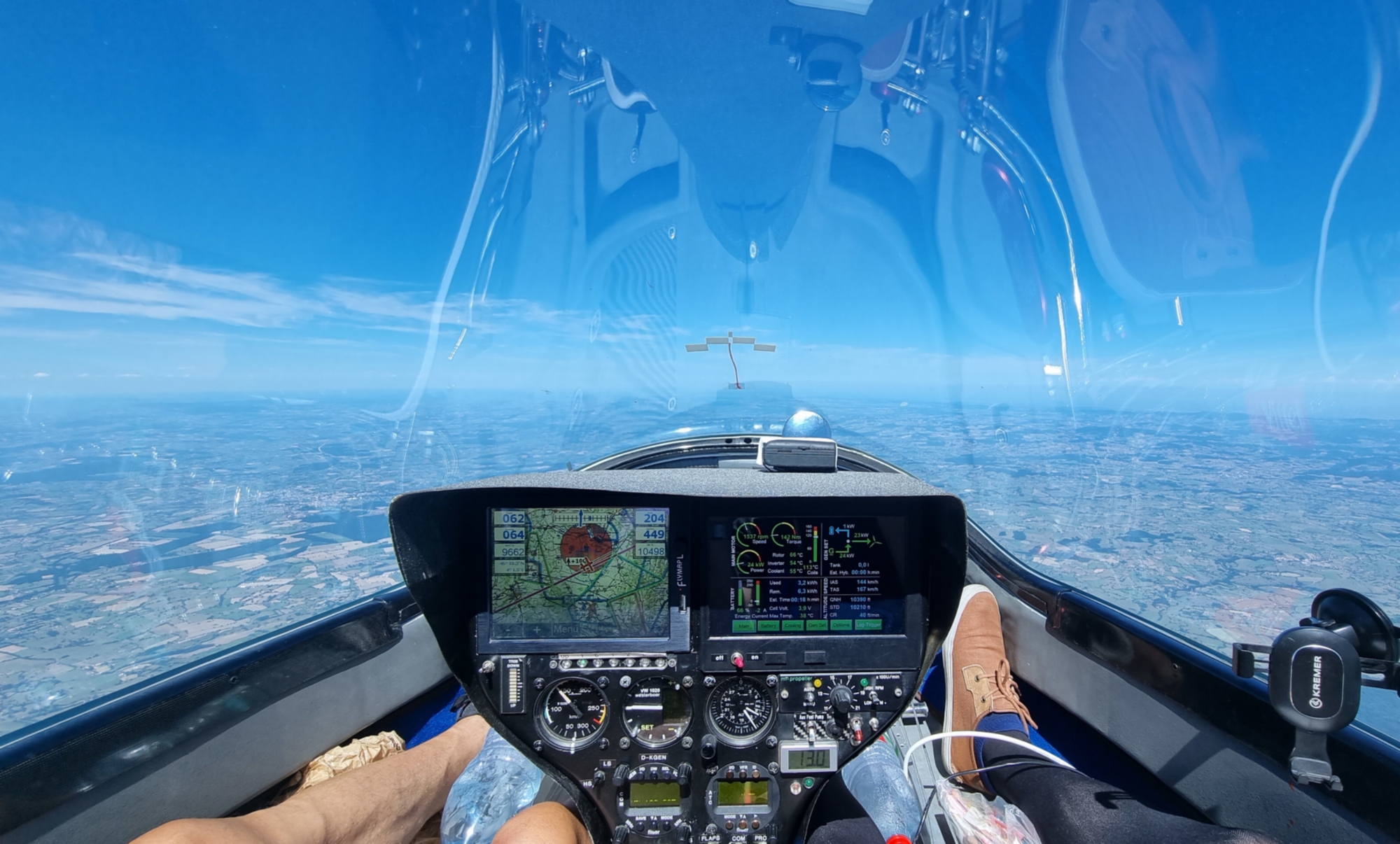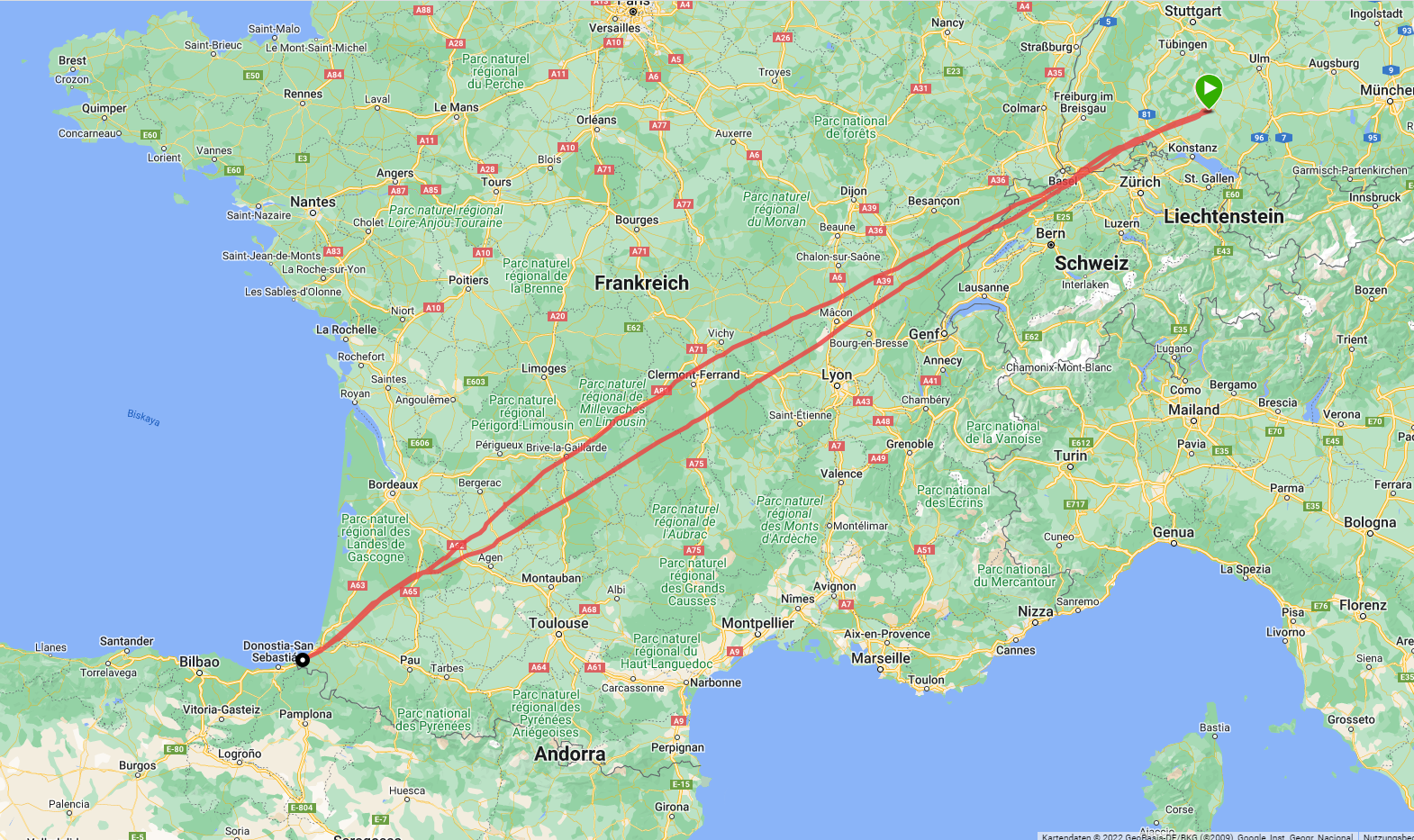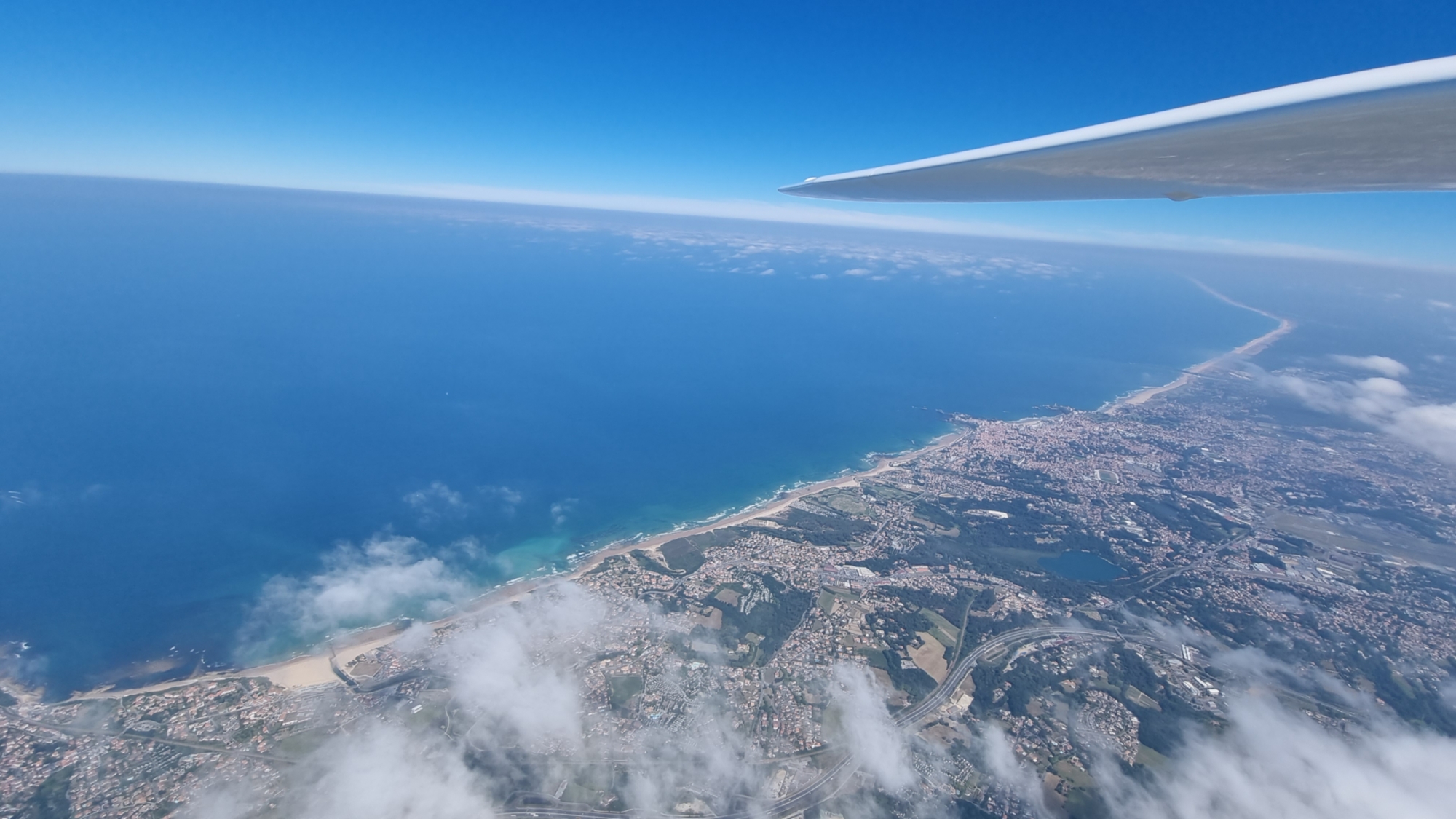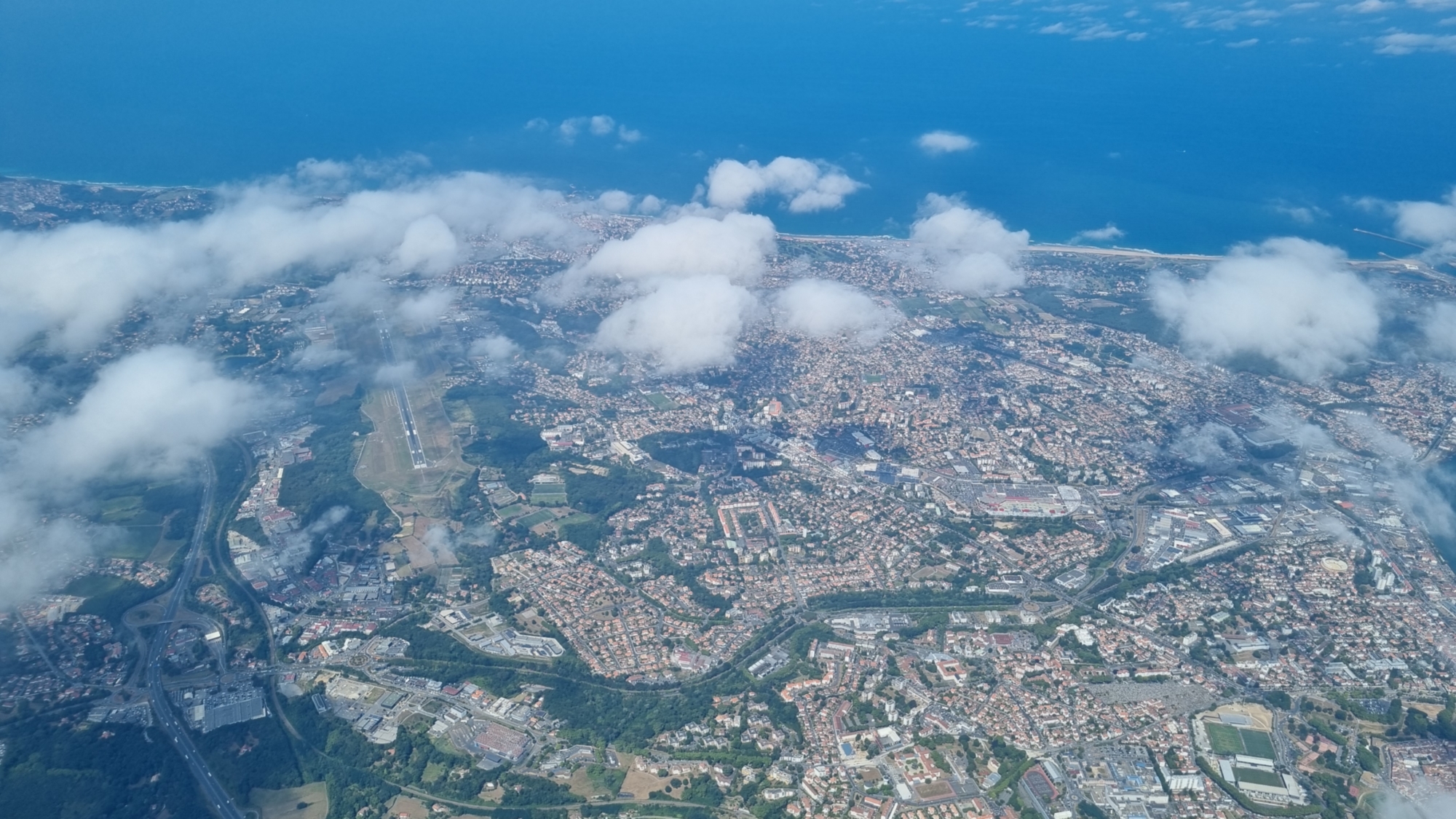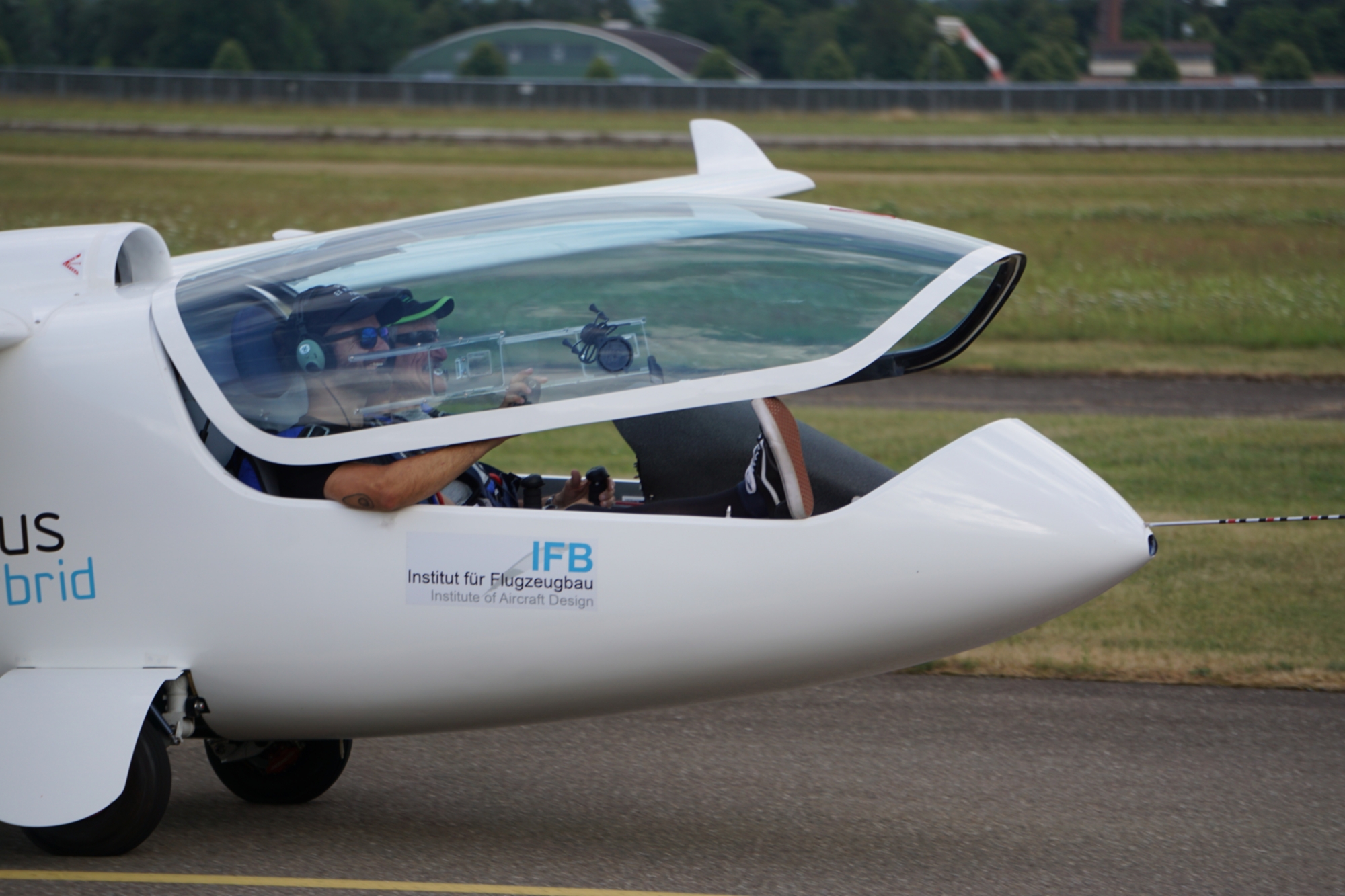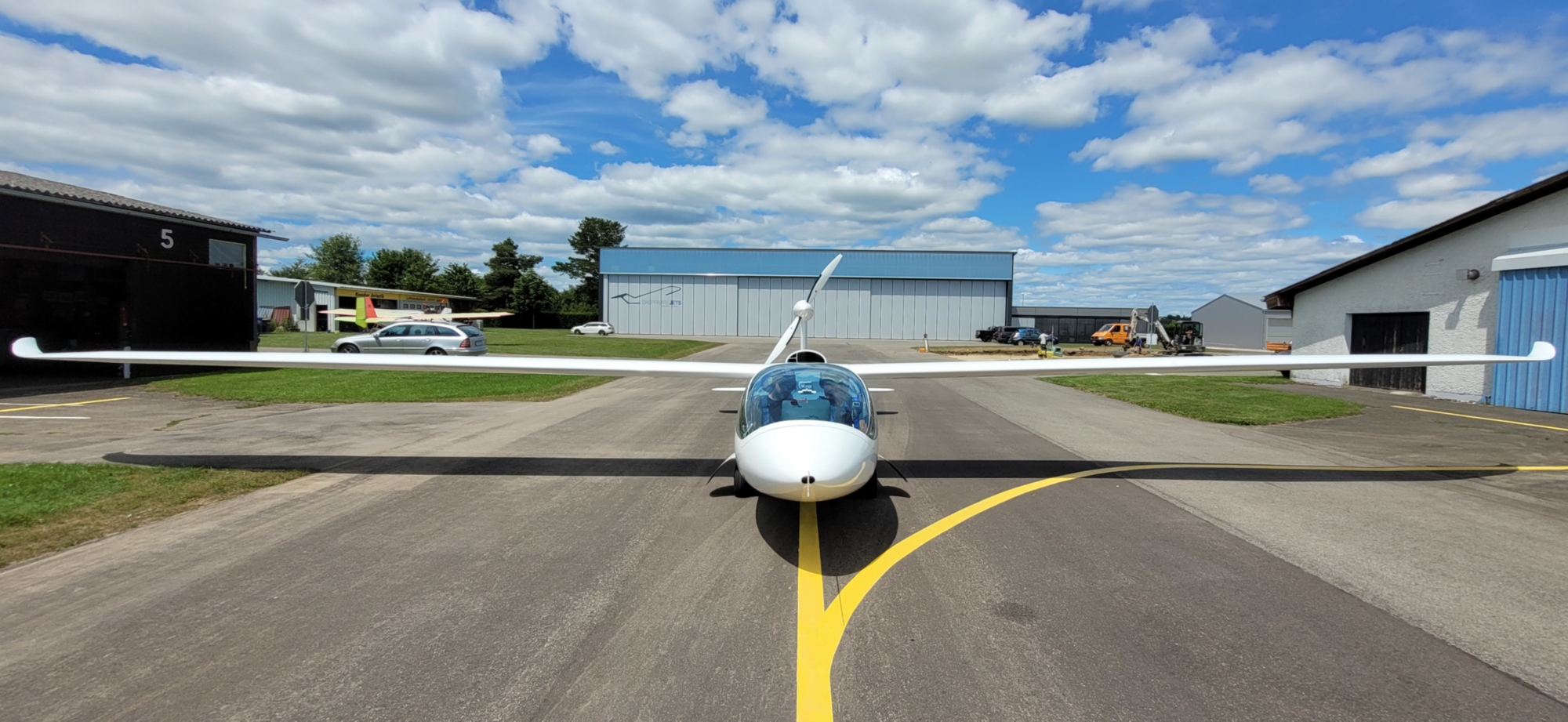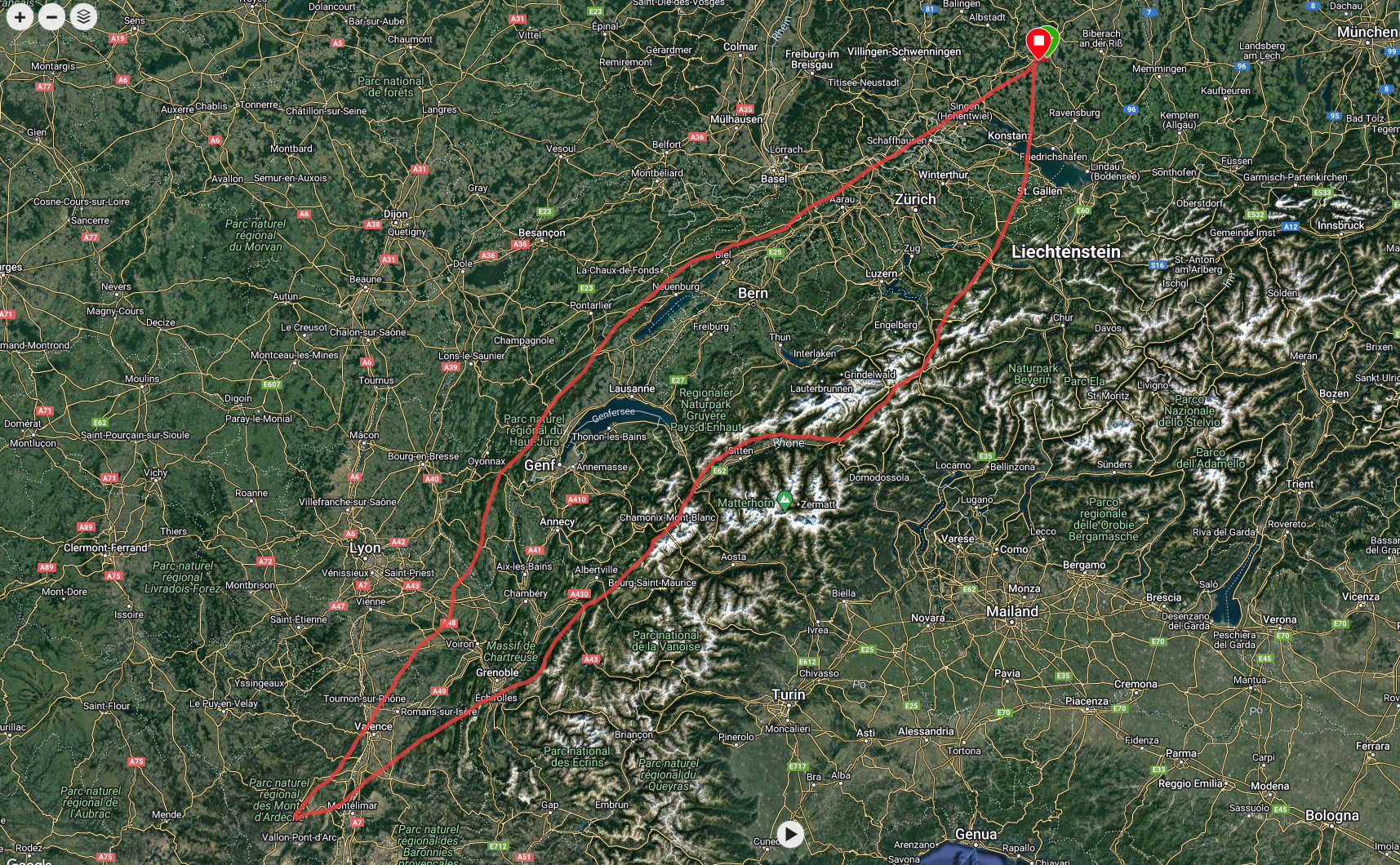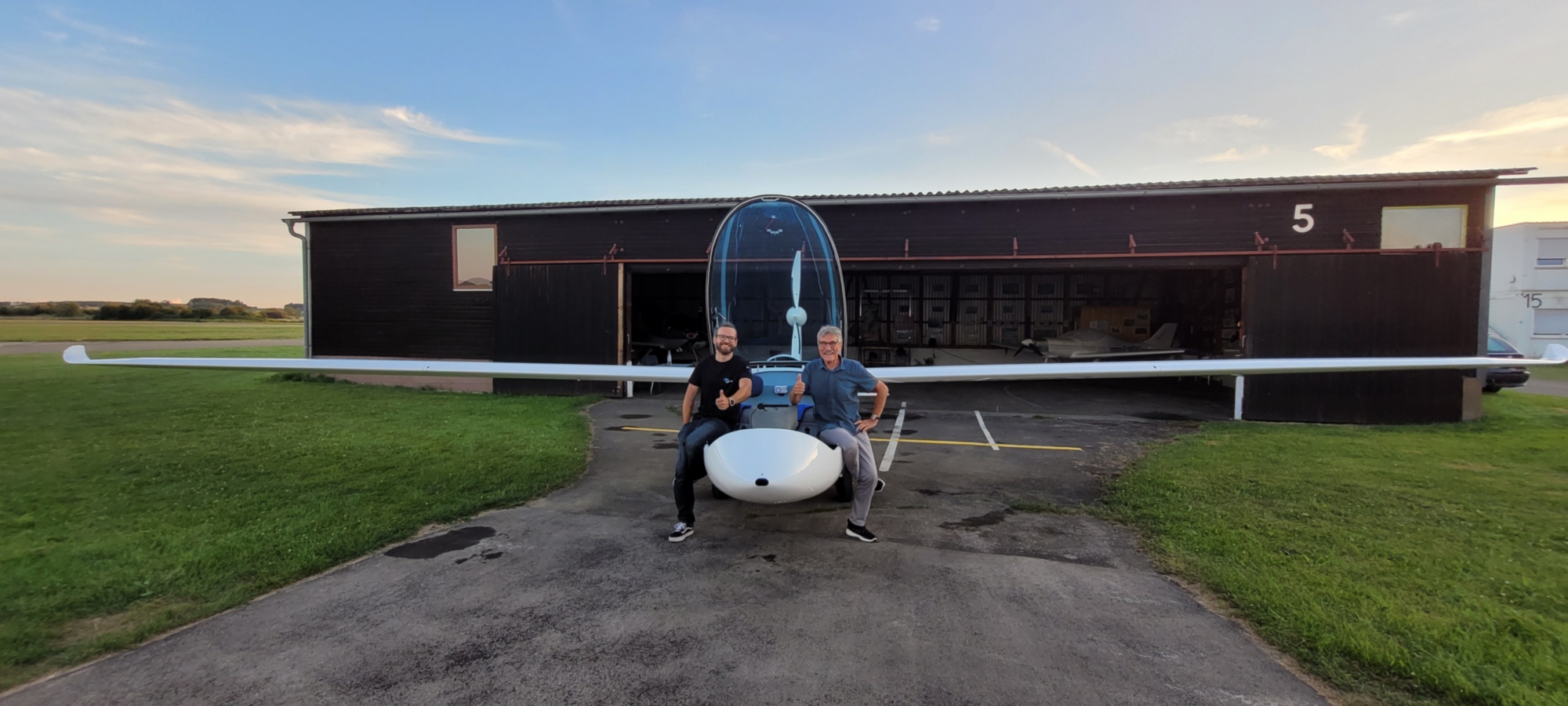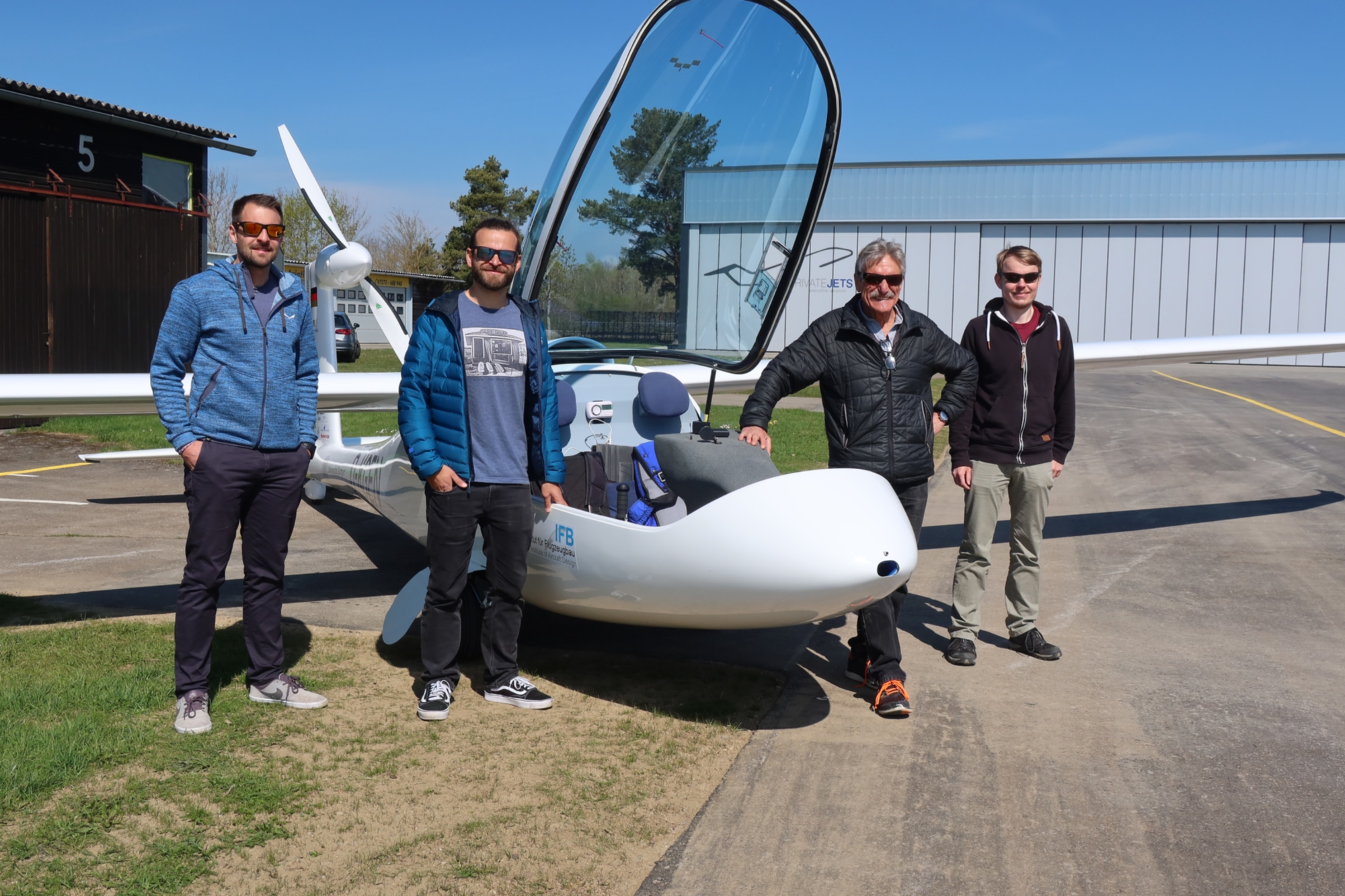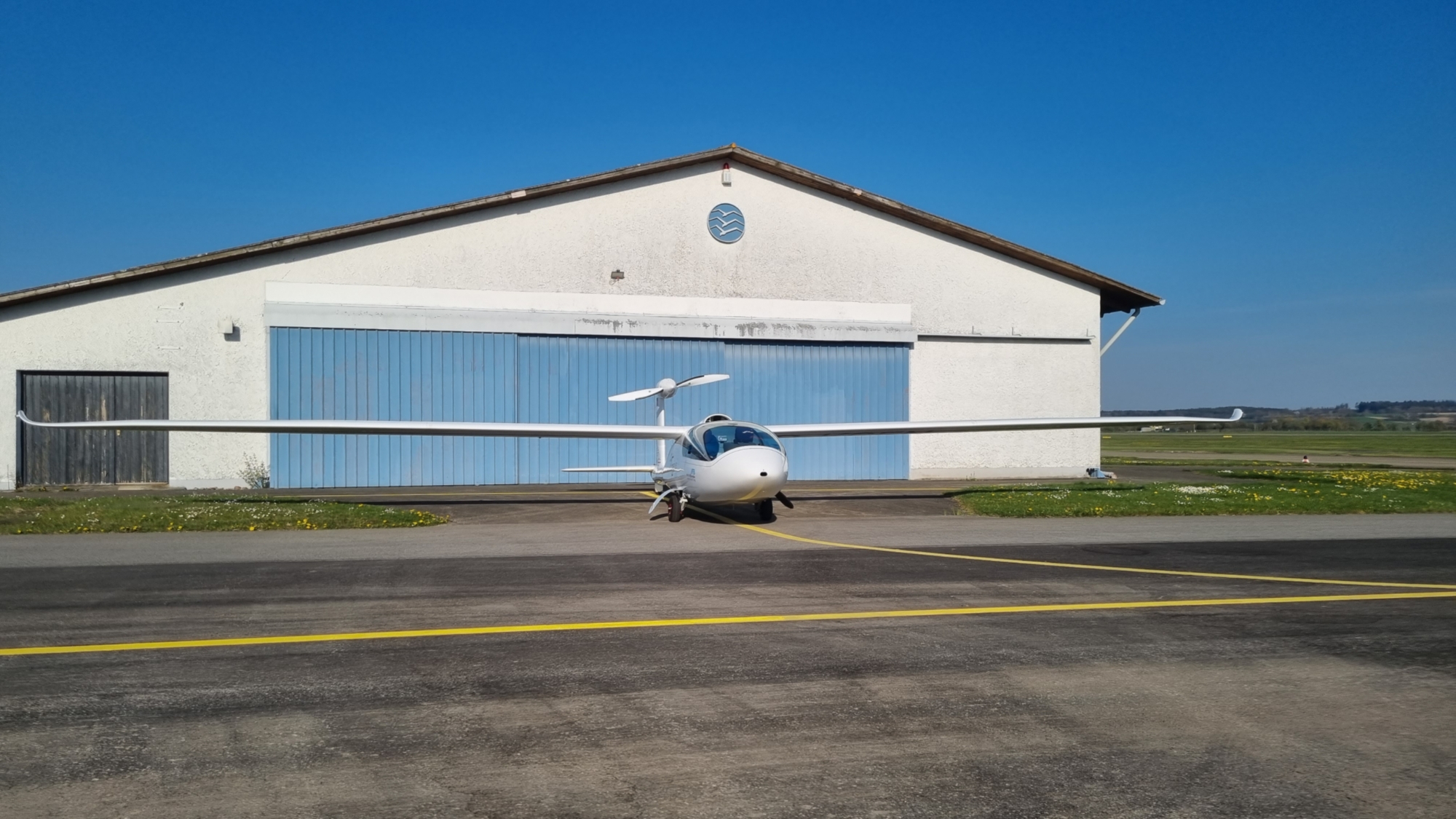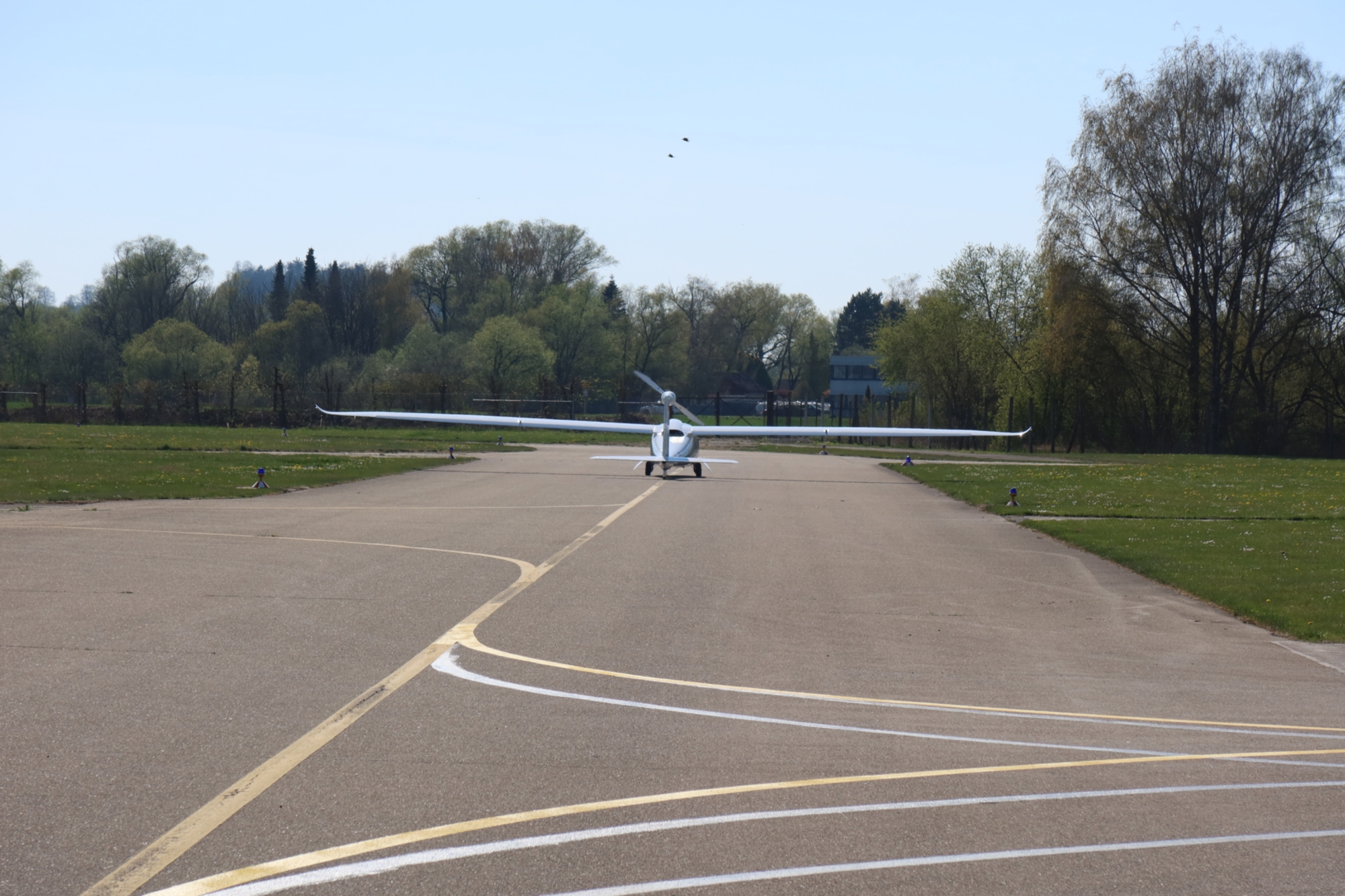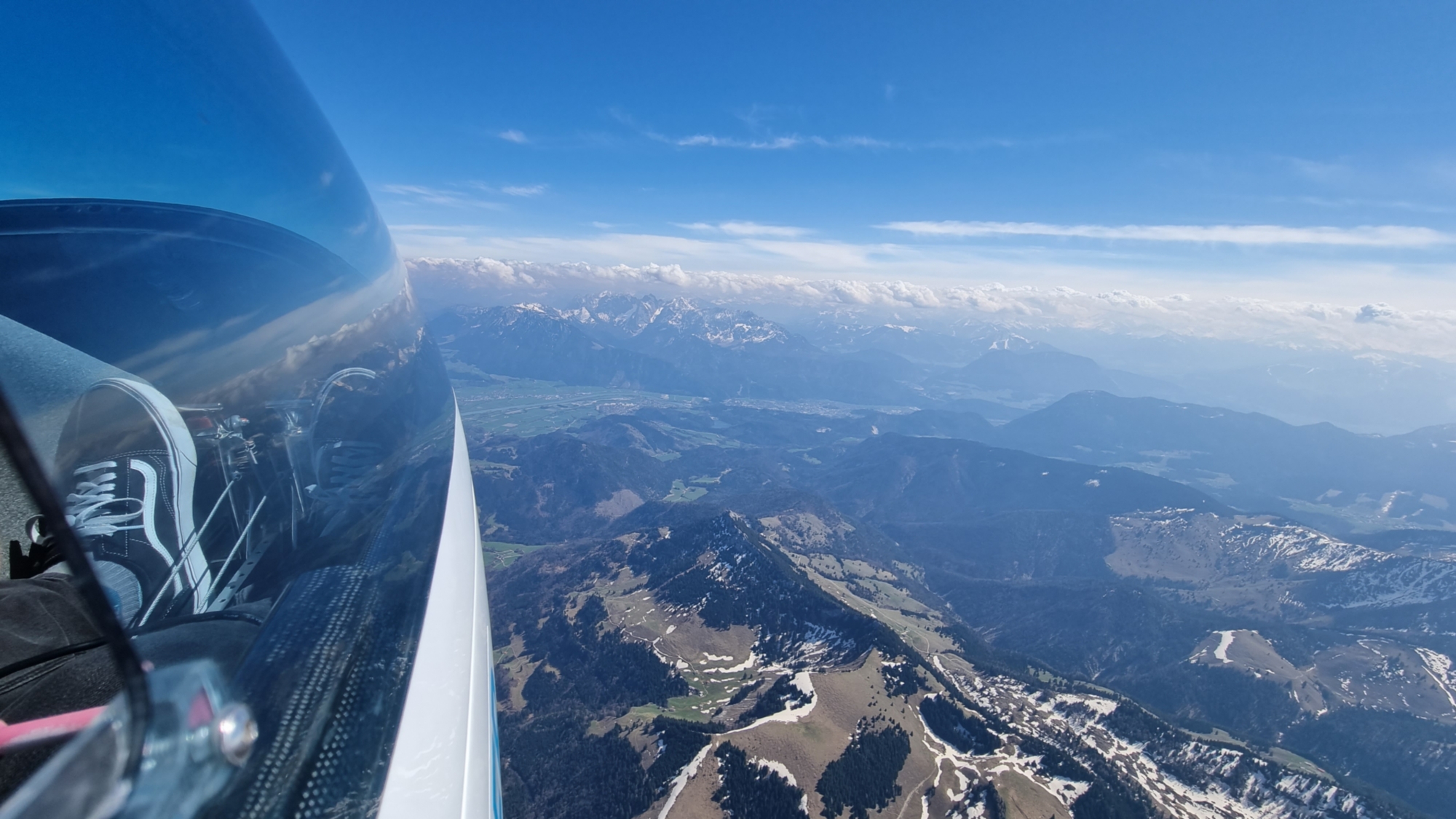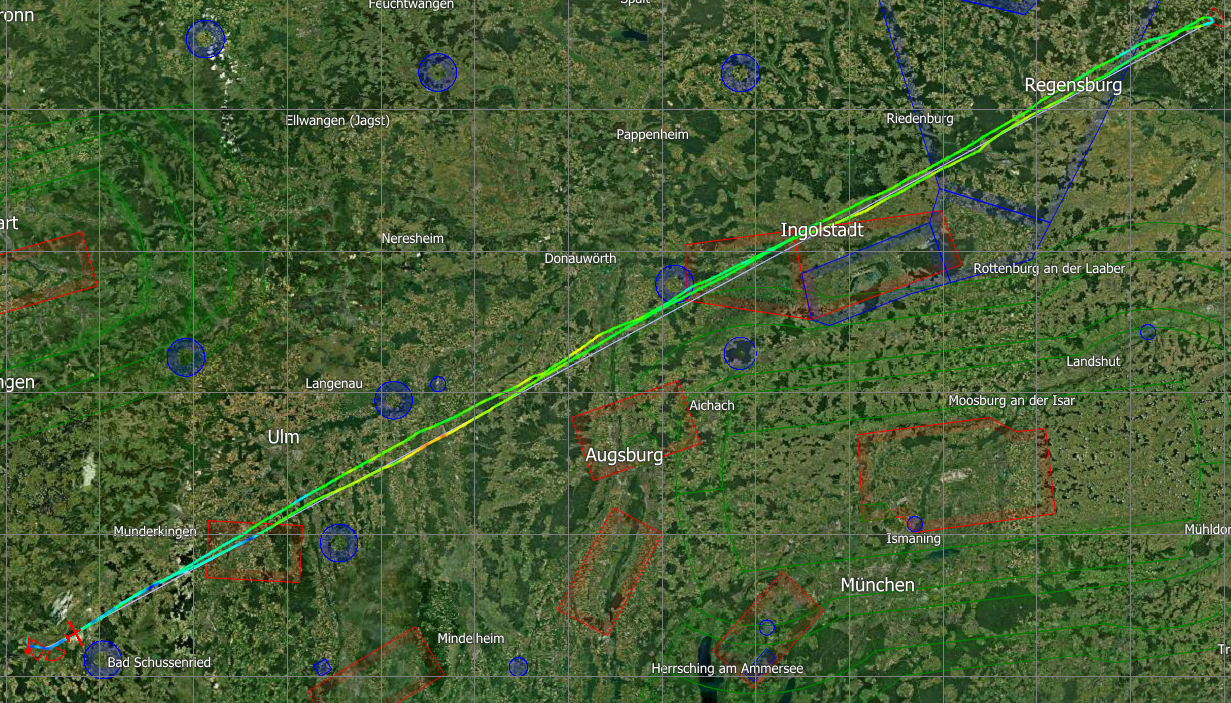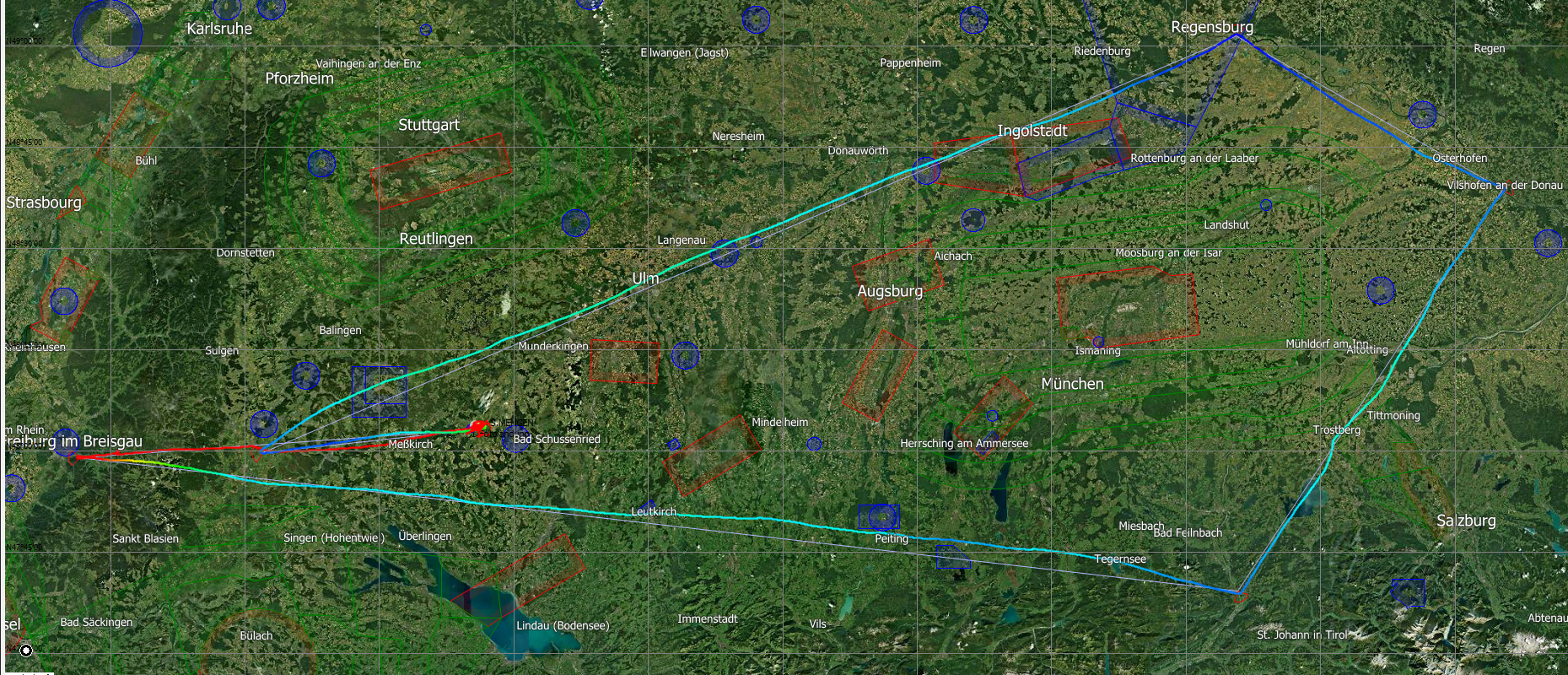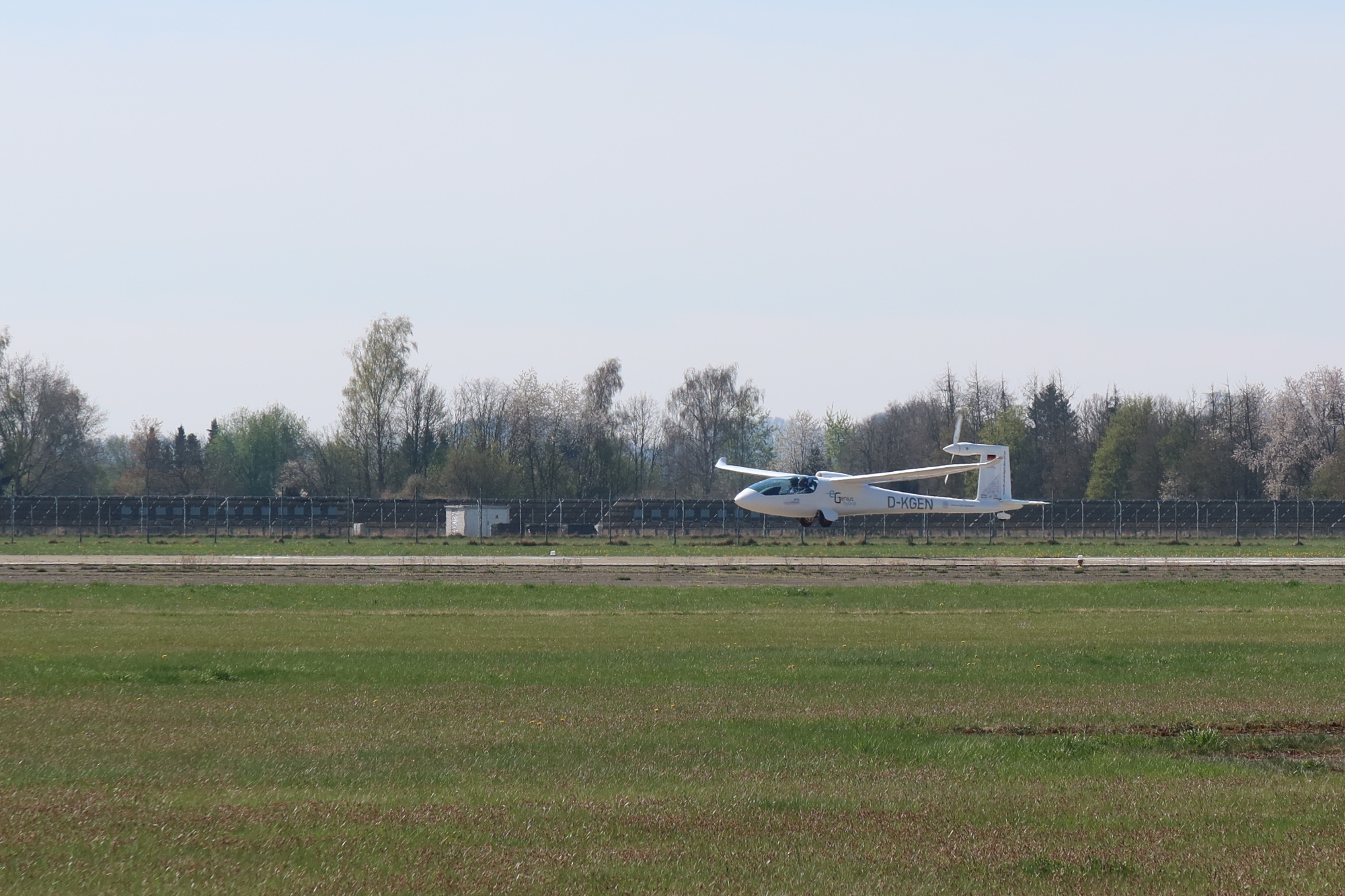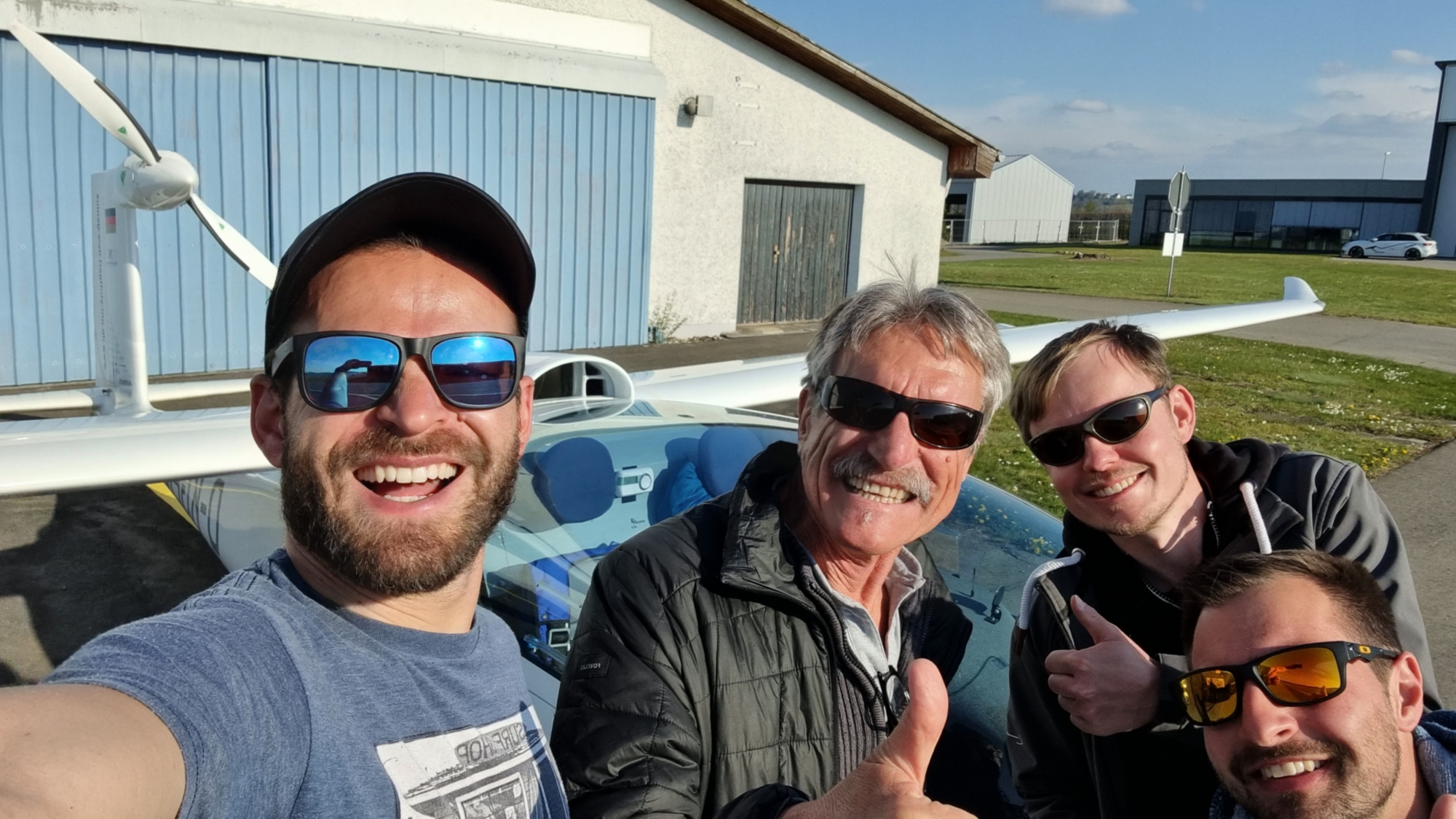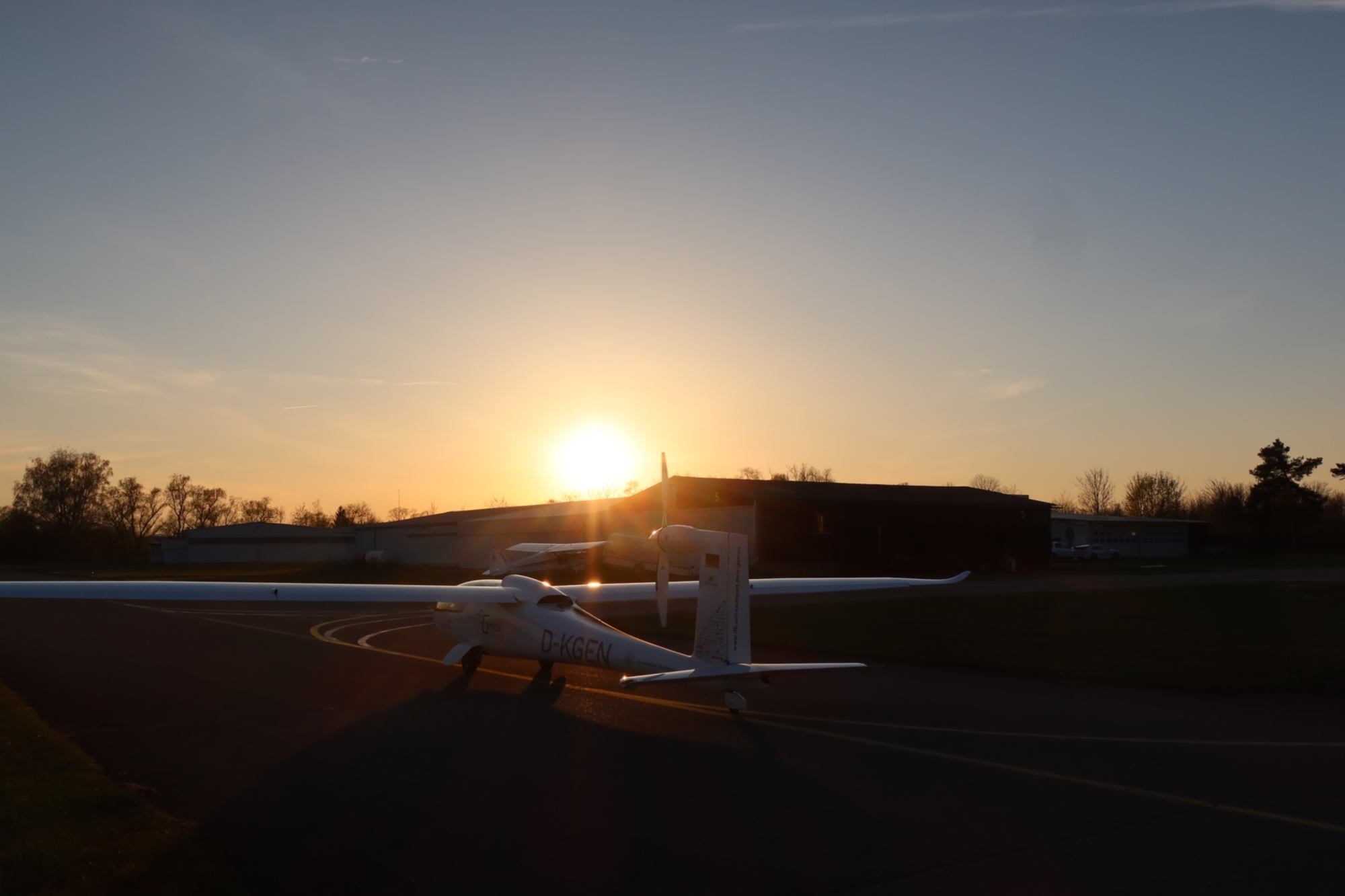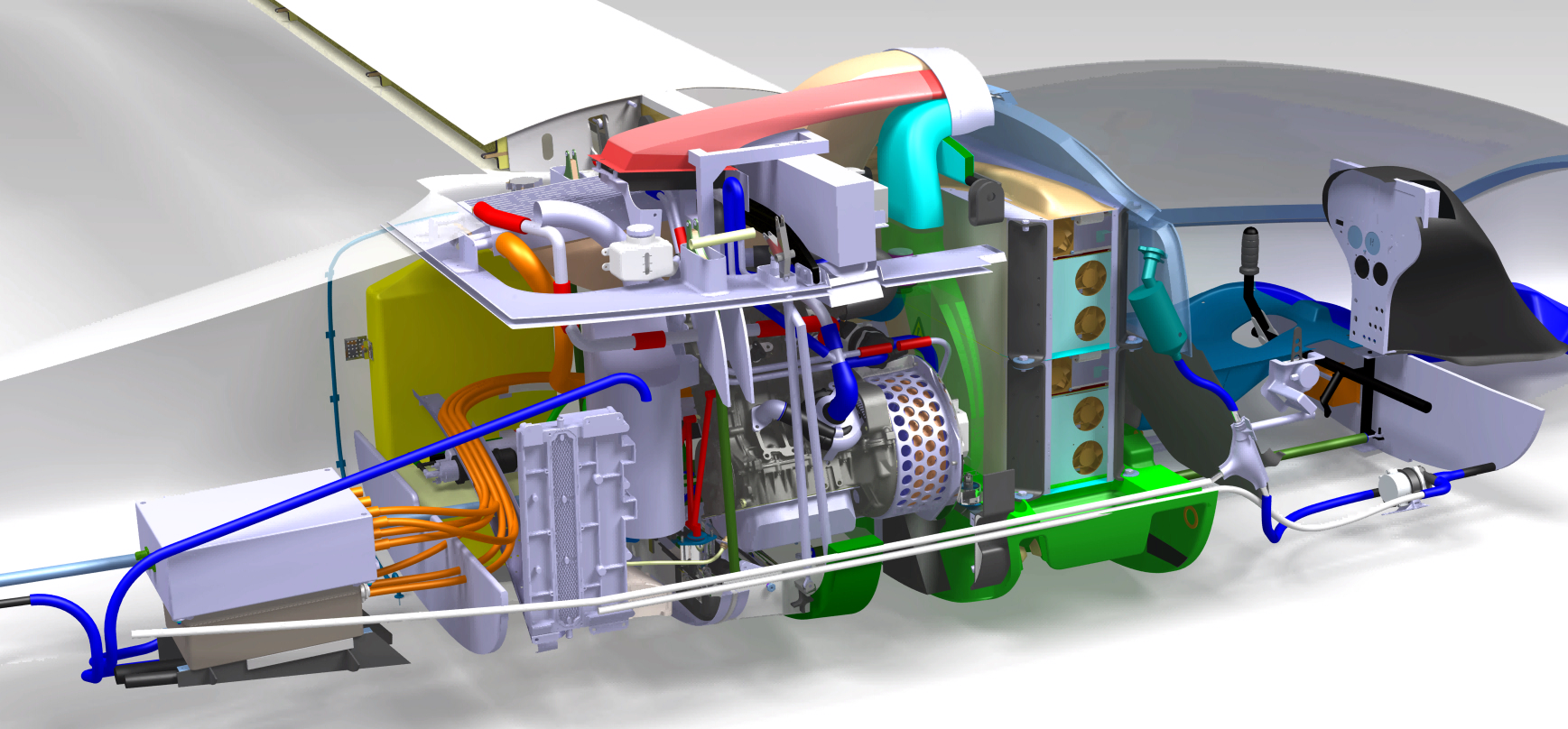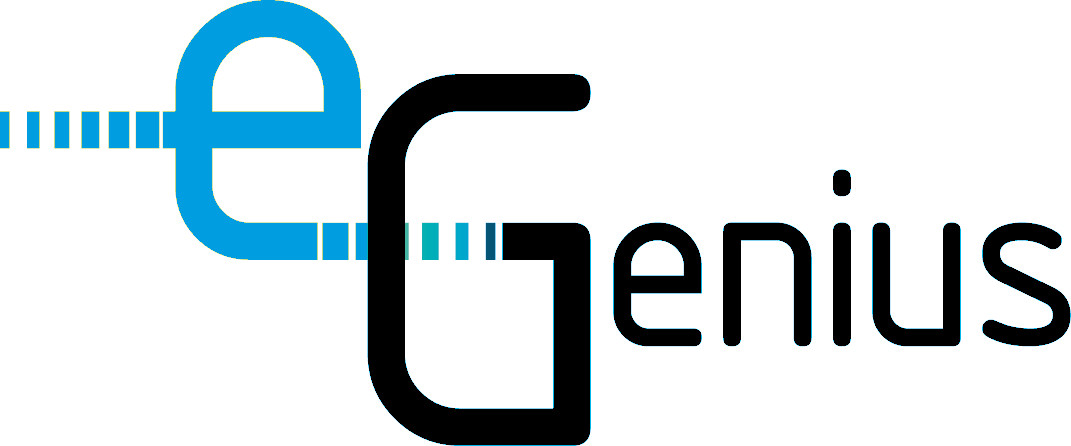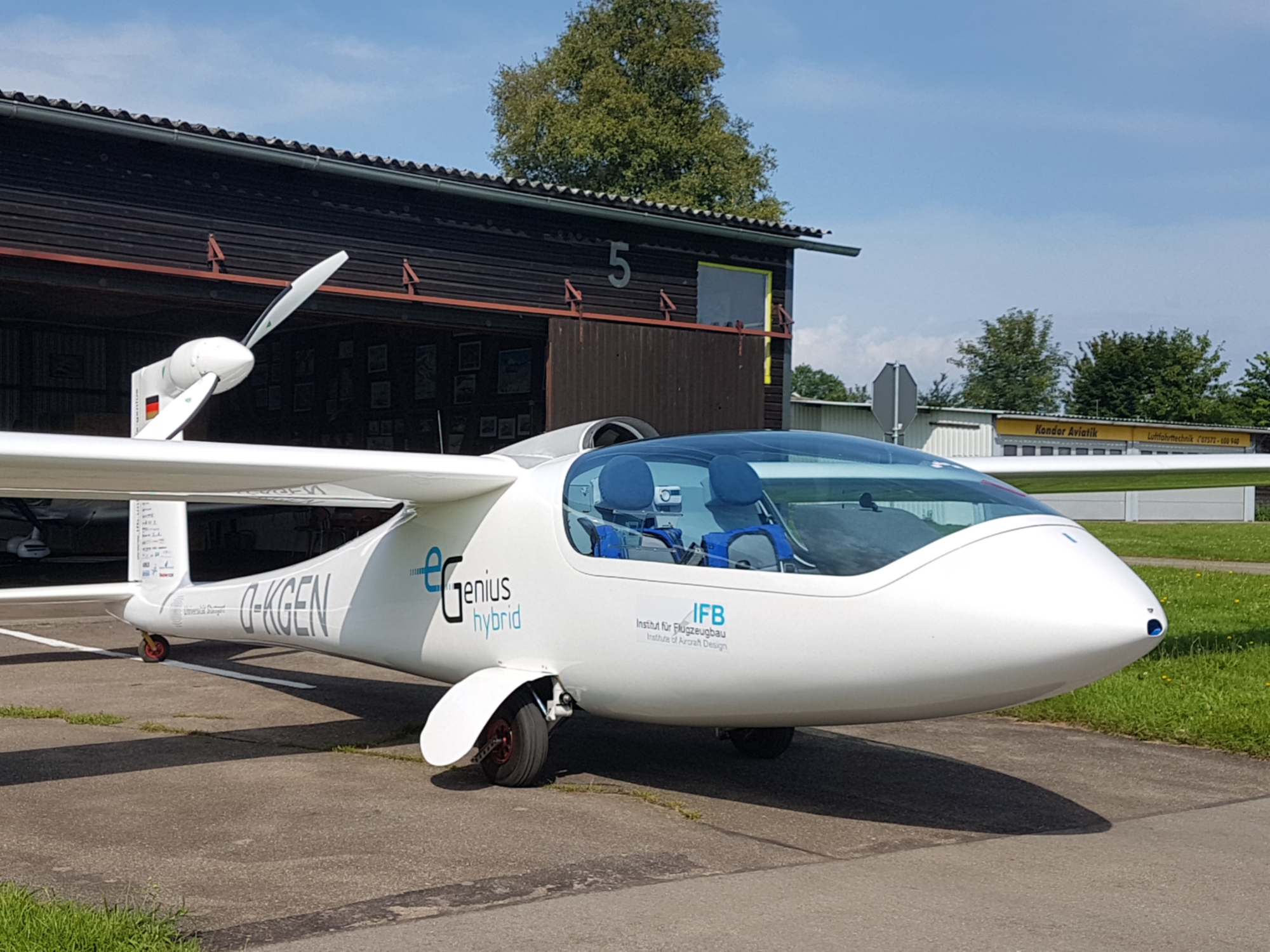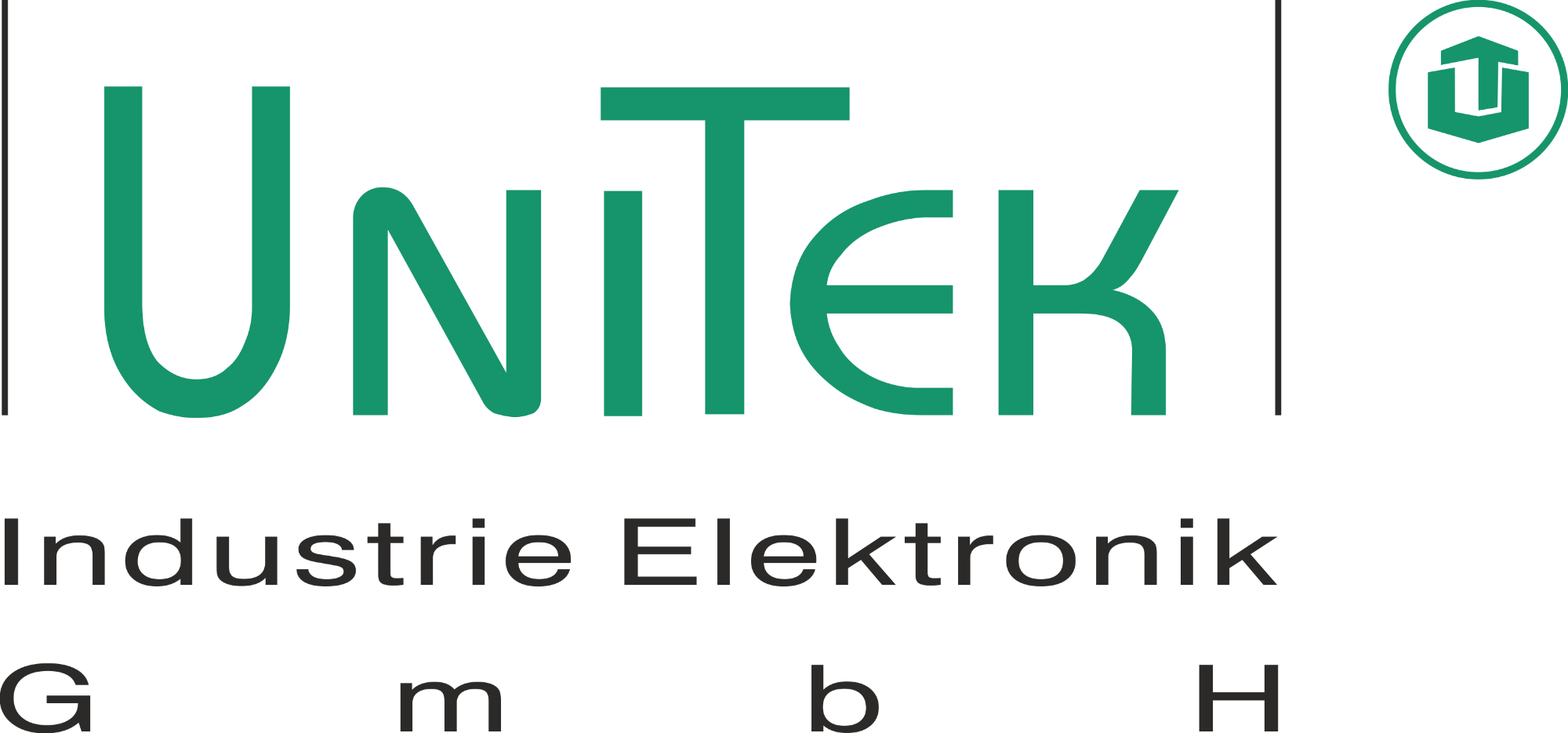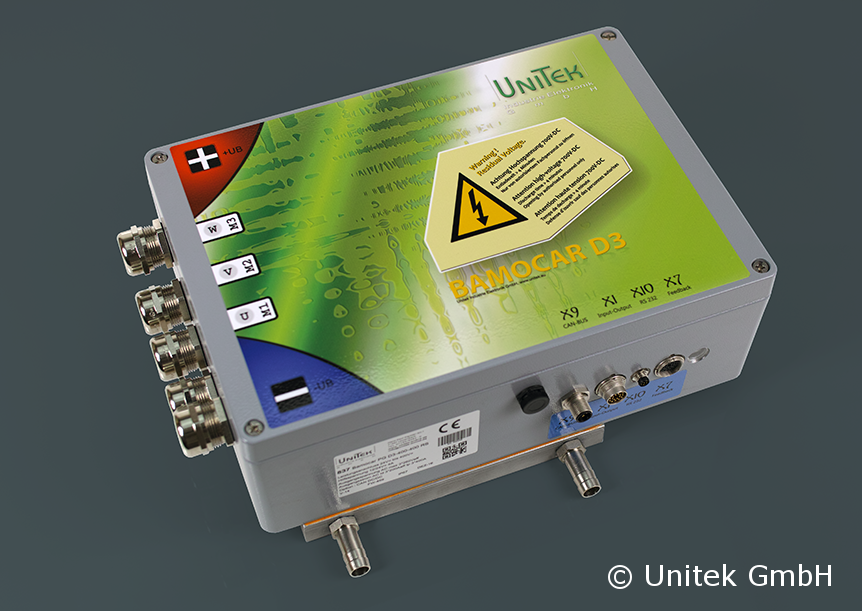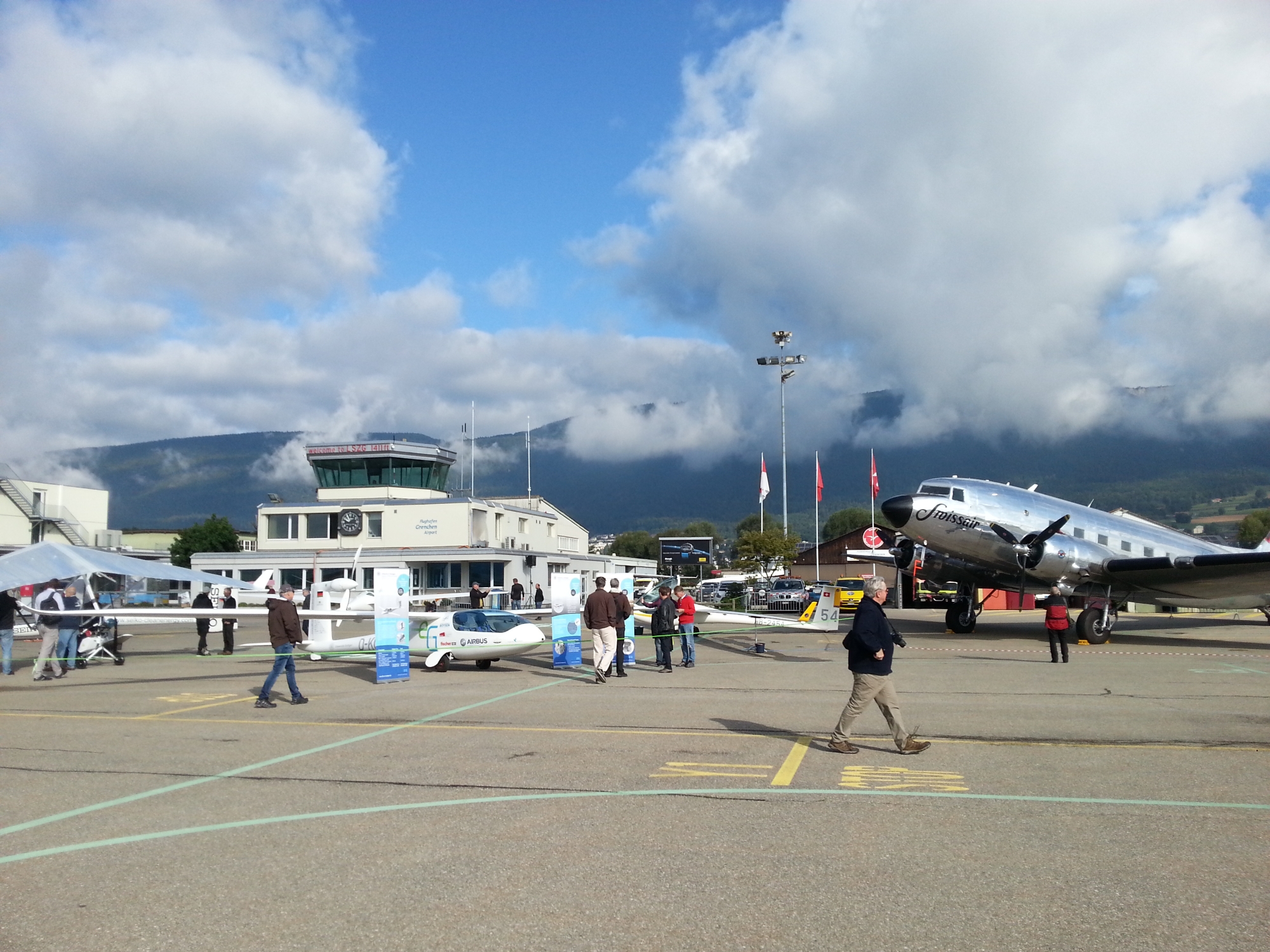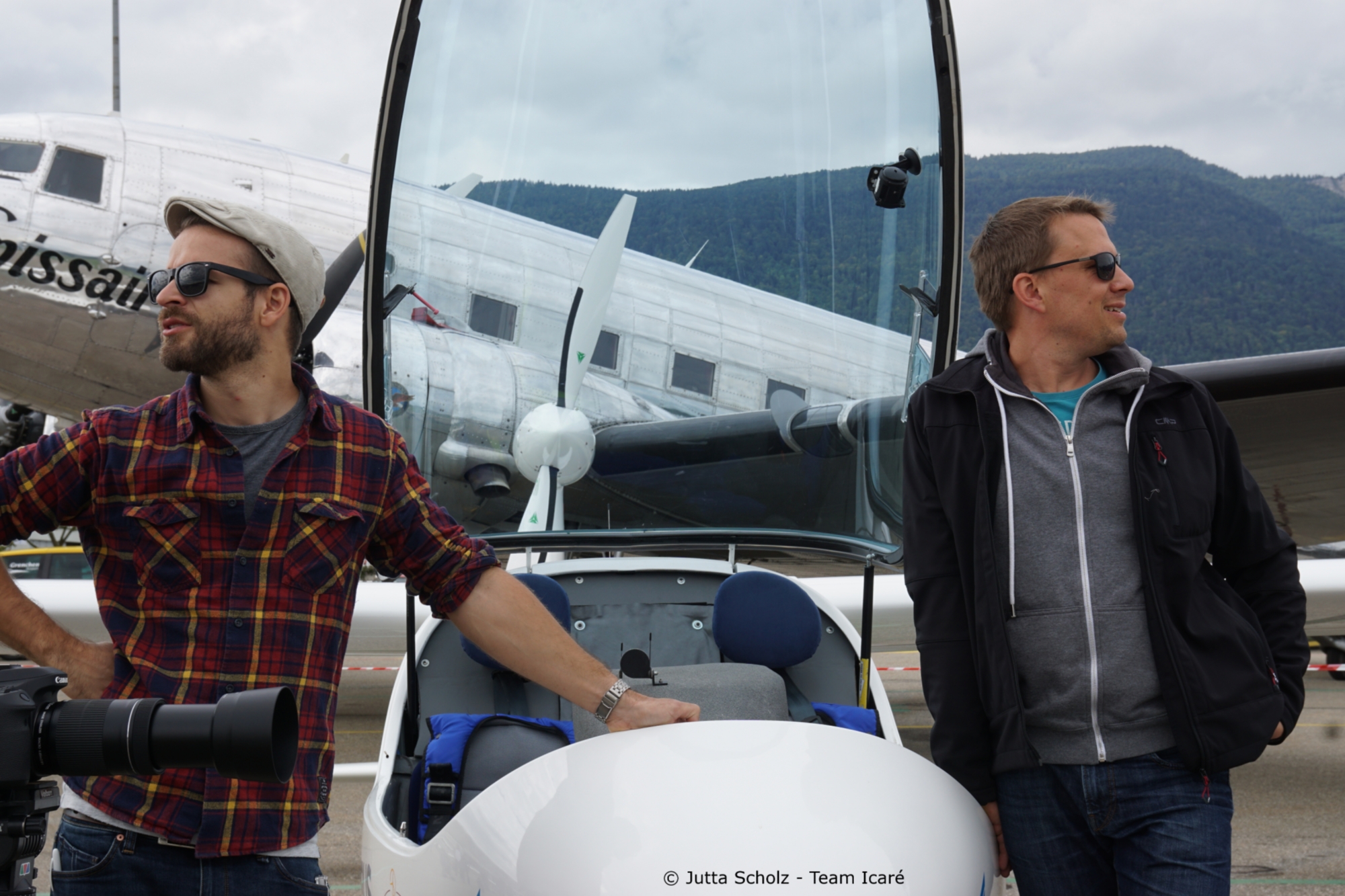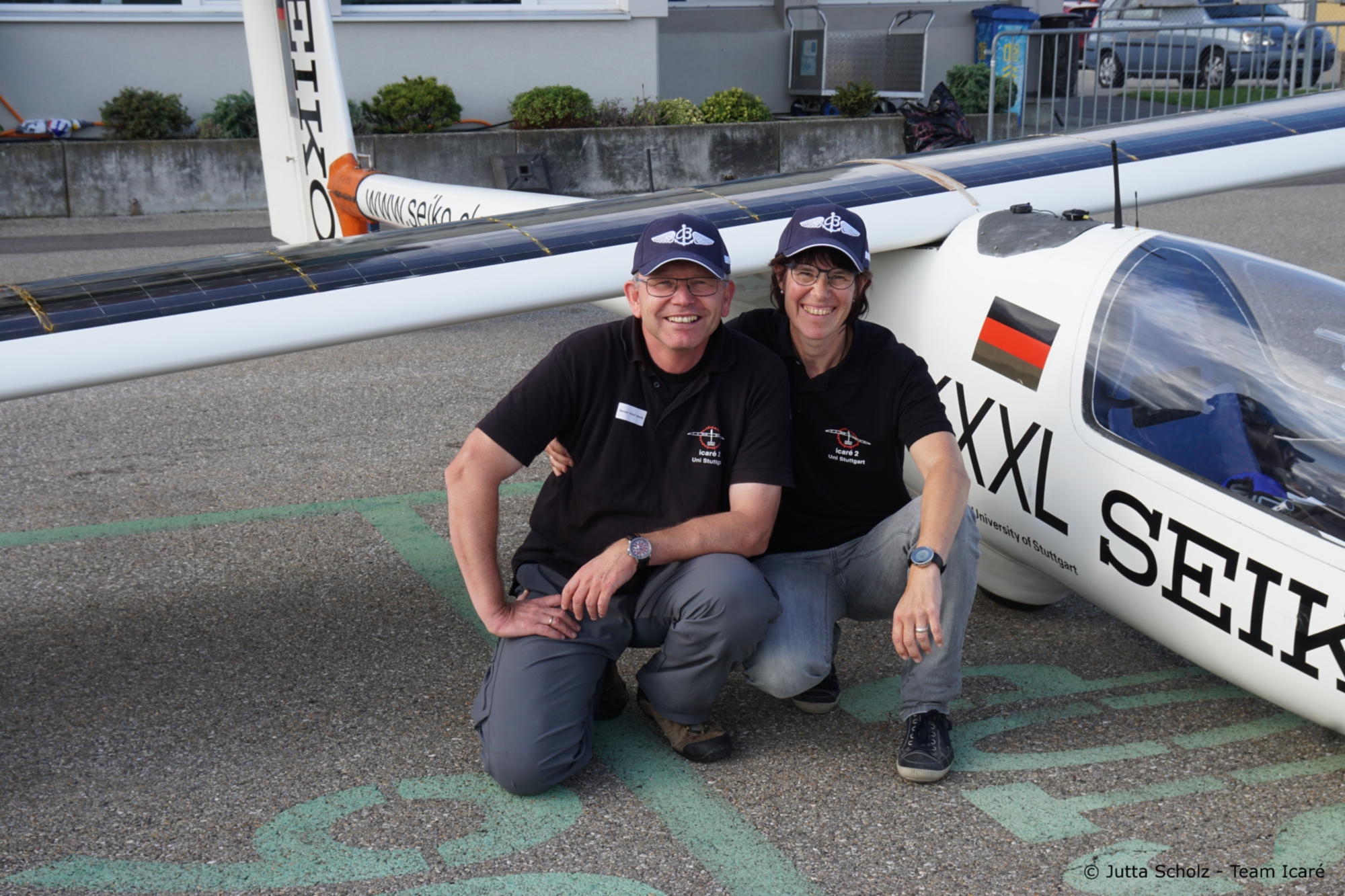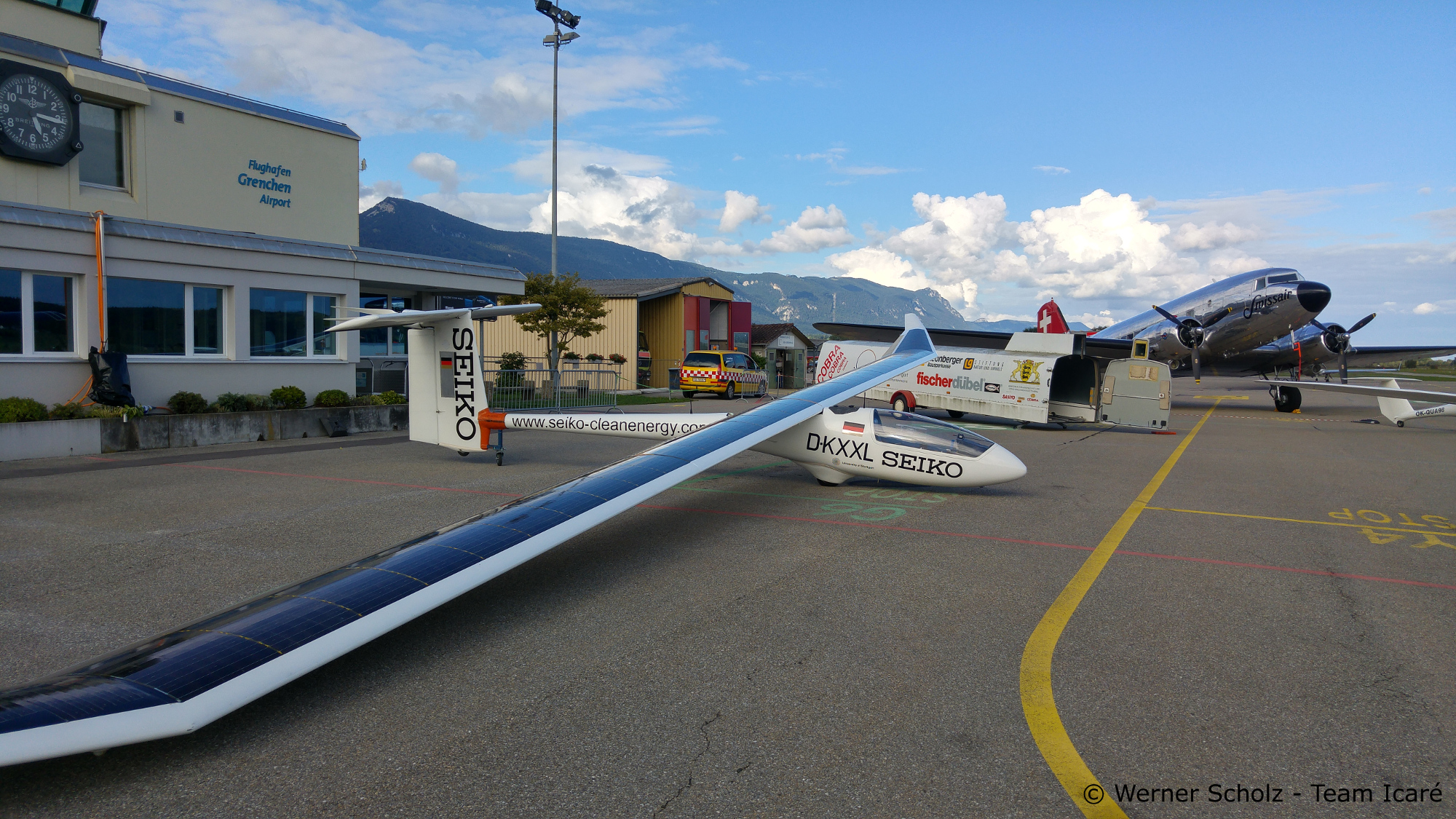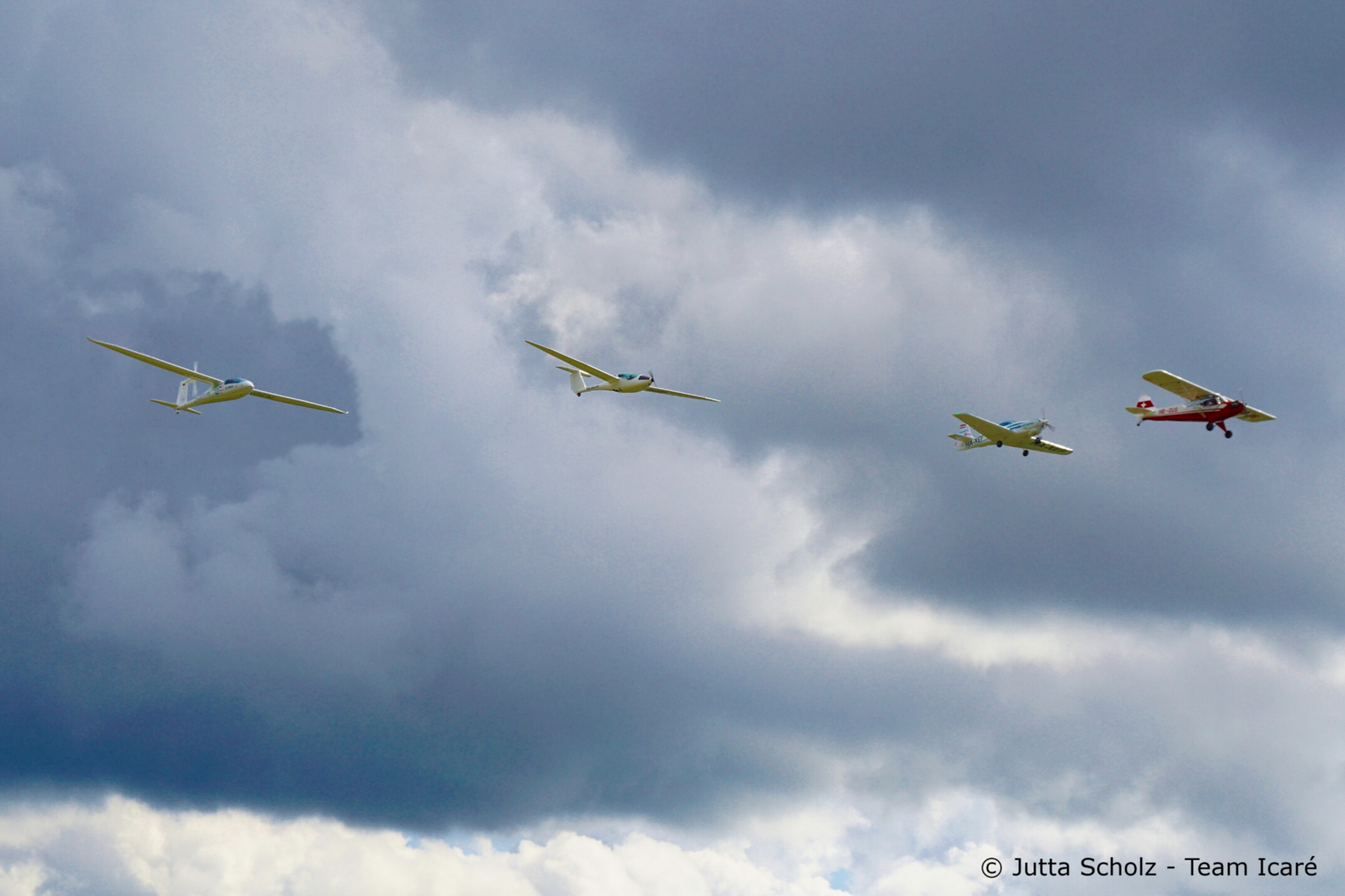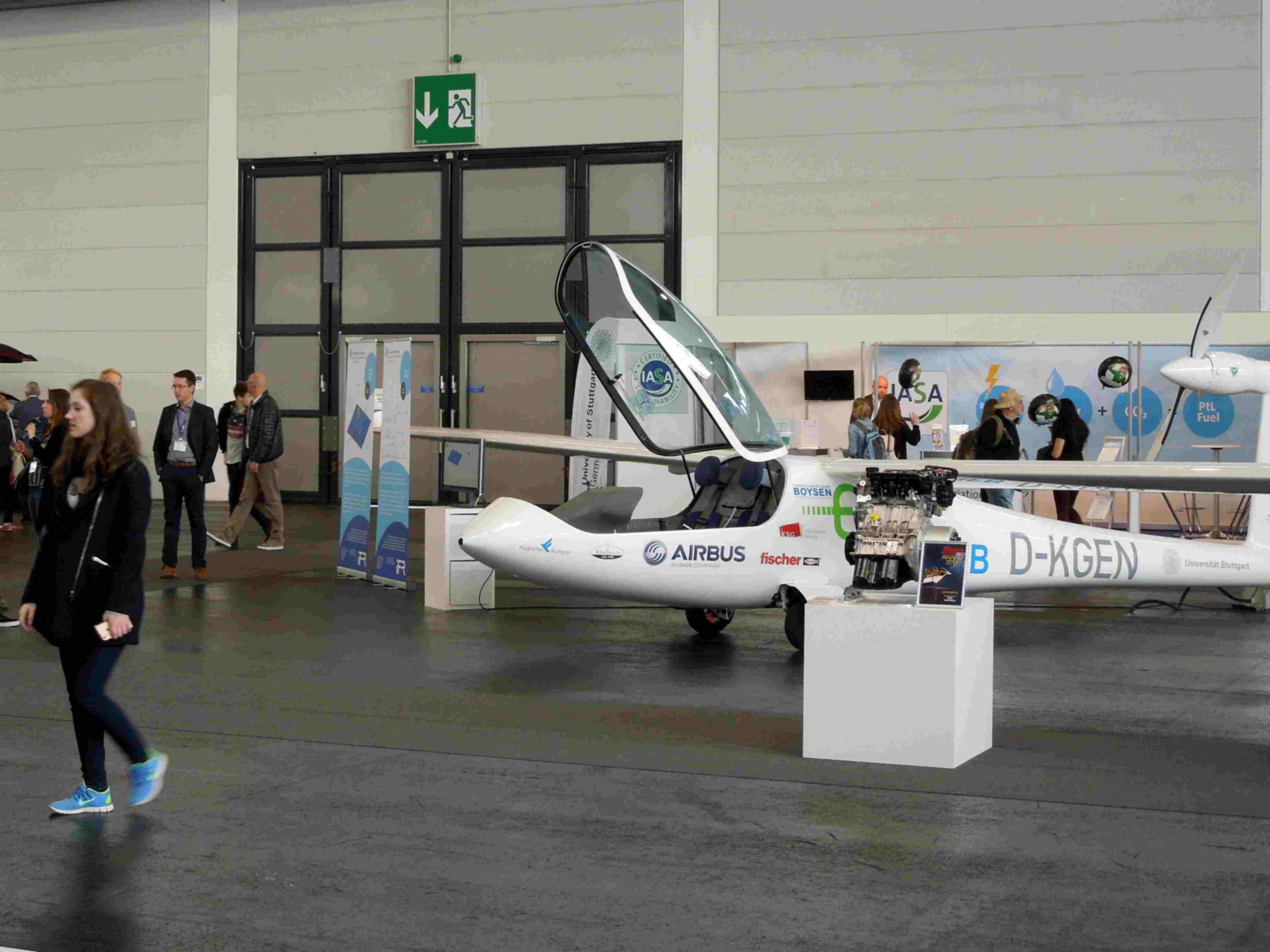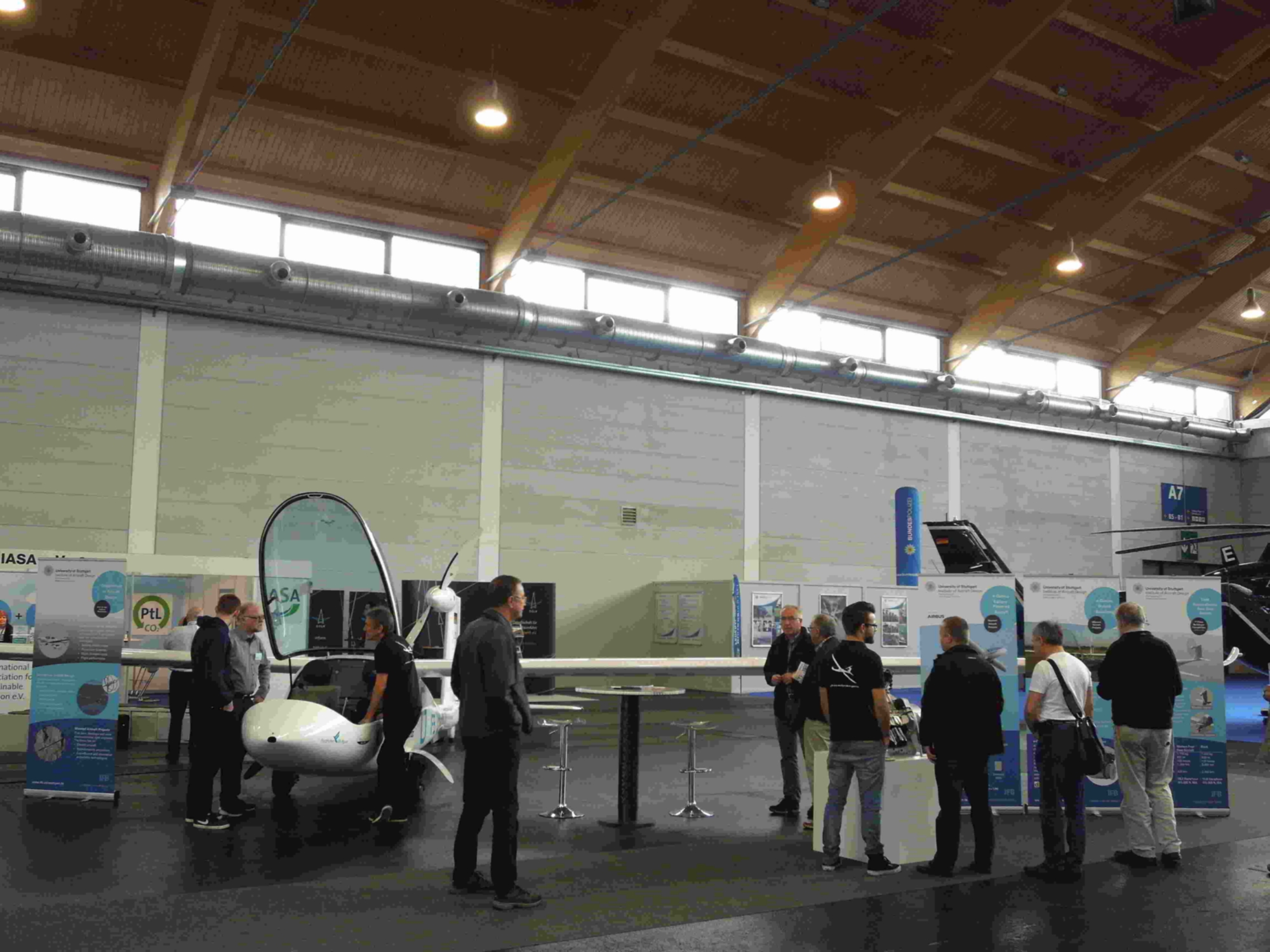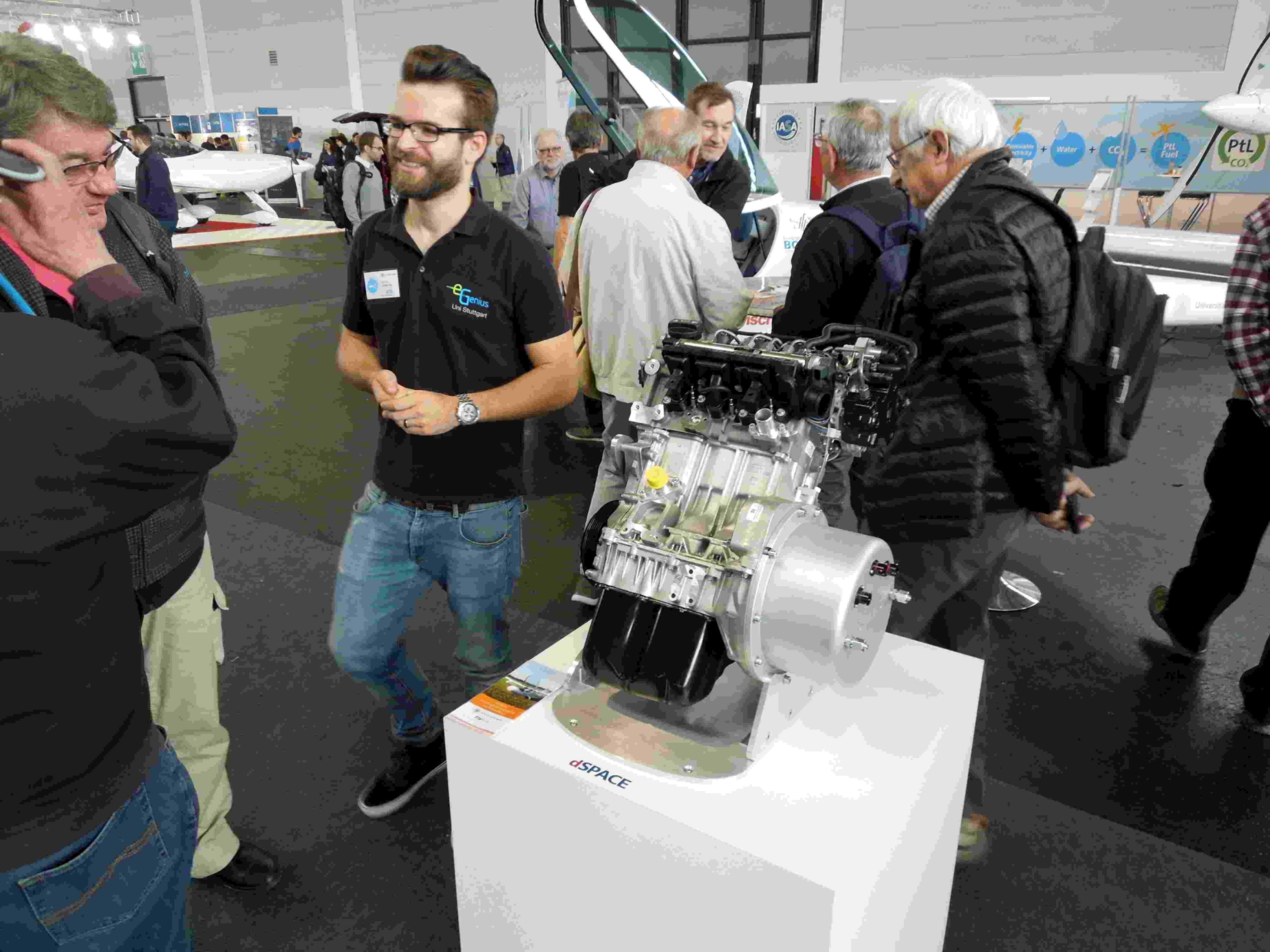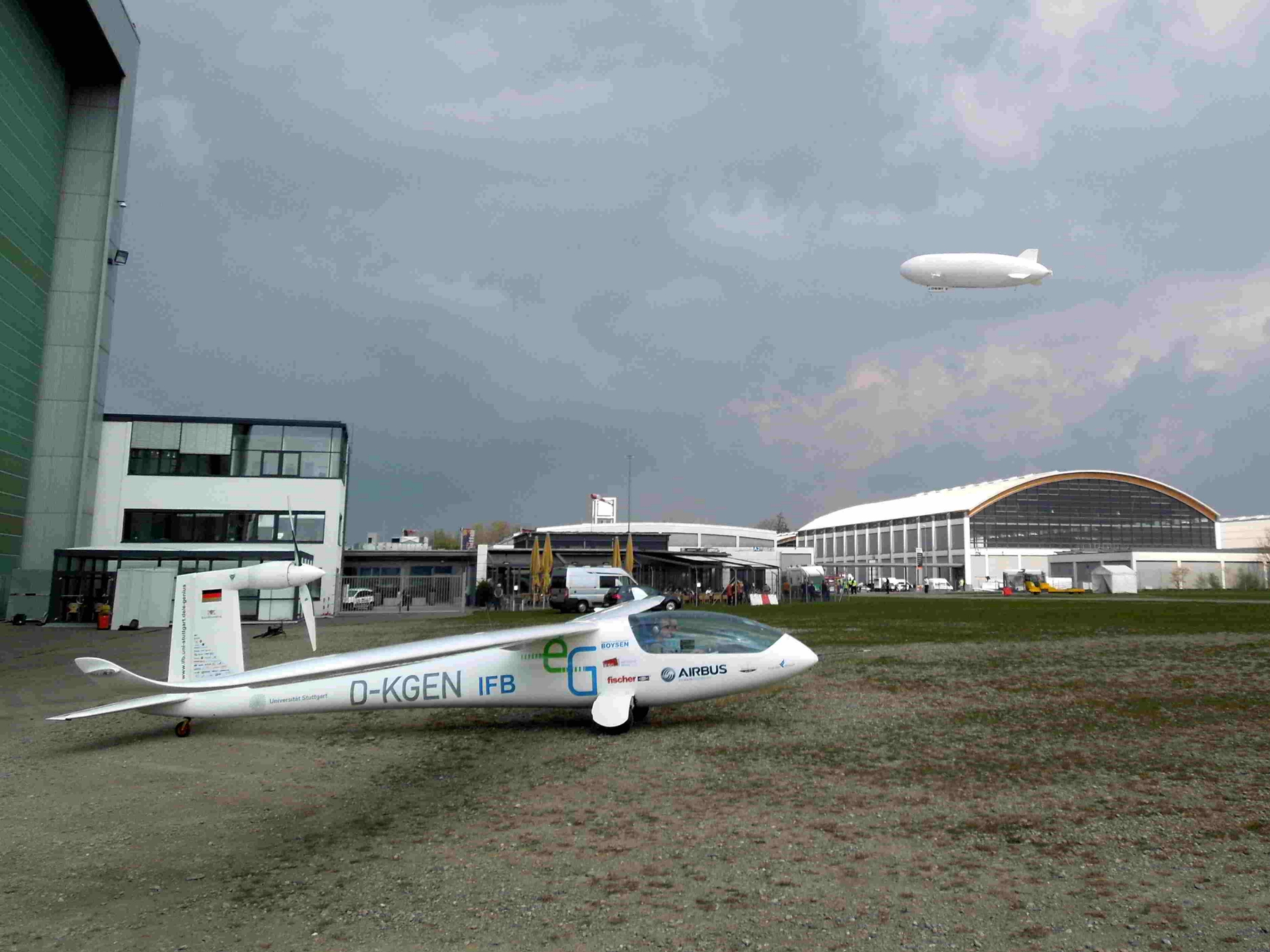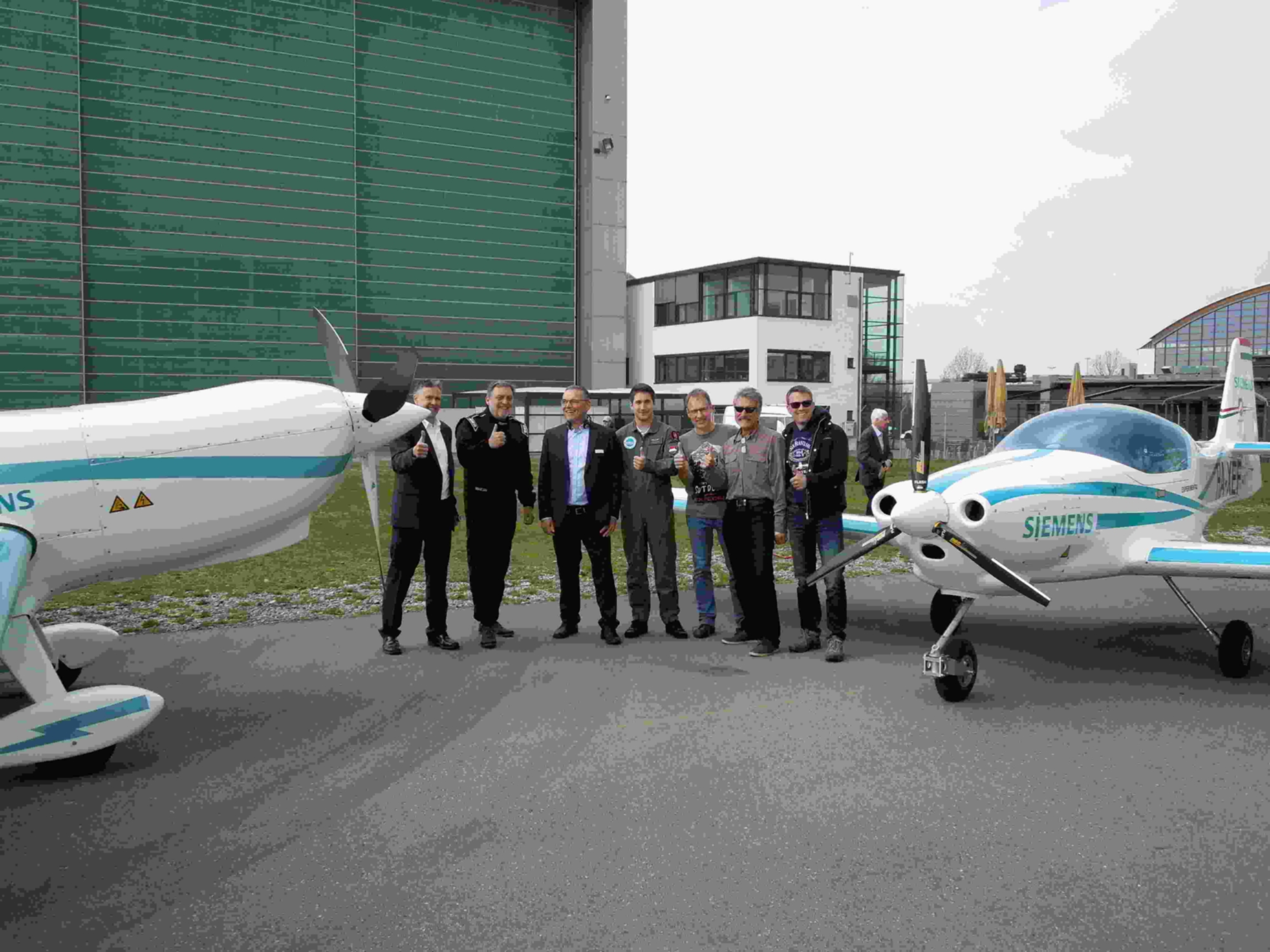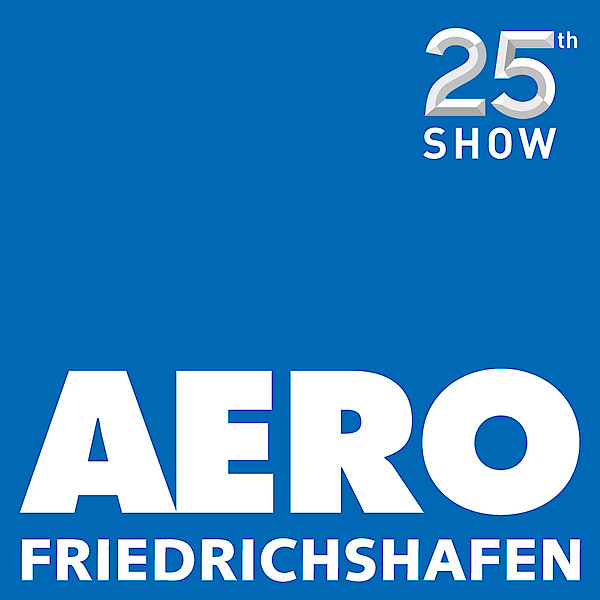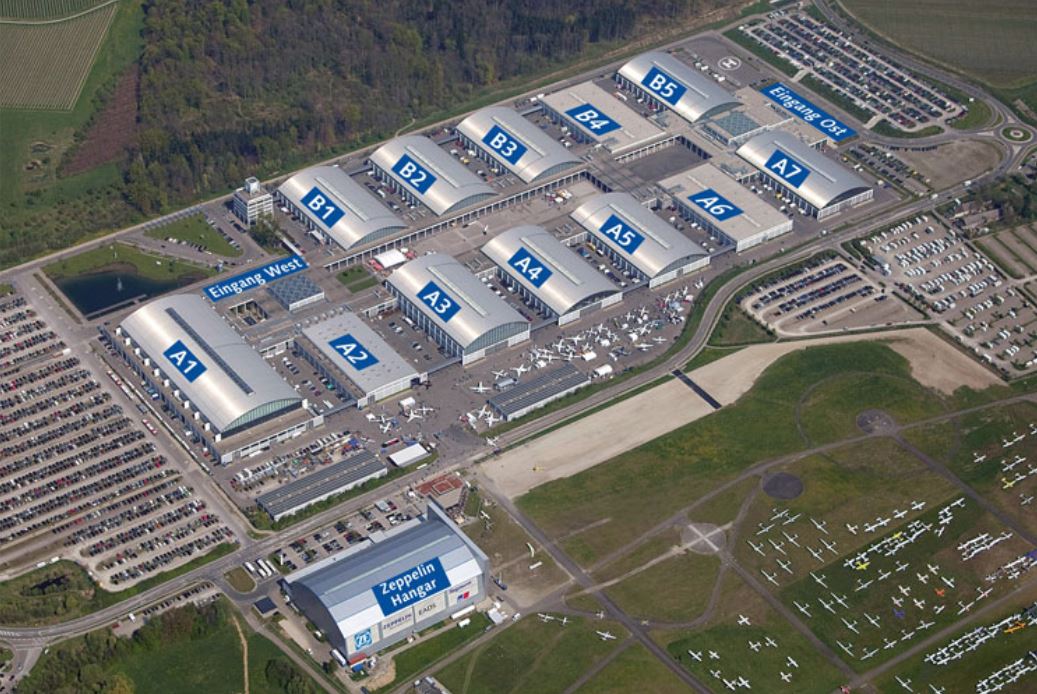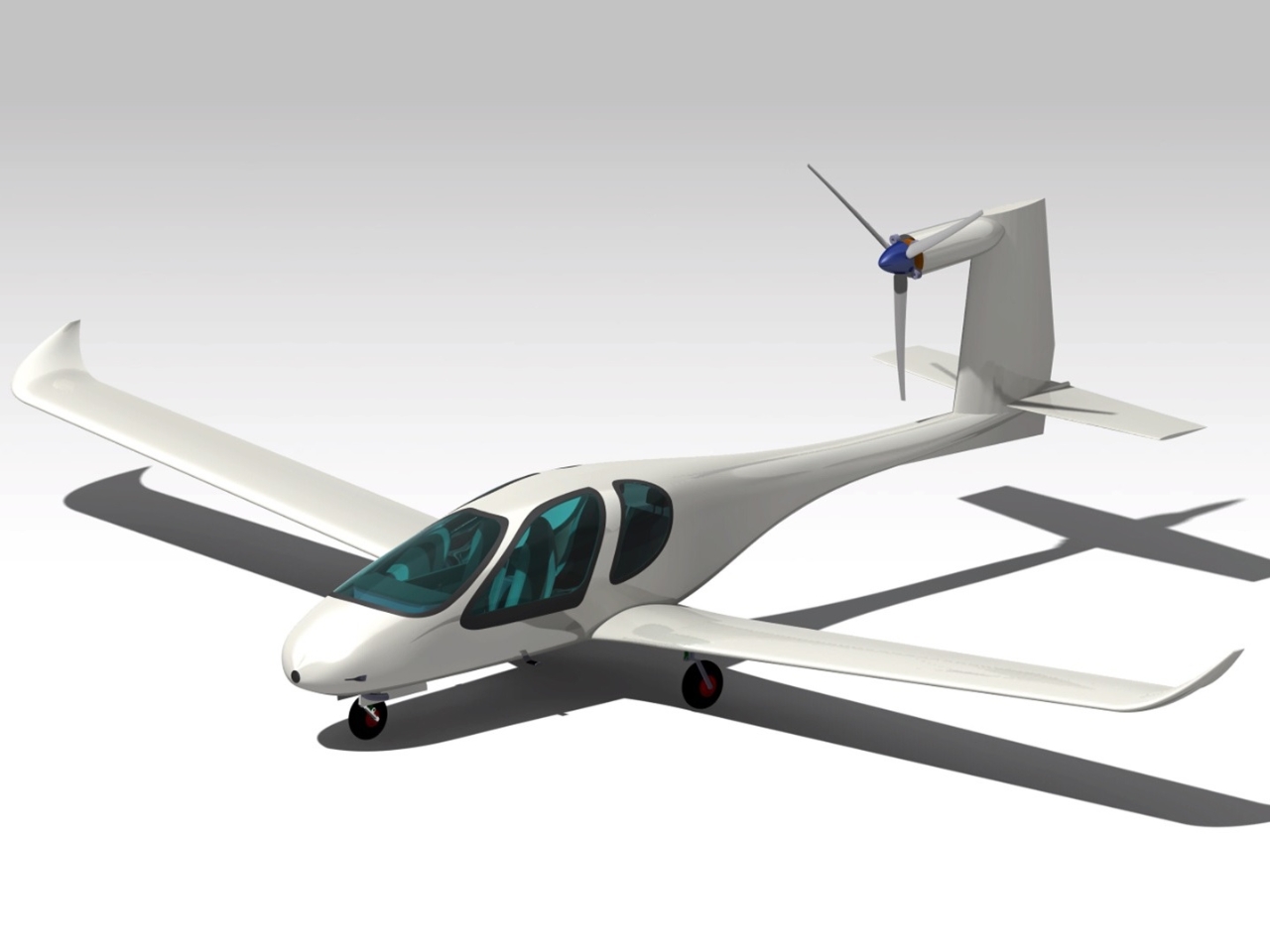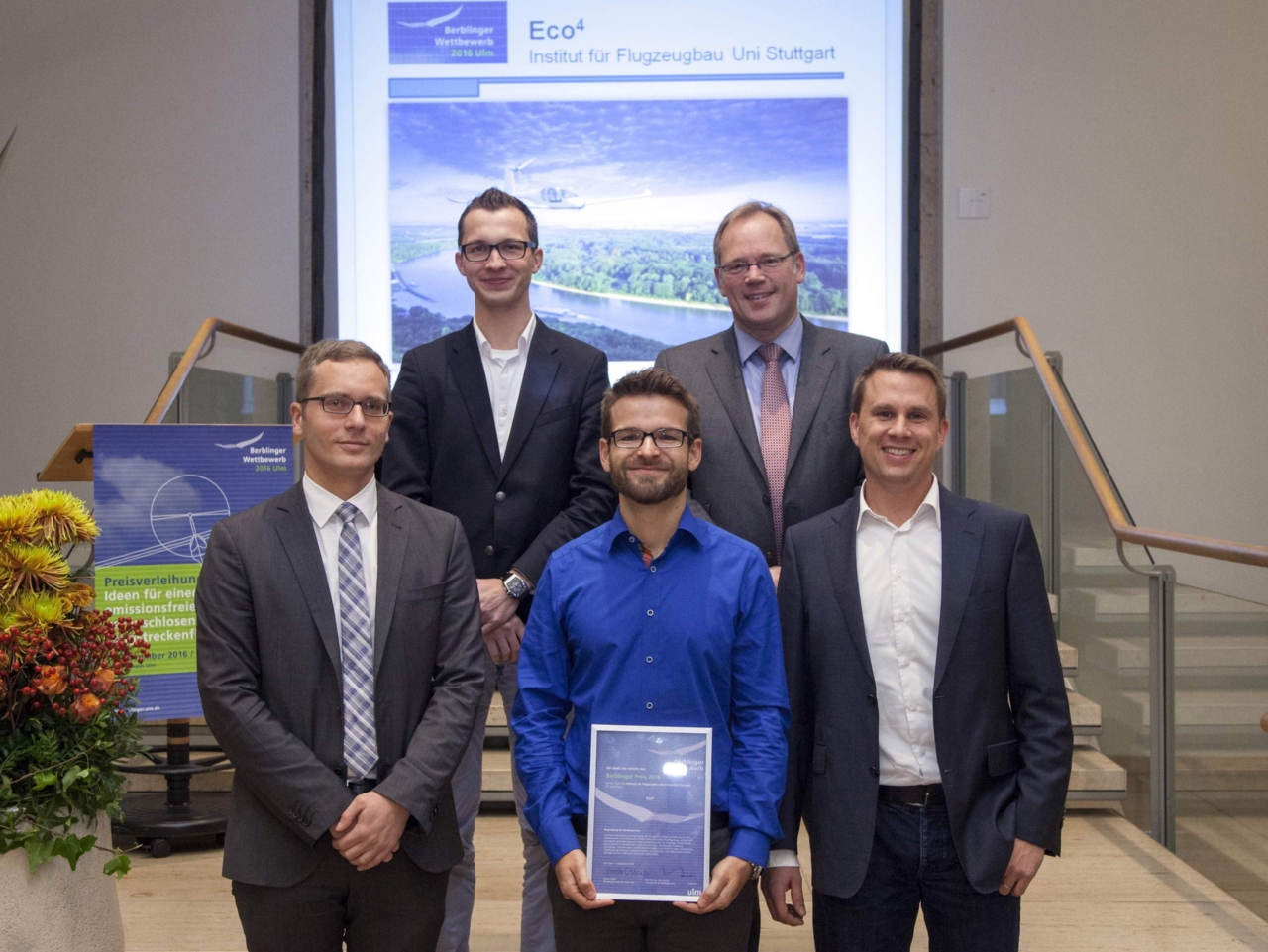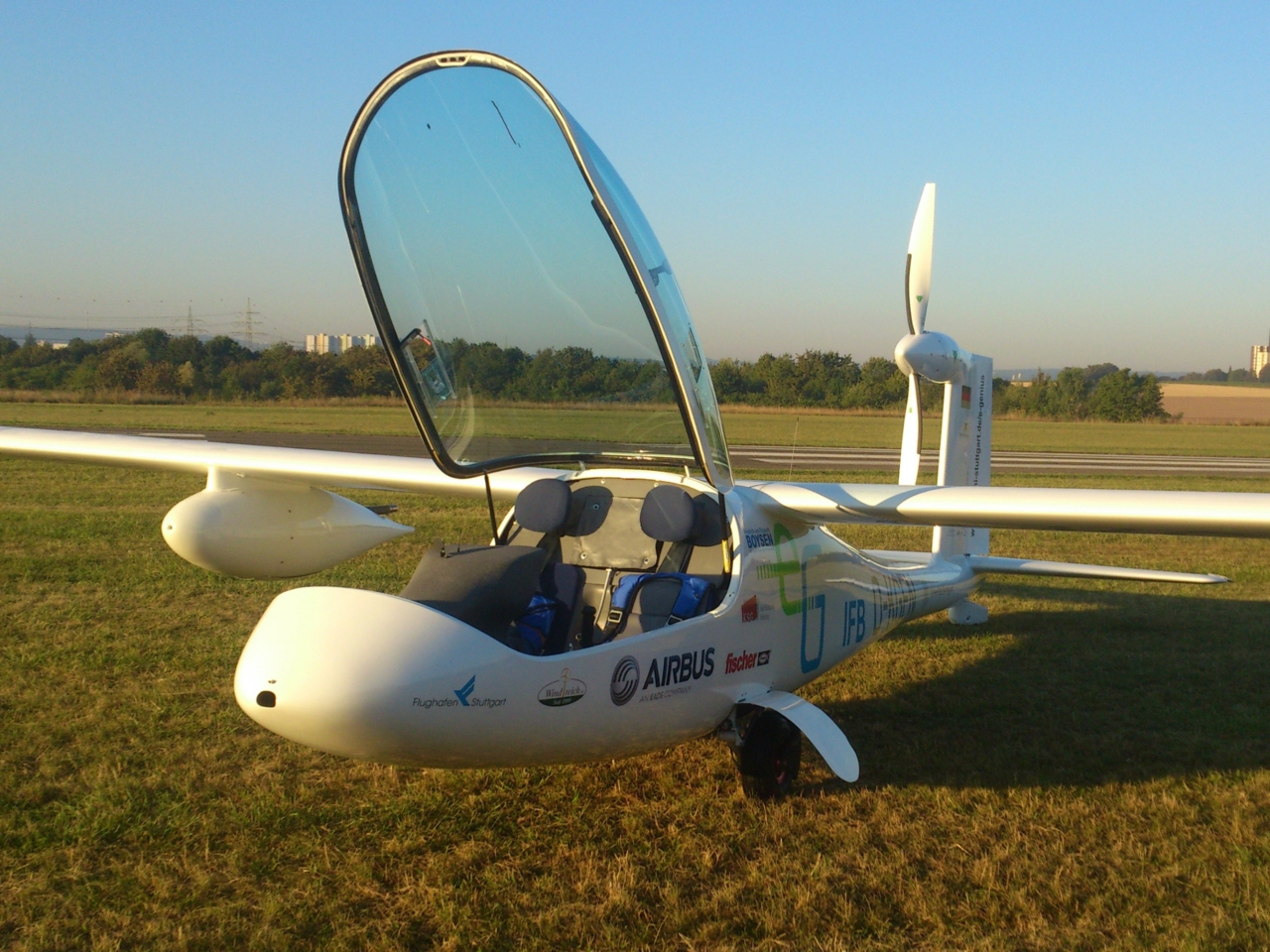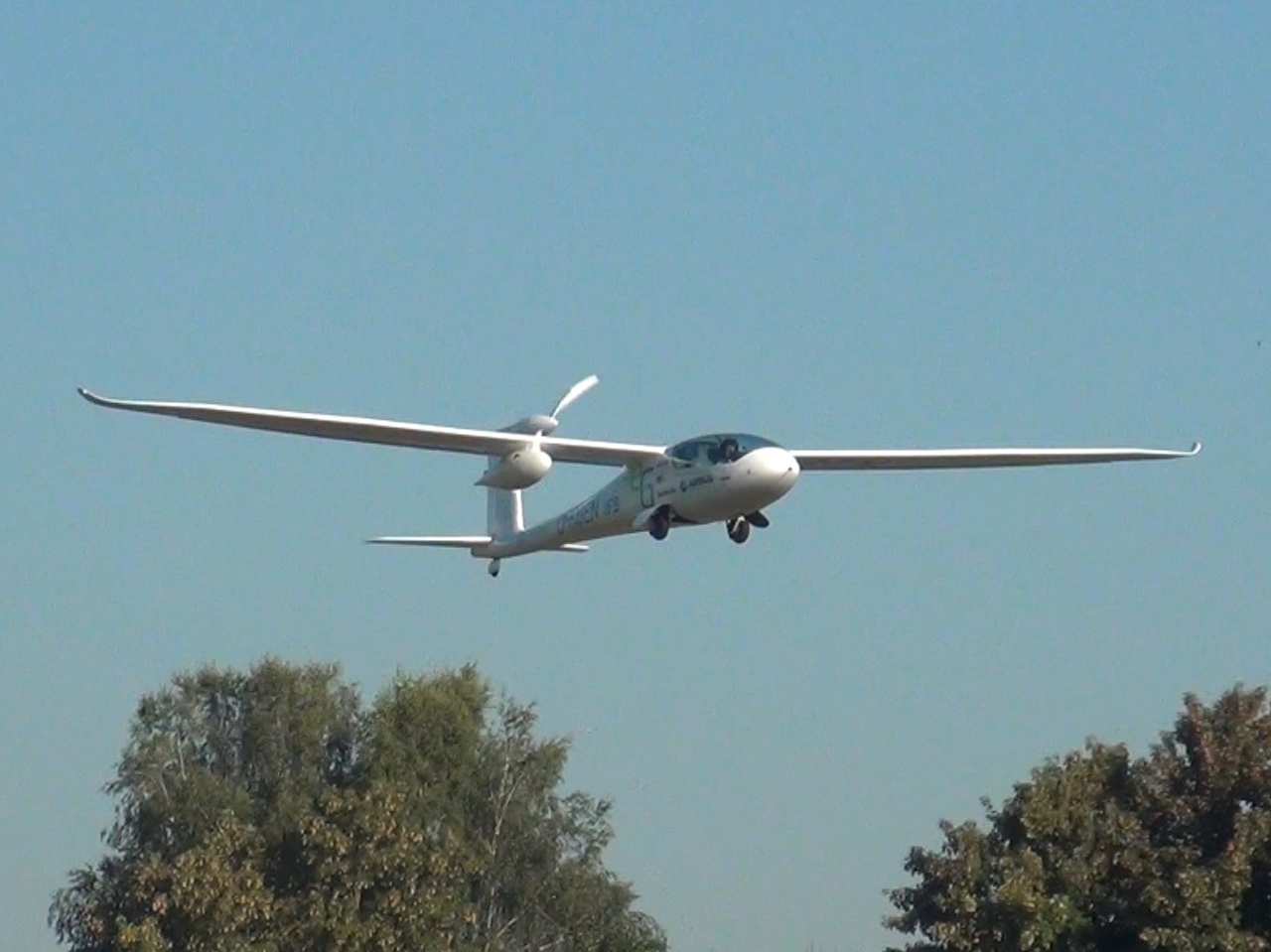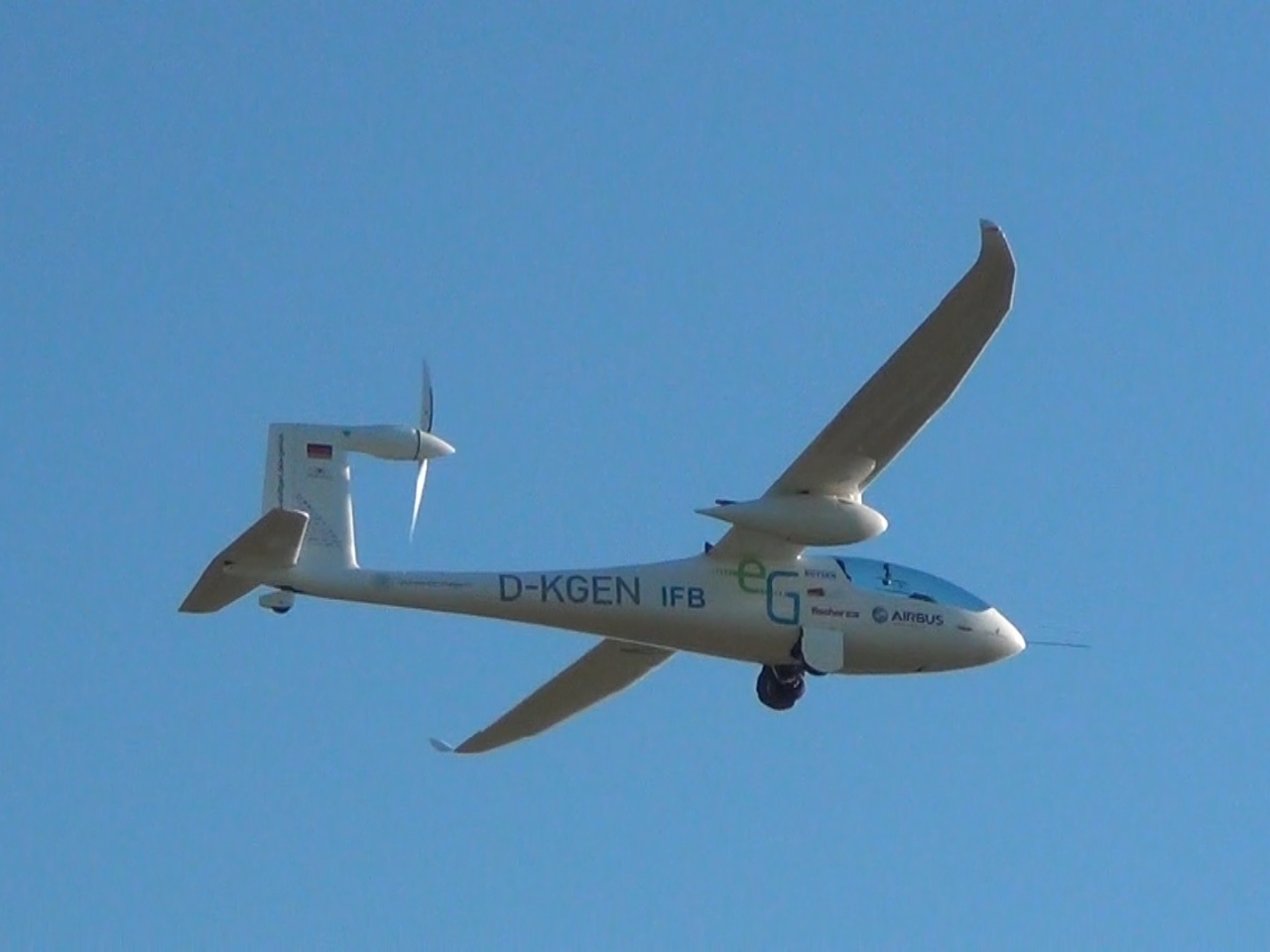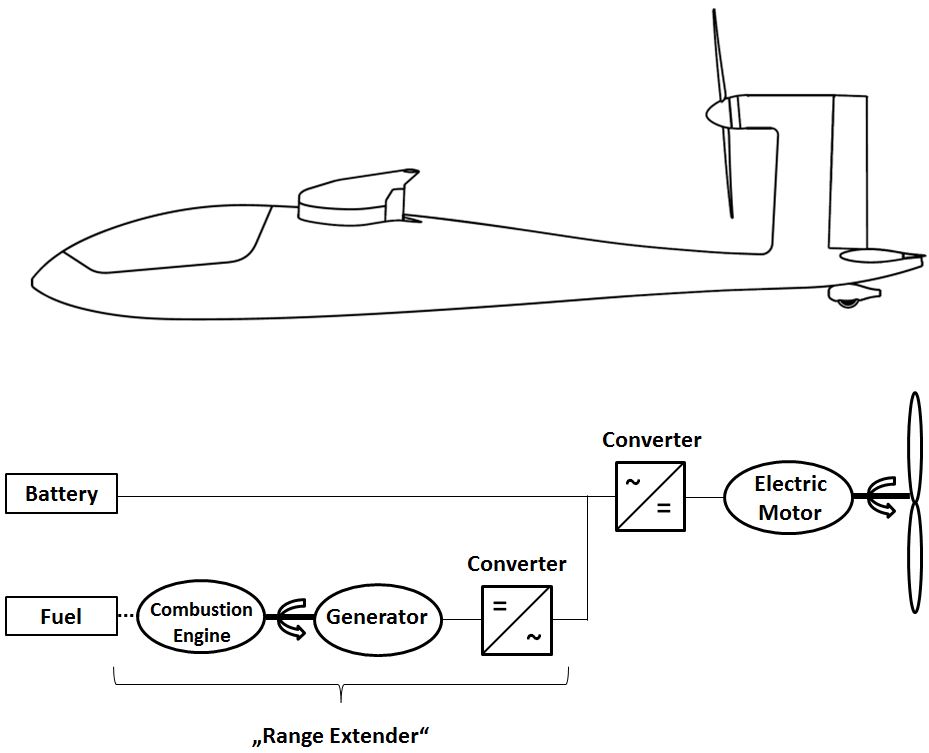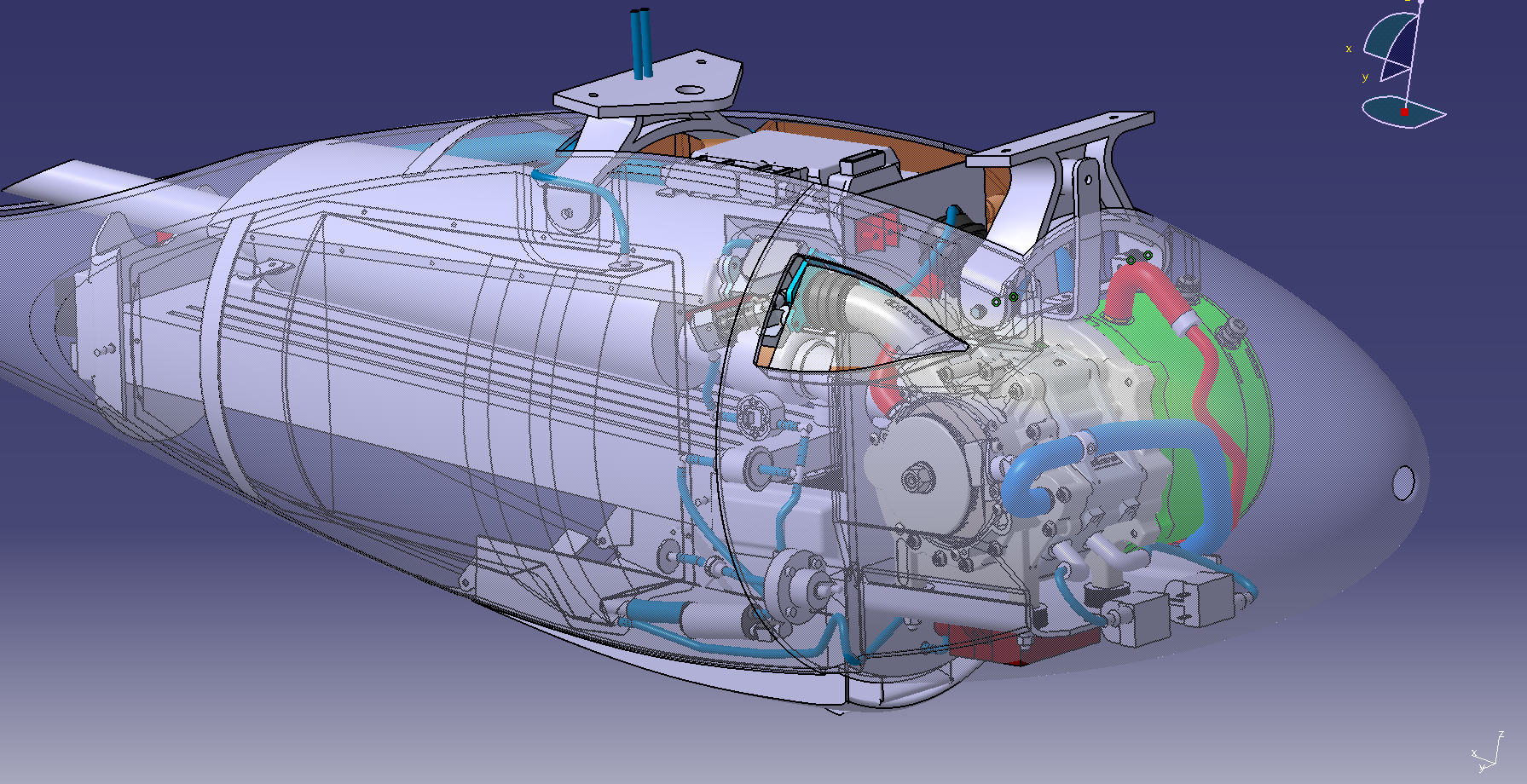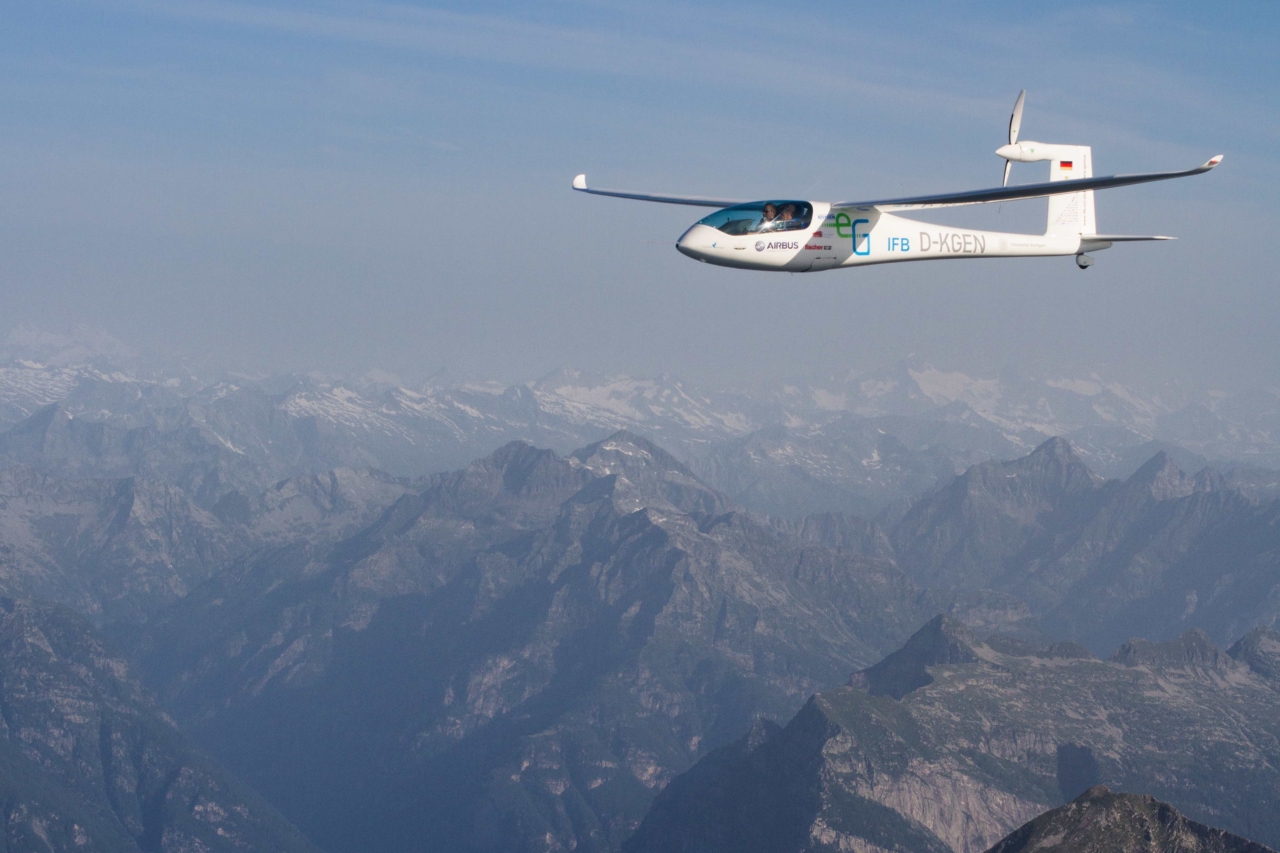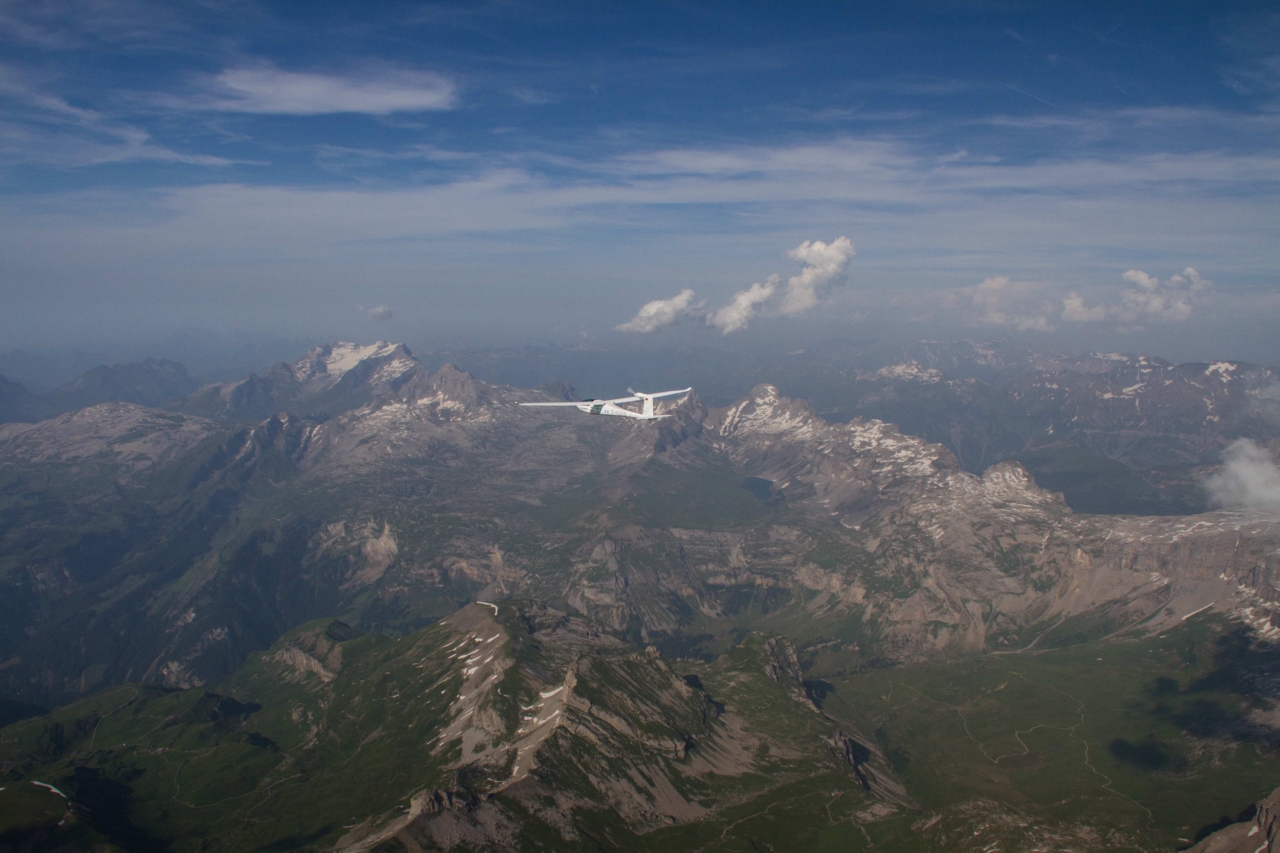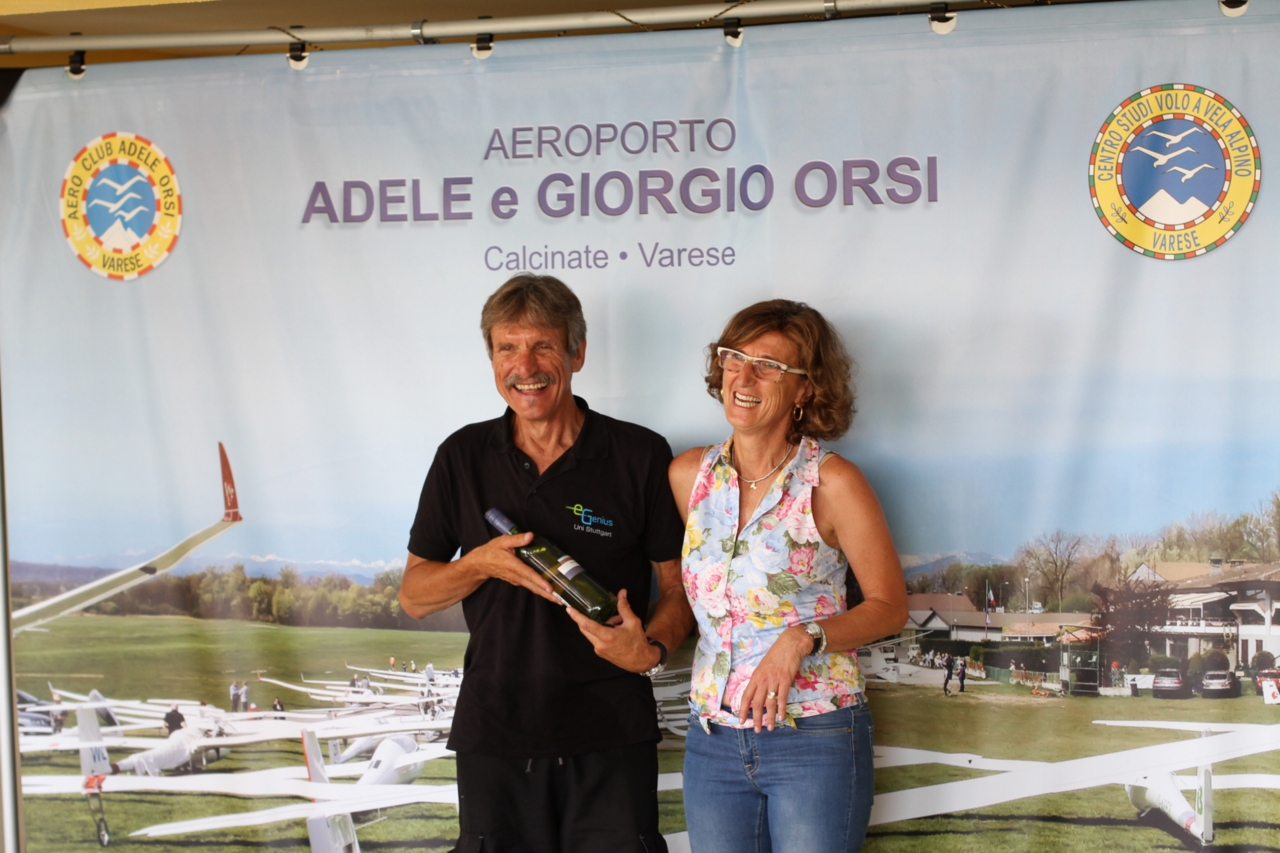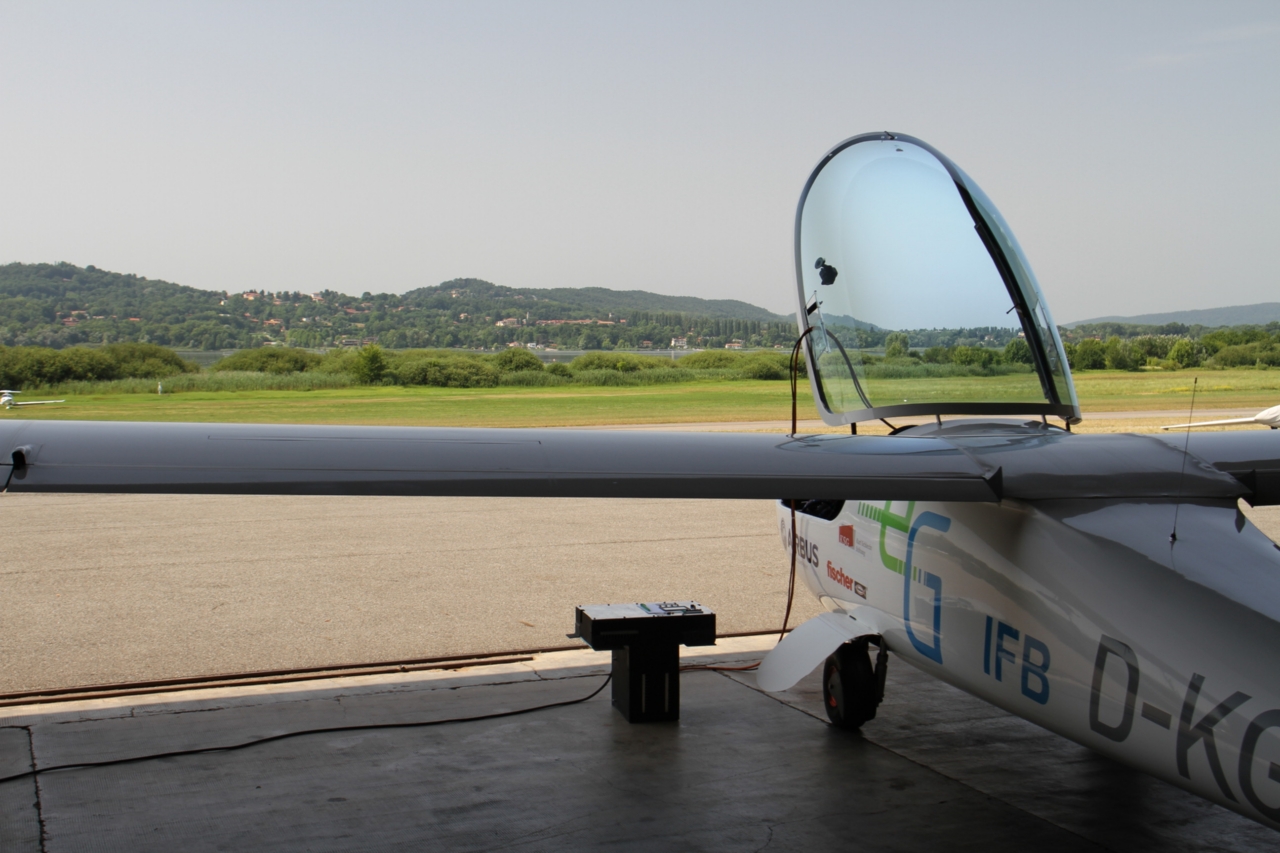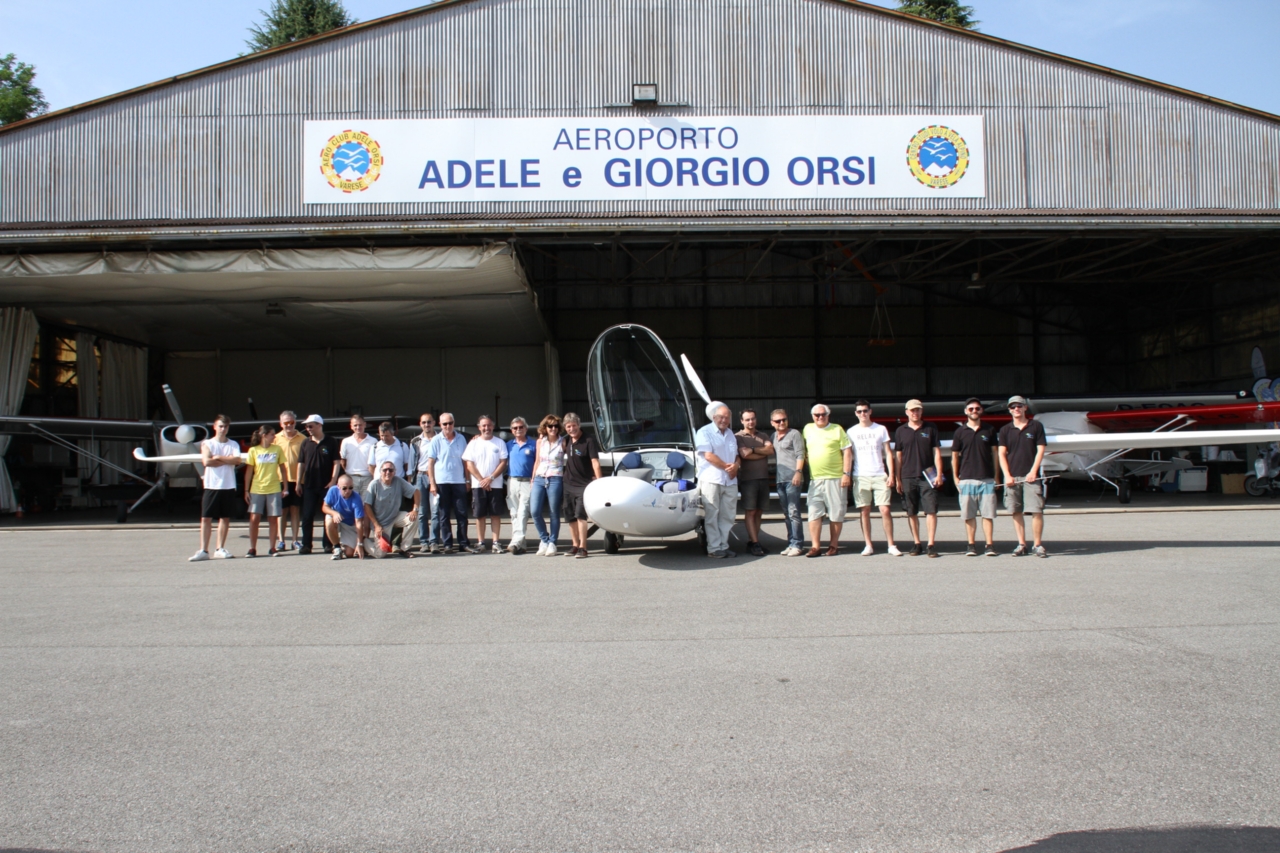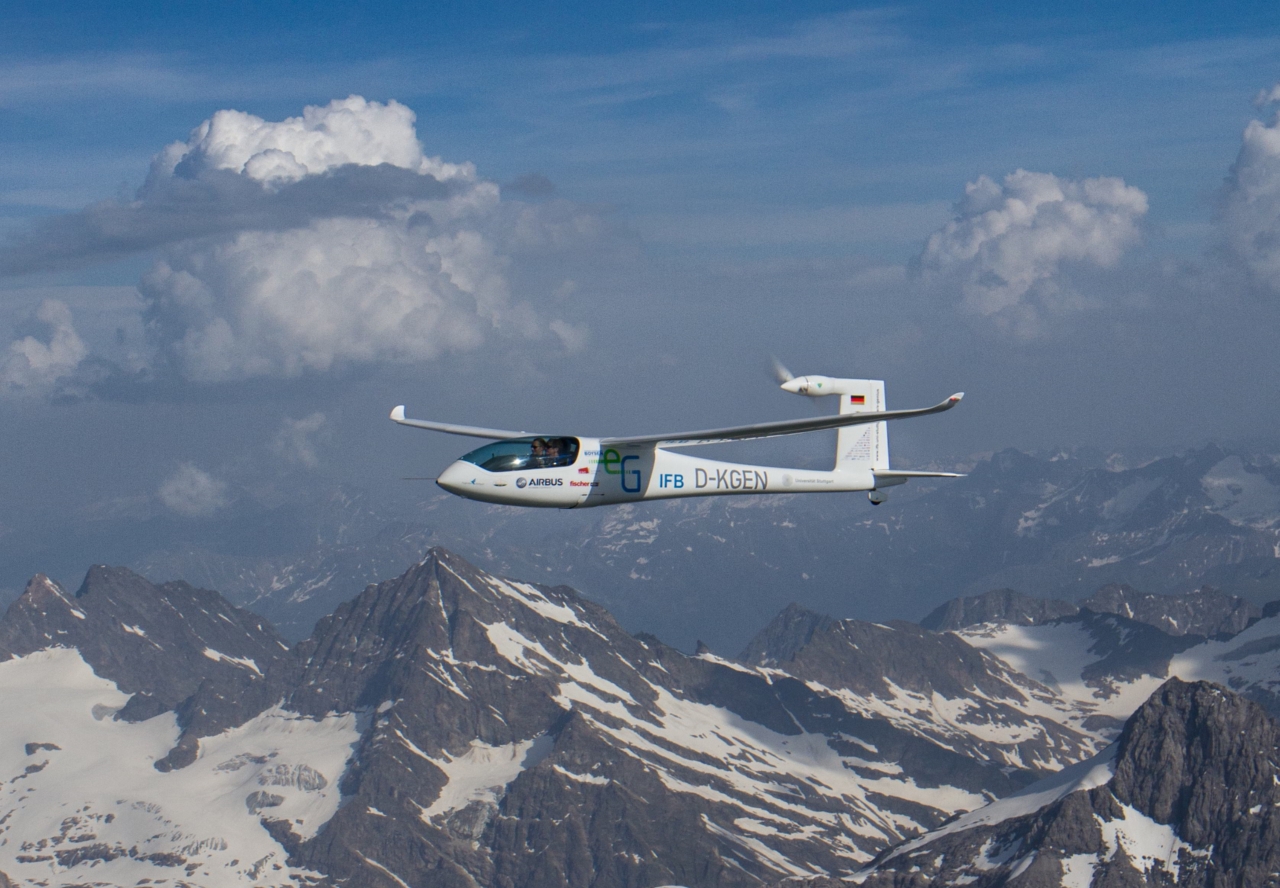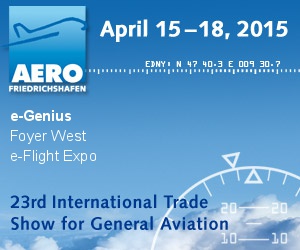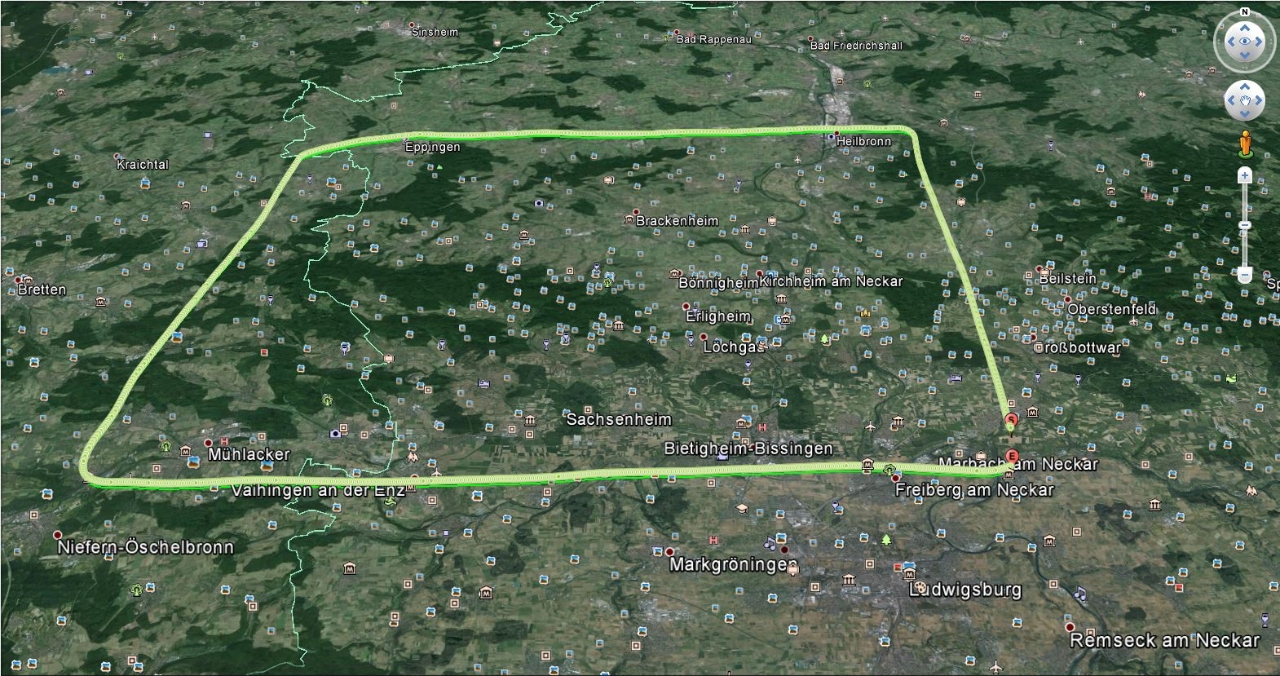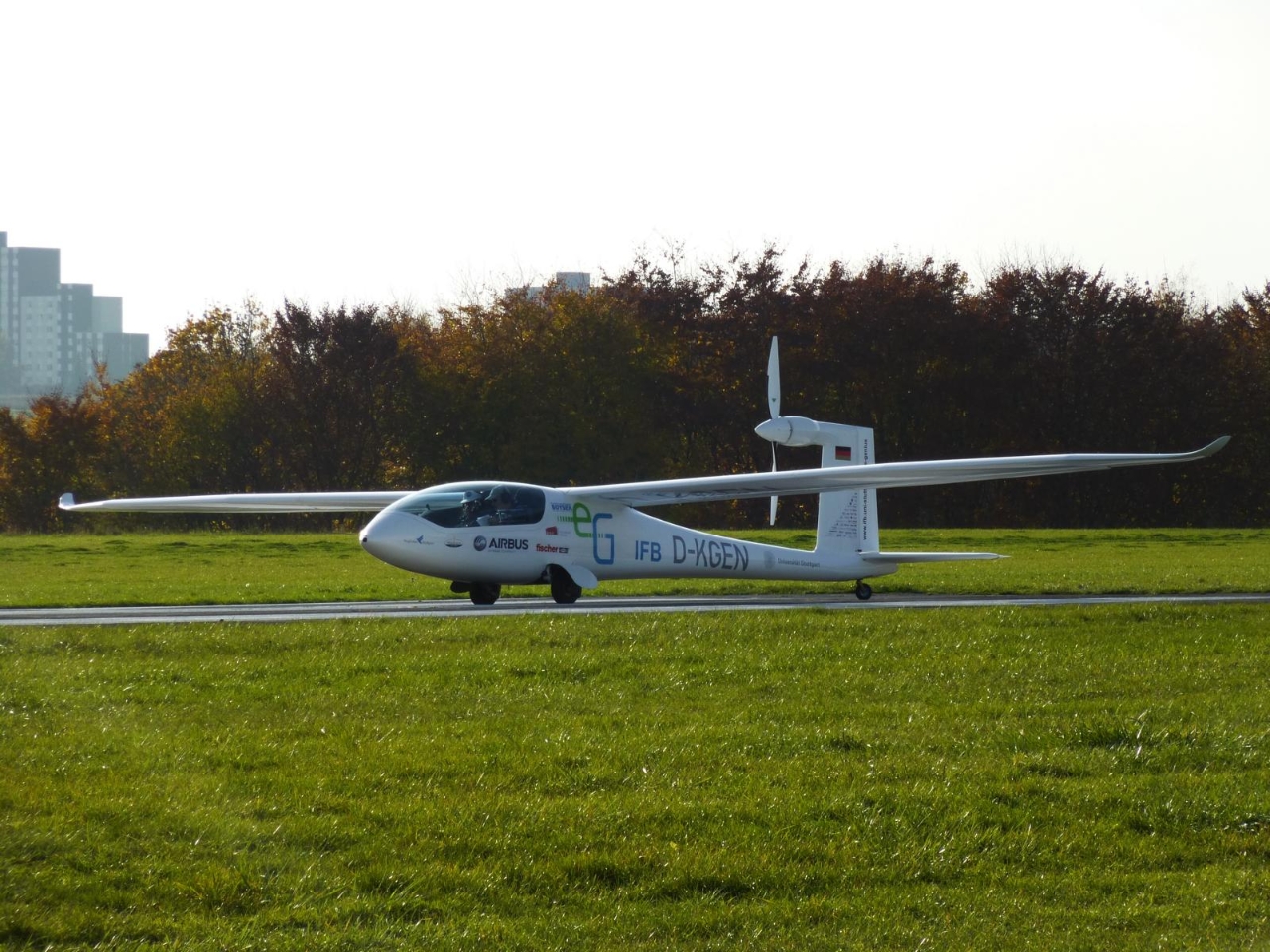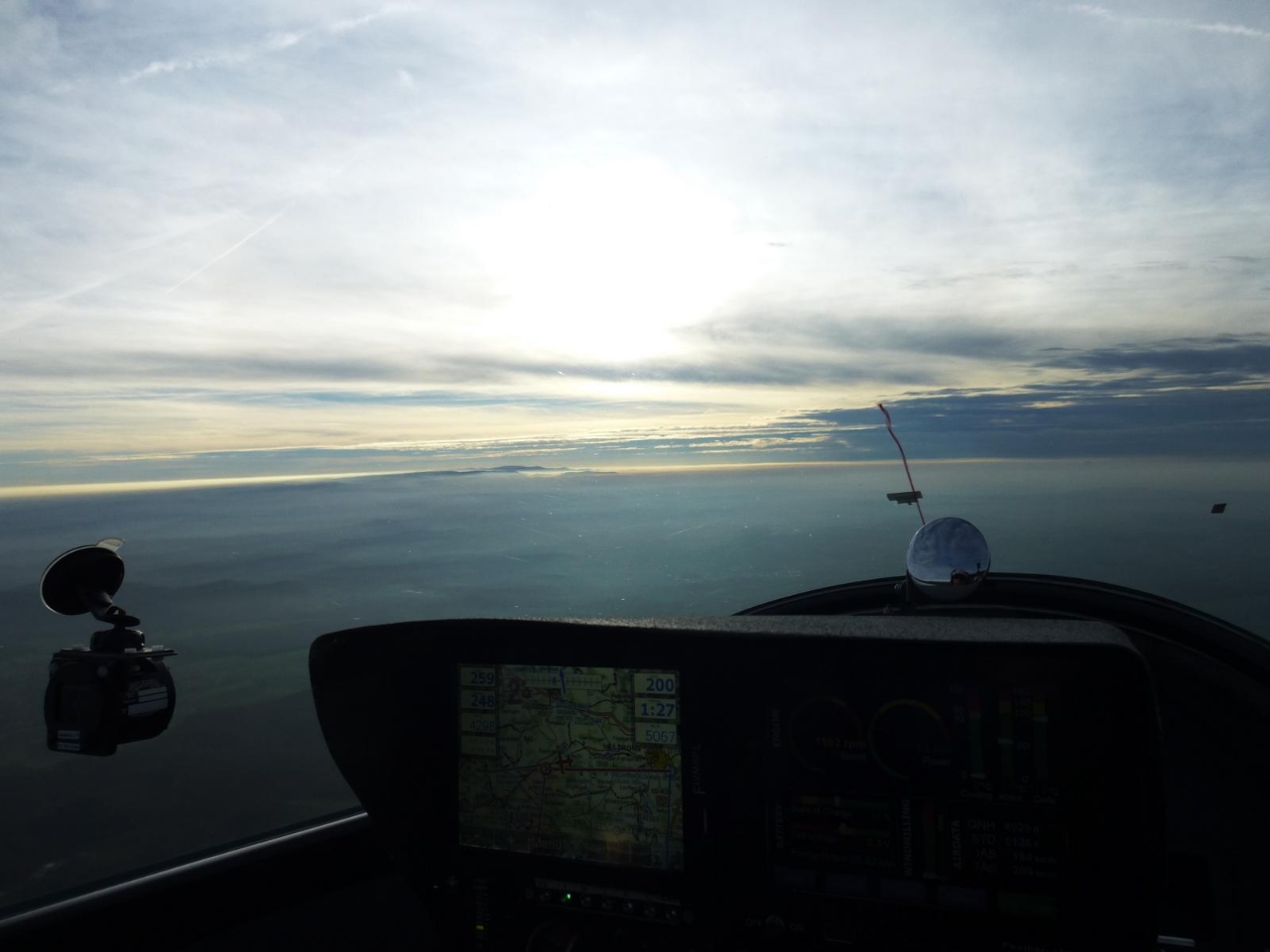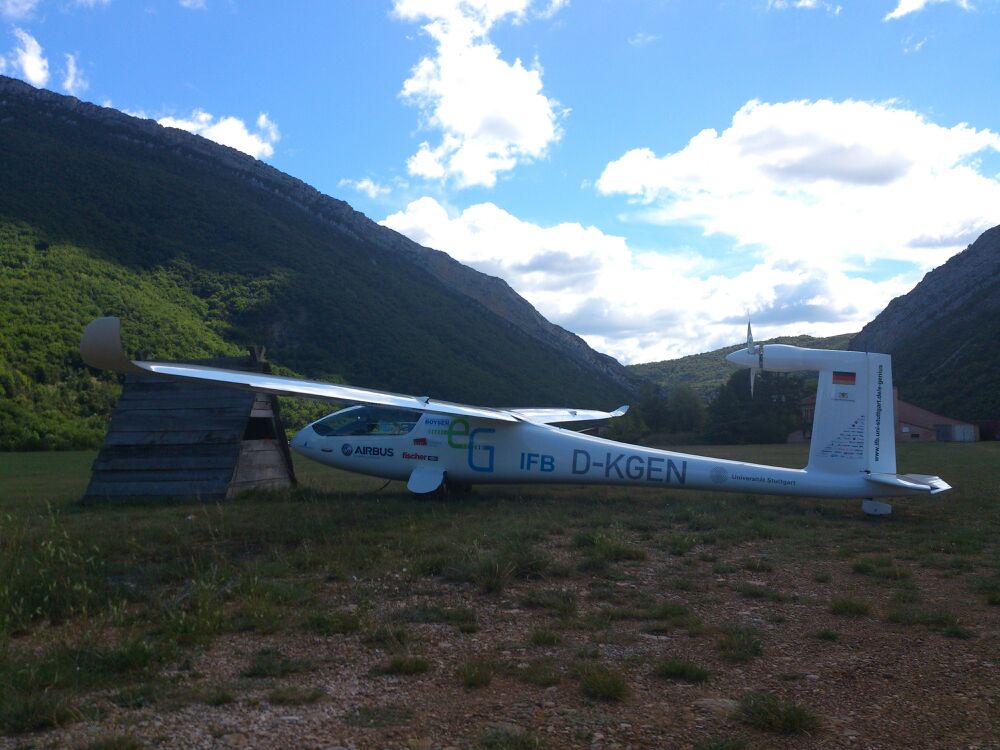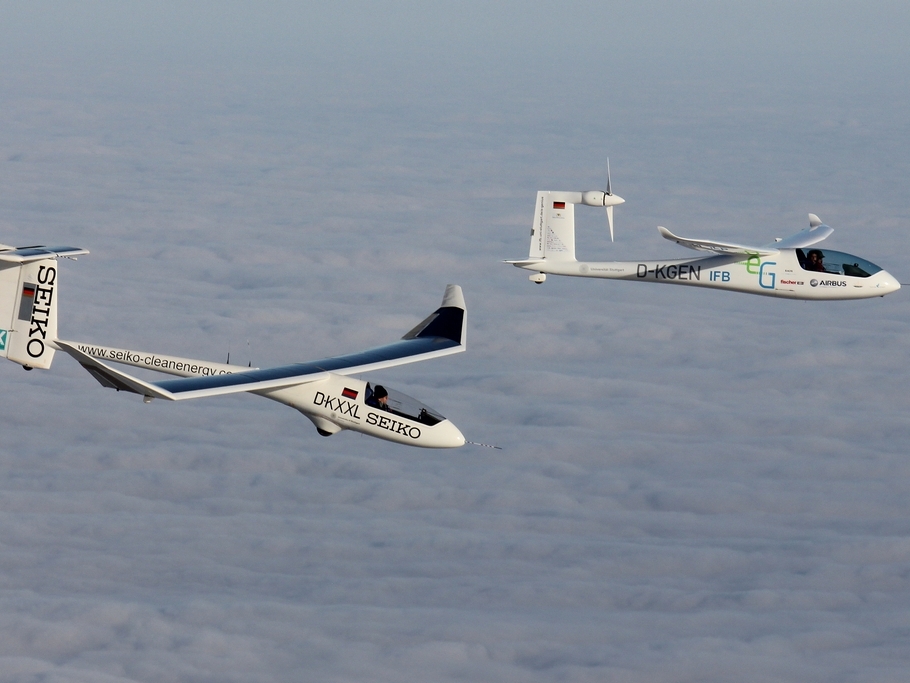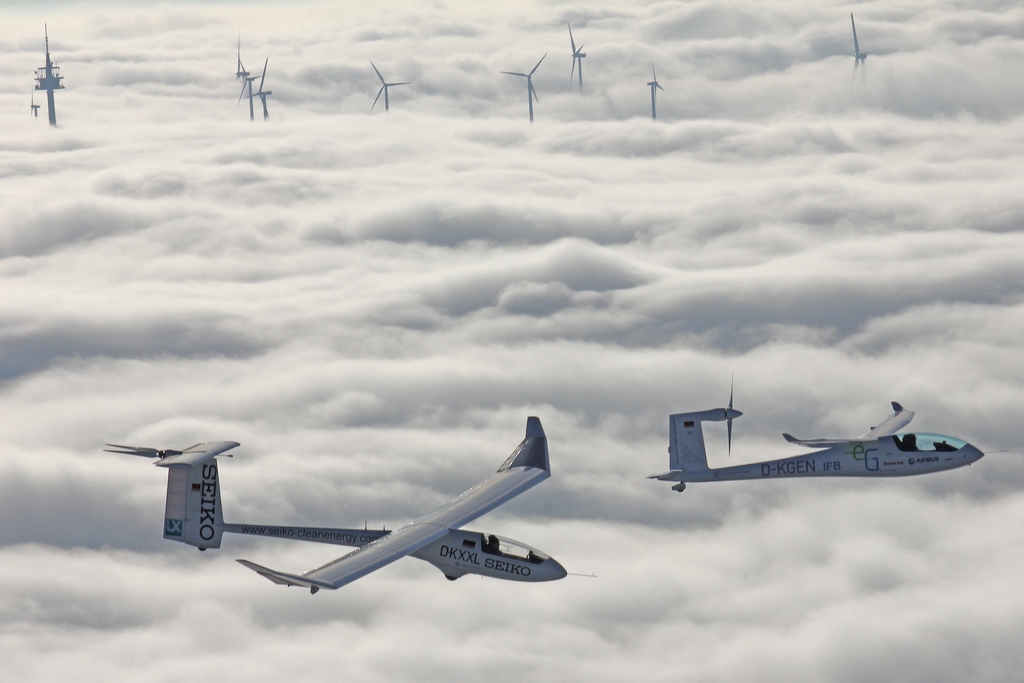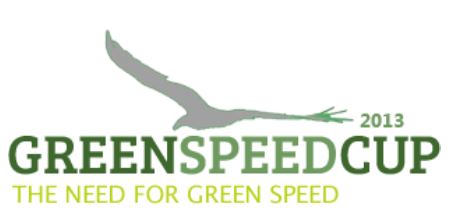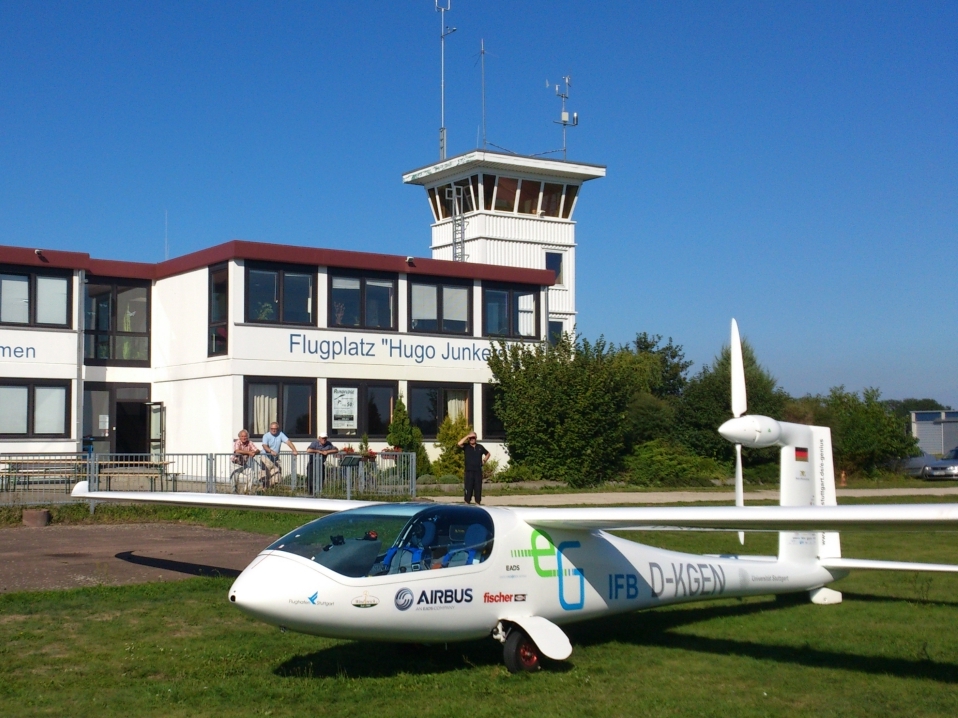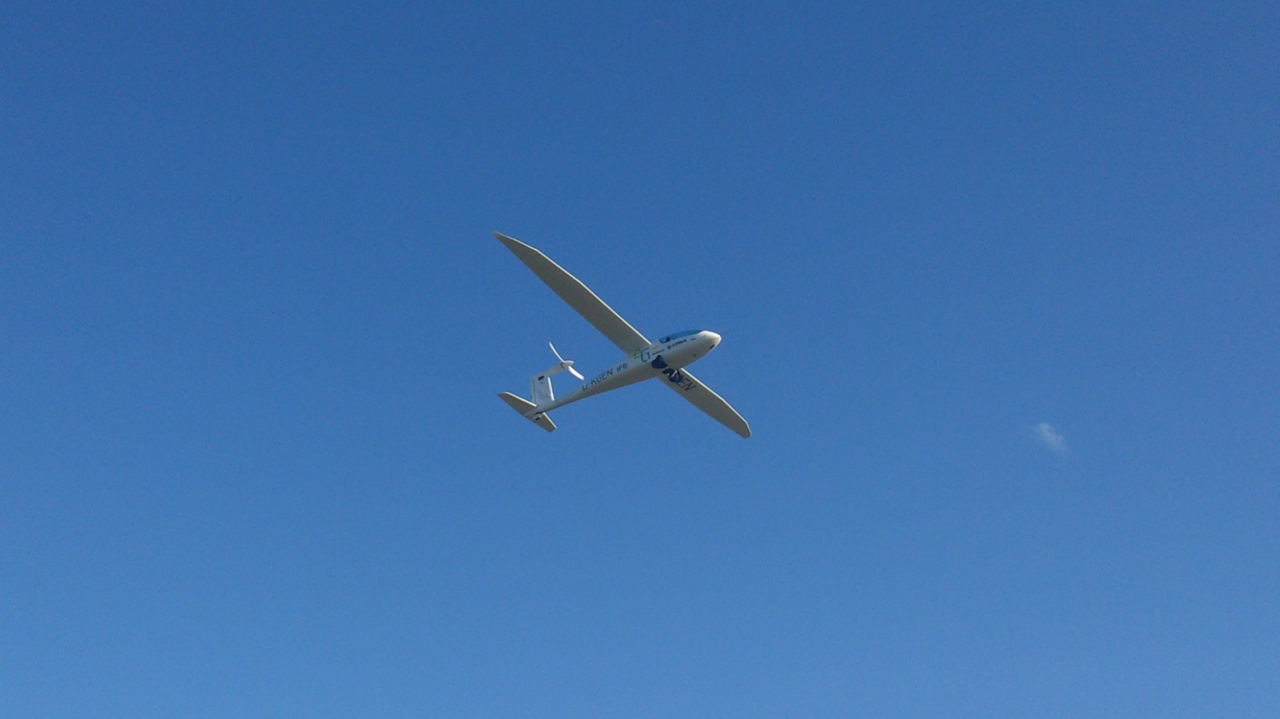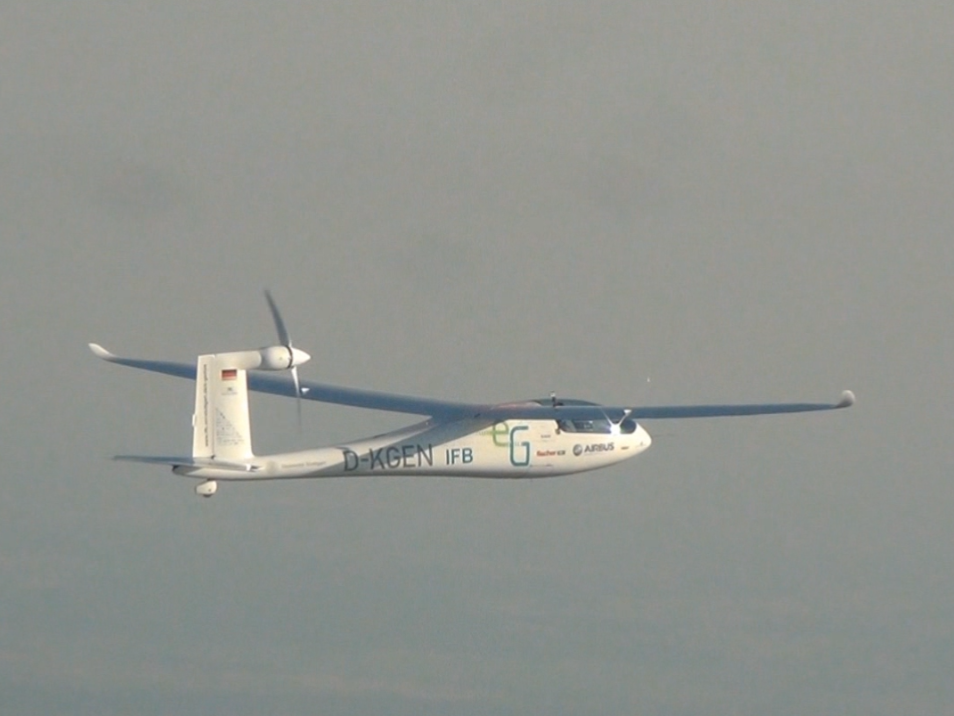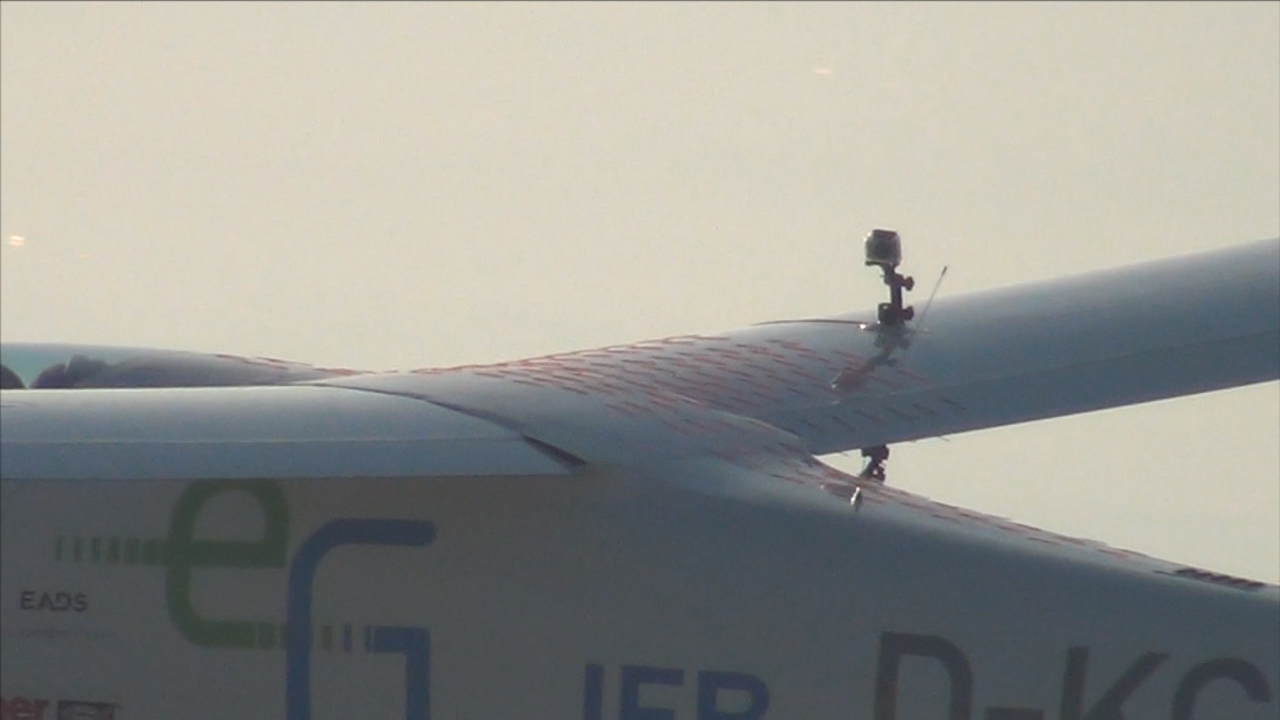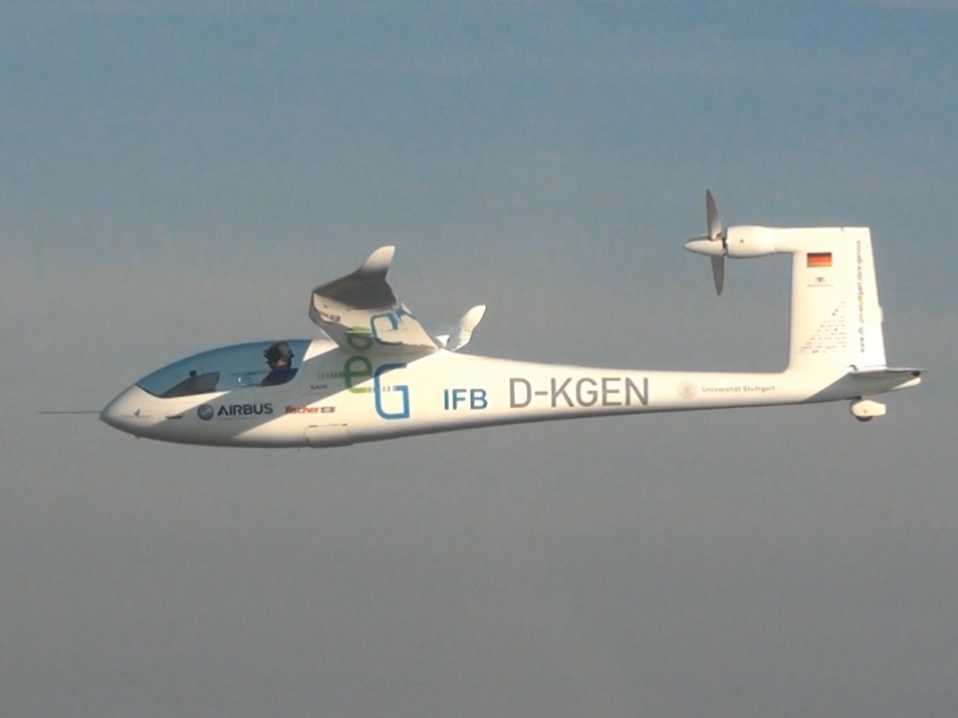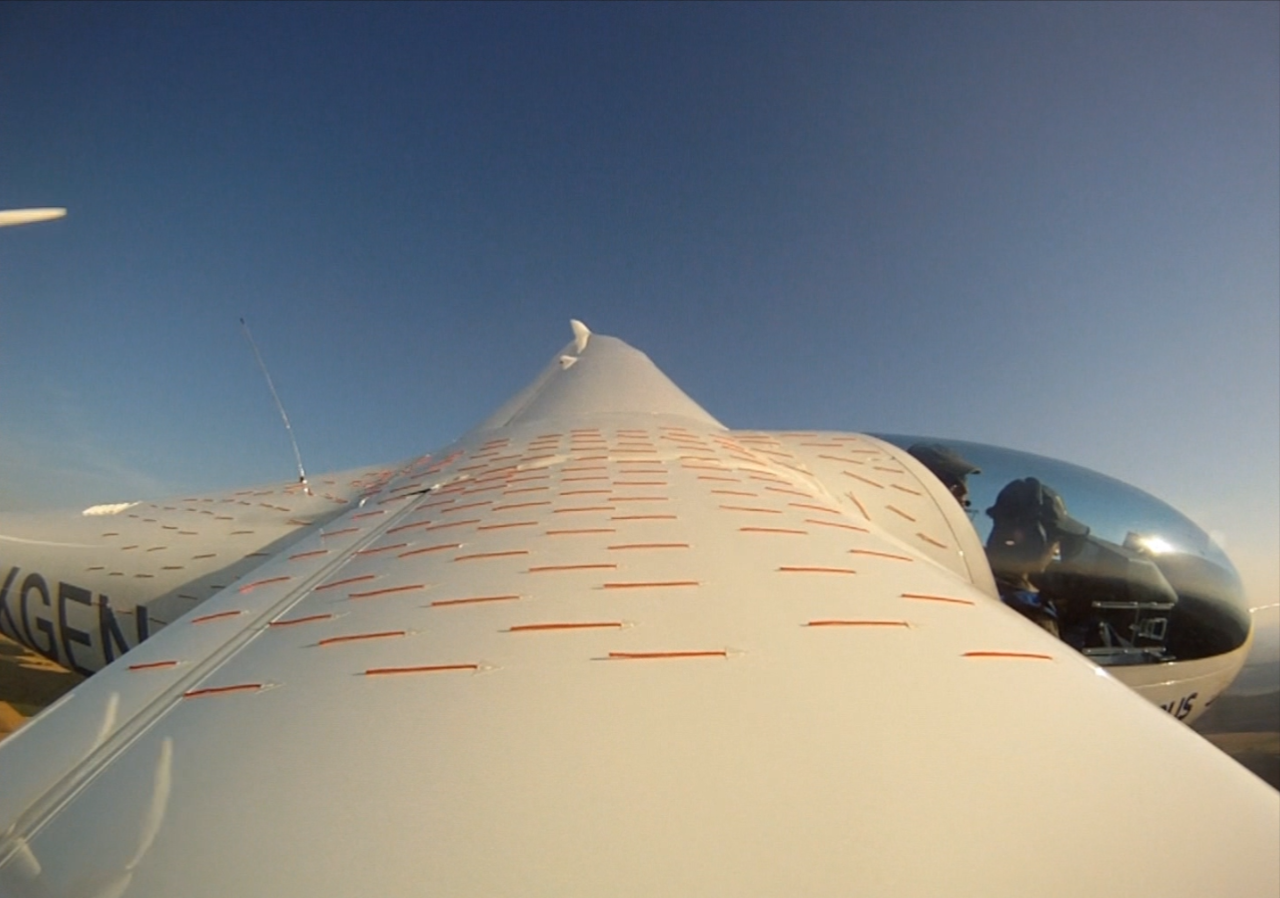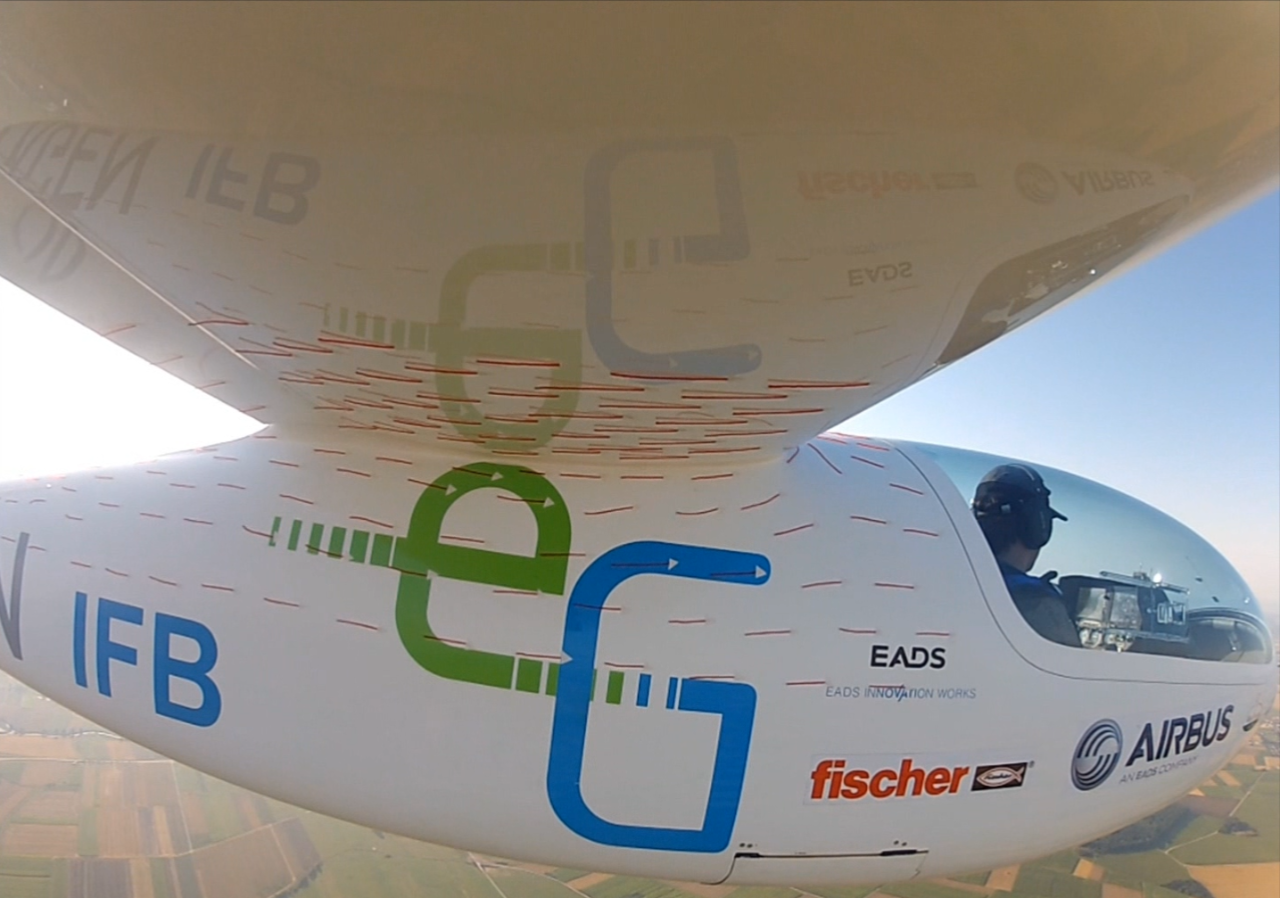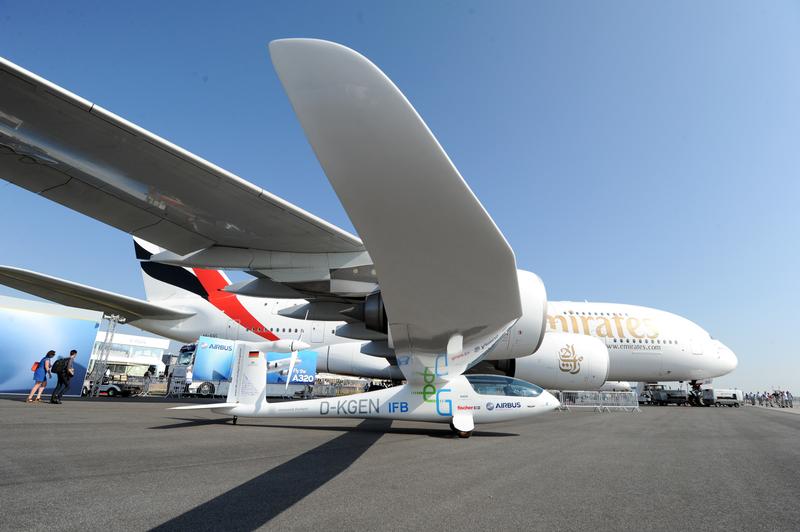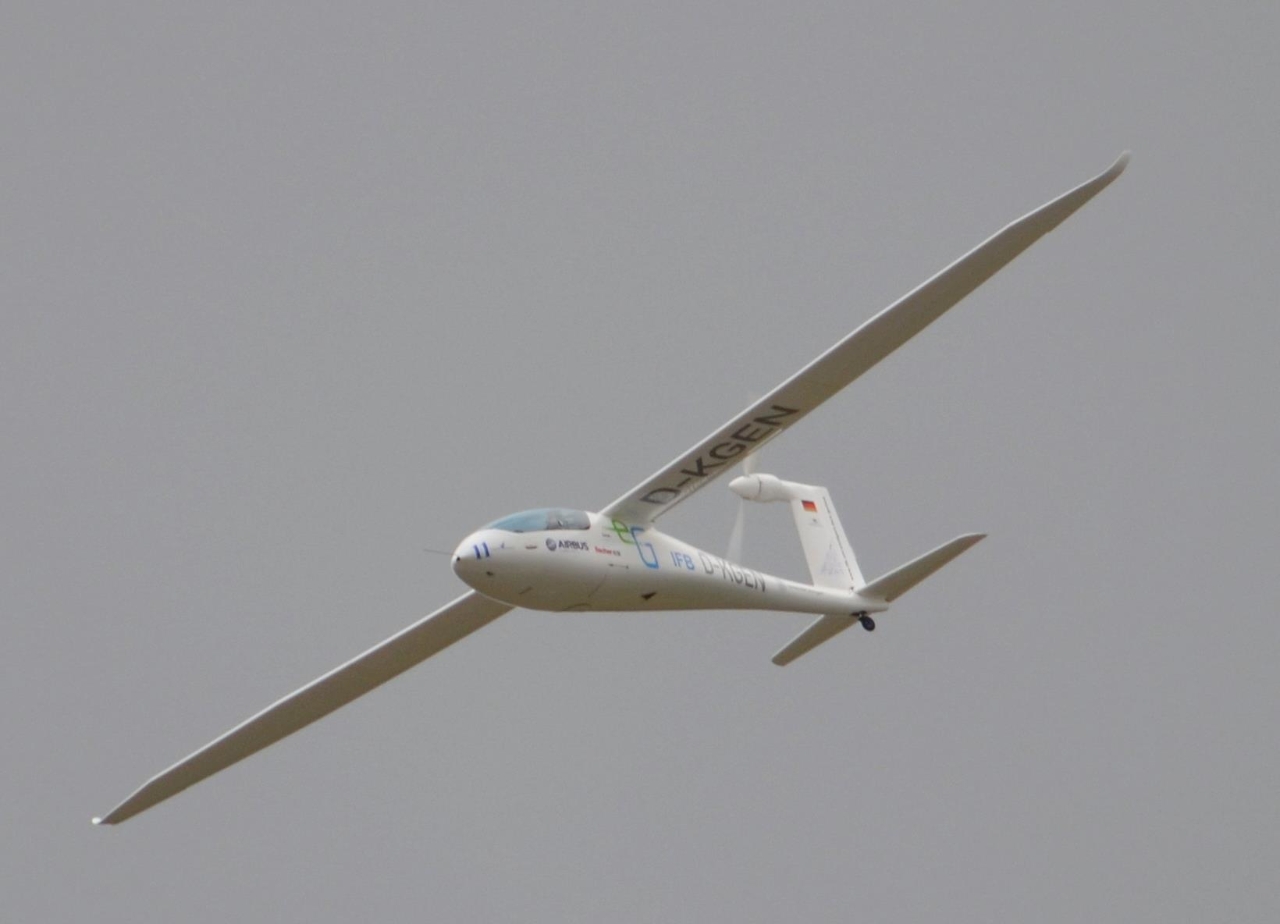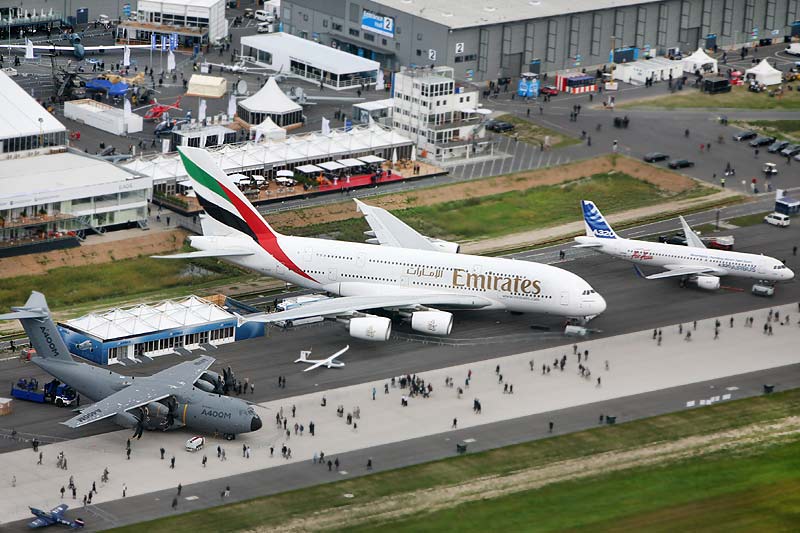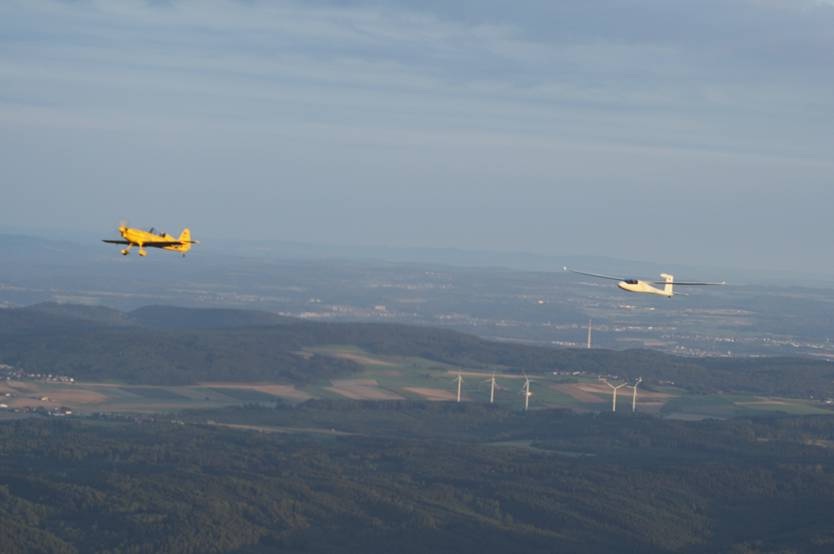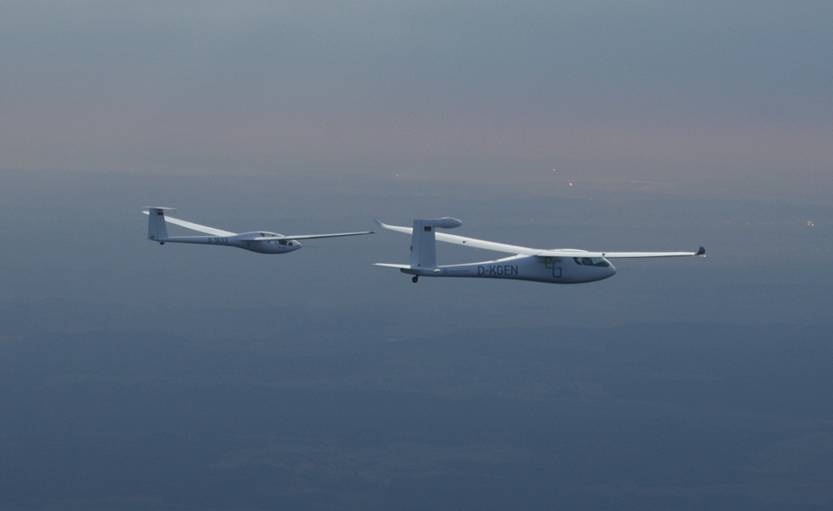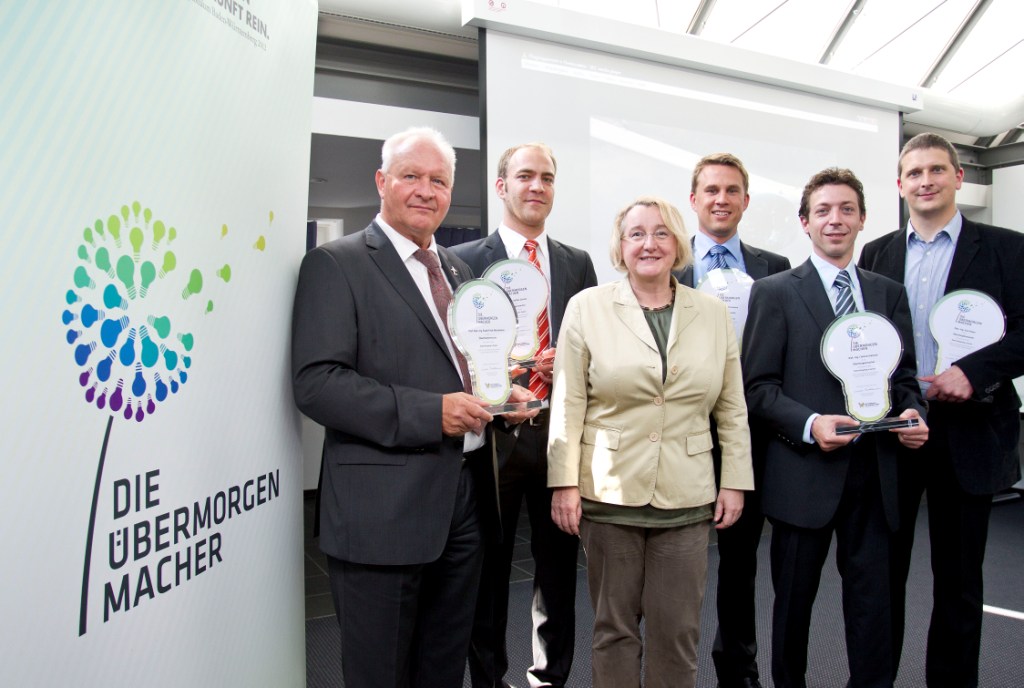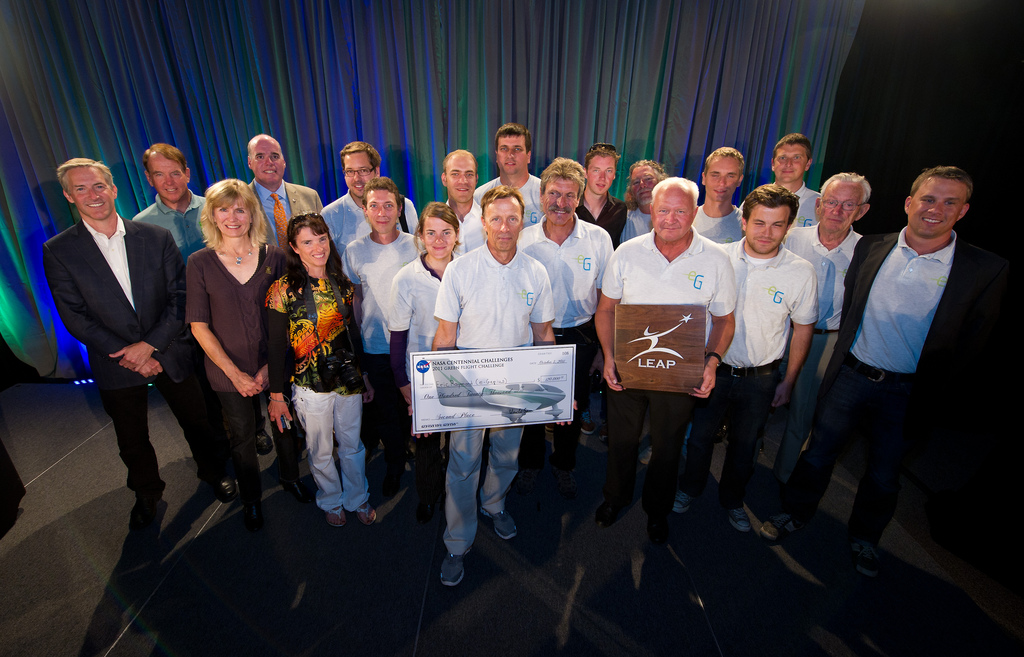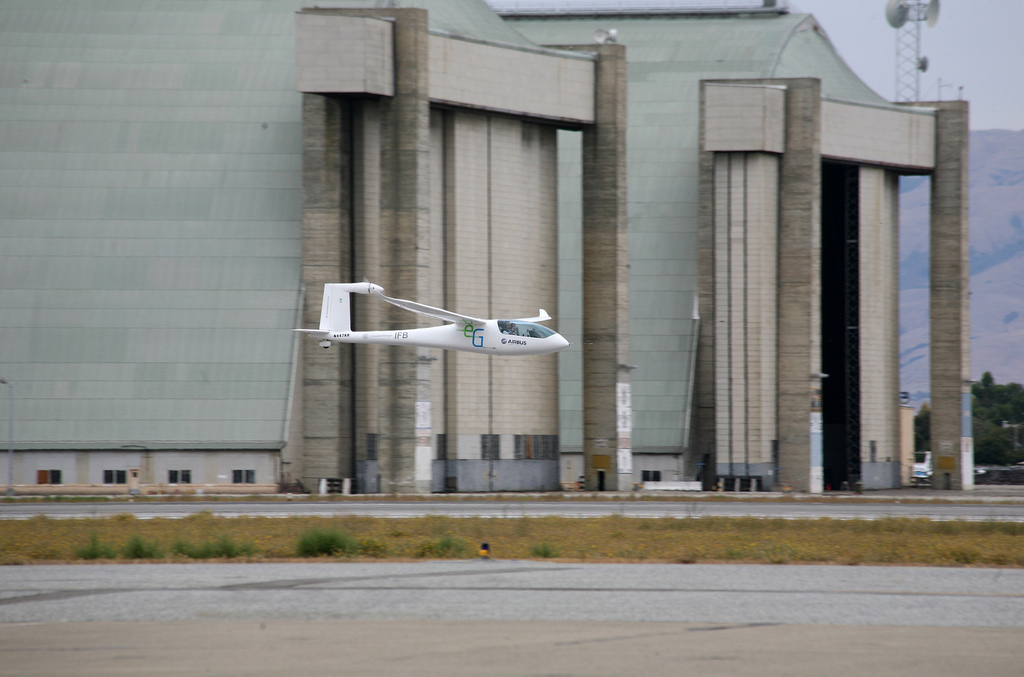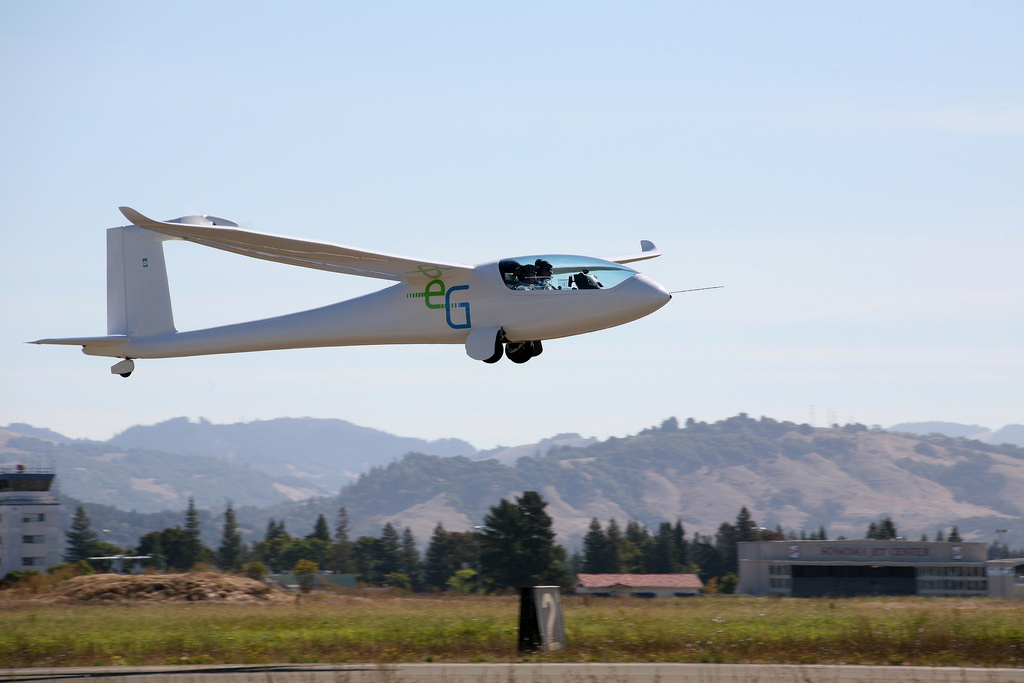News
August 2024
e-Genius sets record for heaviest electrically towed sailplane
After 1.5 years of conversion work in the frame of the federally funded project “SiFlA” (LuFo VI-1), our flying testbed e-Genius has recently reached a major milestone of the project. It became one of only three battery electrical powered aircraft able of towing sailplanes, of which only two are operational at the time.
To reach this outstanding achievement, modifications had to be made to the e-Genius. The propulsion system was upgraded by installing a proven and powerful EMRAX 268 electric engine, along with a capable inverter which drives a 3-bladed MT-Propeller MTV-7, reaching a diameter of 2.03 m. The newly designed modular high-power battery system with a stored energy of 40 kWh, supplied by our project partner AirEnergy, enables the aircraft to perform several aerotows to 800 m before needing approximately 1.5 h of recharging. The second objective of the project is the use of an automated flight control system (which is basically an autopilot) for pilot workload relief. The intelligent flight path planning incorporates automatic traffic avoidance, the use of updrafts for maximizing climb efficiency and noise abatement procedures to reduce the impact of flight operations on the public. The human machine interface (HMI) -displays and -software for the path planning and following functions are supplied by our second project partner AirAvionics, while the control algorithms were developed by our partner Institute of Aircraft Mechanics and Controls.
The first flights with the new system upgrades took place at our homebase, the AREA BW test field at the Regio Airport Mengen-Hohentengen (EDTM) in June and July and quickly showed unprecedented takeoff and climb performance, a key element for it being the use of a much larger radiator for cooling the electric components.
In the beginning of August, we then traveled to Stendal in the north of Saxony-Anhalt to join the Idaflieg ”Sommertreffen” as a cooperating partner for three intense weeks of flight testing.
After accumulating some flight hours and gaining trust in our new systems we installed the already existing towing hook and made use of the unique infrastructure and environment of the Idaflieg “Sommertreffen”, which supplied us with many different types of sailplanes and capable pilots for the upcoming towing tests.
The first towing flight took place in the evening of the 19th of August, launching a Discus CS to an altitude of 1300 m over a flight time of 20 minutes. The takeoff power of over 105 kW allowed for a short takeoff roll and an initial climb rate of almost 4 m/s. The continuous power is currently limited to around 50 kW, which still corresponds to a climb rate of 1 m/s with a light single seat glider, by the thermal limit of the cables connecting the inverter to the motor.
The large amount of excess power during takeoff enabled us to quickly increase the mass of the towed sailplanes. The first double seater, a Duo Discus T was towed the following day and by the 24th we had reached 750 kg of towing capacity, demonstrated by launching a fully loaded Arcus to an altitude of 600 m with an initial climb rate of still well over 2 m/s. With this flight the e-Genius set the new record for the heaviest sailplane towed by an electric aircraft.
This, once more shows the versatility of the e-Genius as a research platform, and its capability to perform many different flight missions, from long range world records to unmatched climb performance and endurance.
We would like to thank both the Idaflieg and the DLR as the host and supporter of the “Sommertreffen” for the great opportunity to take a part in it. We are proud of having been able to write another piece of history of electric airplanes during that event. Also, a big thanks to our project partners and all other supporters for the great teamwork!
The next milestone, then again in Mengen, will be the test of the automation functions in flight and more detailed noise measurements to show the possible impact that electric propulsion and intelligent assistance systems can have on the aerotow of sailplanes. This application seems to suit electric aircraft like no others and we are excited to share our results in more detail in the upcoming weeks and months.
October 2022
End of Flight Test Season 2022
Fall is slowly setting in and we're finishing up the successful flying season for this year. This means we're going back to university campus for winter maintenance program and all the new modifications for next year.
We're happy with the flights we could achieve this year and are looking back at many new records and - more importantly - plenty of insight across all aspects of the practical operation of a hybrid electric aircraft. We had to fix some minor things here and there, as is normal in this kind of prototype business, but are very happy with the result: Not only being a very economic and capable aircraft, but also the most efficient in its class.
On our last few flights we already acquired all necessary flight data for the upcoming projects, please stand by for more info on that. On top of that, we also made some very nice Air-to-Air photos, some of which for you to enjoy here:
Take care, we'll be back next year!
September 10+11, 2022
e-Genius @ ElectriFly-In Bern
For a few years there has been a special event for the young field of electric aviation in Switzerland. This is the only Fly-In of that kind in the world and currently takes place at Bern Airport for the first time. Hit the link to get more info.
We were happy to follow the invitation and flew in with the hybrid e-Genius. Great to get in touch and we're very curious to see what the rest of the community is up to.
We encountered a strong headwind on the 200km flight to Switzerland, which is why we used more fuel than usual (8.5L). This fuel however, was of the renewable kind supplied by our partner Neste and therefore has no net CO2-emission.
Using our versatile energy storage system, we configured the aircraft for longer battery electric endurance. This enabled us to do some demonstration flights at Bern in pure electric mode. Once again CO2-free, thanks to green electricity kindly provided by the organizers of the event.
So far, the event is going great. The weather has been less than perfect, but there were a few types of electric aircraft that flew in nevertheless, including a few Pipistrel Velis, three Lange Antares 20E and the Electra Trainer. Additionally, in the static display there were a lot of projects shown like the eMagicOne, the UR-1 from Pie Aeronefs and of course, the Smartflyer with the current state of the prototype build.
On Sunday the skies cleared up for a perfect opportunity to show the electric aircraft to the public on the ground and in the air.
eTrophy:
As a special item on the agenda on Sunday, the award ceremony was held for the eTrophy which is a competition for longest distance for the categories electric aircraft, electric gliders and hybrid aircraft. The Team e-Genius was of course the only competitor in the hybrid electric aircraft class at the event and therefore won the first place. The prize money will be reinvested into the project to keep going.
The trip home with the e-Genius was much nicer with sunshine and perfect views of the stunning Swiss scenery. Like before, on sustainable fuel and electric power combined, the last leg of the trip was eco-friendly and low noise, two qualities, that the e-Genius can provide for personal air travel.
Thanks to the hosts for organizing the event and the airport for smooth handling within the ongoing operation of an international airport. It shows that electric aircraft can be included in the current infrastructure and grow substantially in size for the more sustainable future of air travel.
20th August 2022
New Partners on Board: Heggemann + Neste
As a purely research based academic project, we don't have any product to sell and operate on a very tight budget.
That's why we're even more happy each time anyone helps out financially or supports our cause in some other form.
This year we're happy to announce that we got some help from our friends at Heggemann AG which is a family-owned company that manufactures high quality lightweight aerospace components. Once we met the owner, we spontaneously got a promise to supply the long range fuel tank that we have been successfully using over this flight season and enabled a lot of the long flights we have achieved. A custom design for the e-Genius was developed in cooperation and manufactured extremely quickly with great quality.
Another company that supported us with an exciting product is the company Neste Oyj from Finland.
They are in the business of manufacturing sustainable fuels, widely known as SAF.
Even though the e-Genius is very efficient, the hybrid powertrain still consumes some fuel and therefore CO2-emissions. This can be solved by using synthetic fuels that use up equivalent amounts of carbon in the production process and thus create no net carbon emissions over the full cycle of the product. These kinds of fuels are still new to the automotive and aviation industry, but will soon rise in importance as one of the solutions for the current climate challenge.
Neste happily advised us on the specifics of their product line, helped us choose the right type and enabled us to use their fuel in the e-Genius. Because of the distinctive design of our powertrain, we can use more freely which type of fuel to use compared to conventional aero engines.
Even better, they supplied a good amount of their novel fuel free of charge to use during our flight experiments and allowed us to do flights with no net emissions at all.
We are thankful to those innovative companys to push the traditional boundaries of the very conservative world of aviation.
1st August 2022
This is it: e-Genius hybrid flies more than 2000 km!
We've been looking forward to share these great news with you: The e-Genius has broken another record and is now the only hybrid electric aircraft to have flown more than 2000 km non-stop.
Flight testing sometimes yields all kinds of results, sometimes not in favor of the research team:
We attempted this record earlier (July 14) and had a few technical problems which led us to a failed attempt of the flight and an unscheduled landing. Nothing major, but a false reading of a sensor forced us to land on a French airfield for safety reasons. We investigated the problem, thought of a fix for the issue at hand and recovered for another attempt.
This is the part where we can tell you that the second flight worked out great. We took off early in the morning from our home airfield in Mengen-Hohentengen towards the Basque coast on the Atlantic Ocean. The weather was "CAVOK" which is pilot speak for excellent visual conditions. The flight took us all across France to our turning point south of Biarritz, just before the Spanish border, where we didn't land and went back all the way again, non-stop.
Even though visibility on the flight was great, we had to struggle with the record heat of this summer, which was tough on human and machine at the same time. The high temperatures on the flight not only illustrated the current state of our climate but also how well designed the various cooling systems in the aircraft are. With lower outside temperatures the e-Genius would perform even better, but for a usability study we took it as a great opportunity for a "stress test" in the heat. The flight crew prepared for the conditions with plenty of water.
The flight showed us, that our highly automated hybrid system actually works and shows the predicted efficiency all along the propulsion chain. Redundant systems and general reliability have been validated and show a great level of safety. As a bonus, we are adding 5 more records to the "summer of records" with this enormous flight, including a new distance record of 2004.7 km and a speed record of an average speed of 191.58 km/h.
Because the flight was so long, we decided not to fly in best efficiency point, but a little faster. But even at that speed we only used 81L of fuel. If you're not convinced, please go ahead and figure out how much your car would need to Biarritz and back at 190 km/h. The math for the e-Genius comes out to ≈4L/100km, which is 2L/100km/passenger.
As mentioned, the flight could have been more efficient at lower speeds. We also could have gone much further as we had another 3h flight time in the tank and batteries left when we landed (including reserves).
This means the e-Genius now has a range that's more than most people would need. Useless to demonstrate? We don't think so. The point we're trying to make is that the technology is ready for widespread use and not defined by range anxiety or senseless weight penalties.
Check out this video with a few impressions of the flight:
11 July 2022
"e-Genius Long Range" now in the air: 4 more world records
After converting the e-Genius hybrid to an extended range version, we are now able to fly long distances with the same efficiency as before. This is a necessary step towards the practical use of hybrid electric flight as a possible solution to reduce the carbon footprint of flying in the future. Hybrid electric technology has been around in cars for a while now, but is still almost non-existent with no single certified aircraft in the world using hybrid electric propulsion. Prototype flight testing is a very important step towards that happening.
On July 11, we set out for flight testing of the new setup and declared four more world records before takeoff. The FAI world record attempts in this category are still not attacked very often because of the lack of real world prototypes. We chose to tackle the speed category over a distance of more than 1000km, with a declared distance of 1097 km. This way, we could increase the existing distance record over a closed course, as well as add two more route records in the western Alps with a single flight.
The weather was permitting enough for visual flights through the valleys of the western Alps with passing Mont Blanc as the highlight of the almost 6h test flight. However, clouds, temperature and wind direction of the day forced us to divert a little from our originally planned route and increased our travelled distance, which slowed us down for the record task. However we still managed to get a good average speed of 190.75 km/h. This is now the new world record for the distance over 1000 km.
The goal of real world flight testing is most important to us to progress and learn. New world records are important as well for the demonstration and the credibility and the usability of the new technology. Third in significance and somewhat more personal for the team are flights conducted in stunning scenery as the chosen home of our experienced go-to pilot Klaus Ohlmann who knows this area as well as nobody else.
April 2022
Back in Business: Two major world records achieved
The flying season for the e-Genius started on April 15 with a quick validation flight to check all new and modified systems that had some work done during winter. The function of the aircraft and the new hybrid propulsion system was satisfactory and nothing is standing in the way of another great flight test campaign.
We were very lucky as Klaus Ohlmann - globally known record pilot - came to visit us from France and agreed to take the aircraft for two more FAI World Record attempts in the category for electrically driven airplanes.
After a little planning we immediately saw the weather was perfect to go for two long flights and try and break the current records for speed and also distance.
On April 20, we set out on an out-and-return course covering more than 500 km, a distance no other electric aircraft apart from Solar Impulse has ever managed to achieve, but we are aiming for the speed record, to prove the capability of our new design. The weather was perfect and not many clouds visible, so we could fly all the way from Mengen almost to the Czech border and back in 9500 ft. The rules are clear that you will have to fly out and return on the same track to make sure no contestant benefits from strong tailwinds.
On the way back we noticed, that we can break the record if we just make it back. Even we were surprised by the result: a speed of 207.65 km/h averaged over the whole track.
The next day, we were still buoyed by the success and wanted to try the absolute distance record for electric aircraft. We got up early, prepared the aircraft and filled up the tank of our very efficient hybrid aircraft to the maximum - a whopping 36L! The planned route took us from Mengen to Freiburg, then all the way along the Alps to upper Bavaria, all around the Munich control zone, Vilshofen, Regensburg, Ulm and back to the starting place with a little detour to make the range a nice number: 1003.6 km is the official result of our trip and will be the new record to beat.
The whole team was relieved that everything went so well and all systems of the prototype aircraft worked perfectly over the longest flight the e-Genius - and any other (hybrid) electric aircraft - has ever made. The logbook shows a respectable 12:33h within one week (3 flights) in which we gathered a massive amount of helpful data for the next one and for electric flight in general.
The team is thankful to Klaus for excellent airmanship, the airport of Mengen for support of the operation and the University of Stuttgart for giving us the opportunity to push the boundaries of aviation.
PS: We'll be at the AERO Friedrichshafen next week. Meet us at exhibithion 203 in Hall A7!
August 2021
e-Genius hybrid flight testing begins
The long awaited maiden flight of the hybrid Version of the e-Genius has taken place on August 12 :
After being granted a new version of the experimental flight permit, the start of the flight test campaign at Mengen Airfield EDTM was a great success. After one purely electric flight (yes, it can still do that!) to validate the new flight characteristics after the conversion. The team was happy to see that there were no issues and the hybrid flight testing could start the same day. The novel propulsion chain was subsequently operated for the first time off the ground, staying close to the airport. All systems operated as expected and there are no indications to pause the flight test campaign and therefore it continued the very next day.
After the general operation was validated on day one, the third flight was used to test the propulsion chain (i.e. electric propulsor, hybrid GenSet and the corresponding algorithms) over the whole operation spectrum and in all imagineable combinations and challenging combinations. Safety mechanisms were tested, shut-down and restart validated and thermal behavior evaluated. Once we knew it, the "quick test flight" had a duration of over 3h and a track of almost 500km when we landed back at the airport. More importantly, we couldn't find any big issues with the all new version of the aircraft. The fuel consumption was exactly what we found in the ground test campaign and makes the e-Genius hybrid the most efficient aircraft in its class!
3rd September 2018
Interview about the e-Genius project
Read here the interview with Prof. Andreas Strohmayer about the status of the e-Genius project and the possibility of electric short range passenger aircraft.
31st July 2018
Cooperation with Unitek GmbH
Last week we had the chance to work together with Unitek, the manufacturer of the power converters that we use. The company is located in Leutenbach, so it’s just a 30min trip from campus – a surprise we waited that long!
First, two experts came to our site to visit and see our electric propulsion test bed and the hybrid system test bed in action. They were able to fine tune all internal control parameters implemented in the power electronics to ensure smooth operation. Incidentally, they found an issue in the signal path and kindly offered us to take our setup to their facility to look at the problem.
On their site, we could mount our controller and motor on the dynamometer and look at all the signals. With this approach, it was possible to find the error and solve the problem.
We would like to thank the whole Unitek team for their support and for teaching us so much about what we, the aircraft guys, all too often see as a “magic box”. Also we’d like to thank for the possibility to visit the company and look at the development and series production of a wide product range of power electronics.
6th April 2018
New Toys in the Yard: Hybrid electric propulsion chain
We didn't have much news for you lately - the reason was that we were busy in designing and building our new hybrid electric propulsion chain, which is now ready for ground tests. We are using our very efficient diesel engine to drive a generator in order to produce electric energy for the e-Genius. To complete the propulsion system we got another electic motor and a new propeller. Many thanks to MT-Propeller once more for supporting us and for developing this three blade propeller.
With this setup, we're able to validate the whole system before we integrate it into the e-Genius. Ground testing is much better in this kind of weather we have now.
As you'll be able to hear in the video, it's quite noisy with the two test beds in operation but most of it originates from the propeller, which will be much quieter in cruise flight. We're still trying to keep electric flight low emission which definitely includes the noise for us.Putting everything you can see into the aircraft is a whole different story, but we're on it. So fly safe, stay tuned and maybe meet us at the AERO Expo in two weeks!
13th September 2017
Smartflyer Challenge 2017: a fly-in for electric aircraft
Last weekend we were invited to the ”Smartflyer Challenge“, a fly-in for all manned electric flight projects brought to life for the first time in Grenchen, Switzerland. We were happy to accept that invitation and the weather was good enough to fly in on Friday as the first electric aircraft ever to land at the airport. Lots of teams from all over Europe joined us that day and the next from electric hang gliders, trikes, to sailplanes and small airplanes together with visitors enthusiastic about the future of our air travel.
On Saturday the weather was rather rainy but we found a few short windows to demonstrate our e-Genius in flight over the airport. In addition to the flight program, lots of interesting talks were held in the conference room, speaking about new projects, the certification process and new technology that may find the way into our future developments.
Sunday brought great weather for flying and we took the opportunity once more. The highlight was a formation flight of three electric planes (a world first) of the Magnus eFusion, the electric phoenix and us. We certainly felt a joined European spirit when we departed on that flight with a Hungarian, a Czech and a German airplane, filmed by a French photographer in Switzerland.
Also, the second aircraft of the University of Stuttgart was on-site and caused quite a stir by showing that the September sun is enough to charge the batteries, self-launch and fly around with the 20 year old Icaré II.
We want to thank the organizers for the great event, the Grenchen airport for smooth cooperation and our aircraft for being reliable and practical enough to fly home again the same day without any issues. We would love to come back next year to the second Smartflyer Challenge on September 1-2 with even more electric aircraft and ideas in this prospering environment.
14th April 2017
Aero 2017: air show and exhibition for e-Flight with e-Genius
We had a great Expo last week at AERO Friedrichshafen. As part of the e-flight-expo, we were able to show the current status of the aircraft and some new developments as our diesel-electric hybrid solution for the e-Genius and the Eco4. The rest of the e-flight-expo also had some great new concepts and products for the trend of electric flight that has become more and more accepted by the general public. We want to thank our colleagues and friends for their effort and for helping each other out in this still small community.
The day of the flight show was blessed with good visibility and none of the electric prototypes showed any sign of stage fright in front of a very intrigued audience (in contrast to their conventional counterparts).
The airshow included some great aircraft like the Klemm 25, the T-6 Texan and the SIAI Marchetti and for the electric flight display the Magnus eFusion, the Extra 300 Elektro, the Antares 23E and - of course - the e-Genius. This is the first event ever with a dedicated electric part of the show, which makes us excited about how this movement will develop in the near future.
27th March 2017
e-Genius @ Aero 2017 in Friedrichshafen on 5th - 8th of April
New develpoments will be presented! Come and visit us in hall A7 (see map). As a highlight e-Genius will participate in an air show on Saturday 8th April celebreating the 25th aniversary of Aero. The air show will begin at 11 o'clock. We are looking forward to seeing you!
18th November 2016
Hybrid-electric aircraft „ECO4“ wins Berblinger prize
Innovative aircraft consumes 40% less fuel
Gunter Czisch, mayor of Ulm, awarded the prize to a team of the Institute of Aircraft Design. The prize money of 23.000€ will be invested directly into the further development of the airplane.
ECO4 is an efficient, four-seater airplane with a cruise speed of 120 knots, which consumes 40% less fuel than modern, conventional airplanes. This is achieved by combining an optimized fuselage with an efficient hybrid-electric propulsion chain. A small but powerful battery system enables a silent take-off without the combustion engine running and resulting in less noise emissions. With four persons on-board the airplane has a range of 1200 nm. A special focus was put on the practicability of the ECO4 by meeting common requirements regarding take-off distance, climb rate and approach speed. The described principle could also be applied to commuter airplanes making them more efficient and less noisy.
ECO4 – on one hand, the name reflects the four seats of the airplane. On the other hand it stands for the square of the product of ecology and economy. The prize money is the starting signal for the team to begin the development of components for the ECO4 project. As a first step the newly designed propulsion chain will be built and tested on ground.
The Berblinger prize was founded in recognition of Albrecht Ludwig Berblinger, who tried to cross the river Danube in 1811 with a glider. The glider was capable of flying but crashed due to severe turbulences. With the price the town of Ulm is awarding innovative ideas in order to enable eco-efficient long-distance flights. The jury consist of 16 members from aerospace industry, universities, research institutions and representatives of the town of Ulm.
15th September 2016
e-Genius REx in the air
Flight test program with range extender begins
With the e-Genius REx a highly efficient electric airplane suitable for long distance flights is realized. Ranges up to 300 km can be covered solely by the battery system - ranges up to 1000 km are possible with the range extender. That’s the direct flight from Stuttgart to Barcelona. With e-Genius hybrid most flights of a typical user case can be done in the cost and energy efficient battery mode - for all longer flights the range extender can be used.
e-Genius hybrid is realized as a serial hybrid electric aircraft. Apart from the battery system a Wankel engine drives a generator and delivers additional electric energy. The whole range extender system is installed in a pod underneath the right wing and can be added or removed easily from the aircraft.
The control of the generator system is done fully automatically - no pilot input is needed. Even if the pilots desires to reach the destination with a certain amount of battery energy on-board, the system will arrange it with the "look-ahead" feature. With e-Genius hybrid the take-off is done on battery power - the combustion engine is switched on in cruise altitude. Therefore the noise emission in the vicinity of airfields is considerably lowered!
7th July 2015
We did the Alps!
First Crossing of the Alps in a Battery Powered Aircraft
e-Genius showed the practicability of battery powered aircraft with a spectacular flight over the Alps. A milestone towards an energy efficient and carbon-neutral aviation has been reached.
Saturday morning, the electric aircraft “e-Genius” flew from the airfield Hahnweide near Stuttgart over the Alps to Italy. On its way to the north-Italian airfield Calcinate del Pesce, the hi-tech aircraft had to cover a distance of 320 km and climbed to an altitude of 4000 m in order to pass the Swiss summits safely (click here for details).
The aircraft arrived at its destination airfield in little over two hours. On the same day, the batteries were recharged and e-Genius headed back to Stuttgart in the afternoon. This was a particular challenge because of the steep profile of the Swiss Alps. In order to have enough time to climb, a flight path through the Gotthardpass was chosen, which meant the aircraft had to cover an even longer 365 km distance back to Germany (details).
Besides the lack of carbon and noise emission, the energy consumption of the flight showed the huge potential of the new aircraft technology: for both flights combined, only 83 kWh were needed, the energy contained in 9.2 l of fuel. This leads to a total energy expense of only 21€ for the whole trip, assuming current electricity prices in Germany.
The electric aircraft e-Genius was developed at the University of Stuttgart and is in a flight test program since May 2011. The goal of the project is the investigation of new propulsion technologies and aircraft configuration in order to minimize energy consumption as well as the carbon and noise emission of future aircraft.
This historic flight was only possible with the support of the Aviation Association of Baden-Wuerttemberg as well as the glider clubs Wolf Hirth and Aero Club Stuttgart.
23th February 2015
e-Genius @ Aero 2015 in Friedrichshafen on 15th - 18th of April
Exiting news and new developments will be presented! Come and visit us in Foyer West (between "Eingang West" and "A1", see map). We are looking forward seeing you!
21st November 2014
Just an ordinary test flight – but a fast one
The German weather in November isn’t famous for its perfect VFR conditions but this year there are some quite good days. So we used one day with a nice inversion to test the e-Genius motor at higher power in horizontal flight and flew a 100 km rectangle – and we needed less than 30 minutes. We achieved 213 km/h average speed with our battery powered airplane. It was only a test flight therefore it isn’t an official record but we are very proud to share this flight.
If you would like to have a closer look to this flight you can open the *.kmz file in google earth!
1st October 2014
Records, Records, Records!
Experienced hands plus a high-performance airplane plus one week equals seven world records.
Admittedly, this equation is not quite mathematic but in case of Klaus Ohlmann and the e-Genius, it is true. The airplane spent the third week of July in Seeres – La Bâtie, France where Klaus Ohlmann achieved stunning seven FAI ( Fédération Aéronautique International) World records in the Category of Electric Airplanes.
In three flights (July 15th, 18th and 19th) he attained:
- Speed on a 100 km round trip : 178.1 km/h (96kt)
- Speed on a 500 km round trip : 93.03 km/h (50kt)
- Distance of 504 km (312mi)
- Absolute altitude of 6,376 m MSL (20918ft)
- Time to climb to 6,000 m (20,000ft) : 1:53 min
- Altitude maintained for at least 90s : 6350m (20833ft)
- Speed over 15 km on a straight line: 229.7 km/h (124kt)
While using only 25kWh for 180 km, Klaus managed to shoot some impressive footage, which we are excited to share with you.
18th July 2014
e-Genius in Serres, France
Klaus Ohlmann is evaluating the gliding performance of e-Genius
World record pilot Klaus Ohlmann, who piloted the e-Genius at the NASA Green Flight Challenge and the Green Speed Cup, is evaluating the gliding performance of e-Genius in the alps. After the record flights last August where the aircraft demonstrated its motorized flight range of > 400 km, we are now looking into what is possible with the support of thermals, winds, etc. With the clean and efficient airframe we are expecting spectacular flights!
More news to come!
20th November 2013
Flight Formation of e-Genius and icaré 2
Both manned aircrafts of the Institute of Aircraft Design (IFB) fly simultaneously and side by side for the first time!
The two aircrafts flew at the same speed in formation. It is awesome that flight formations of aircrafts with different wing loadings such as 15 kg/m² (icaré 2) and 65 kg/m² (e-Genius) are possible. While the airspeed indicator of icaré 2 was near red line, e-Genius flew at the necessary safety margin above stall speed.
11th September 2013
Amazing e-Genius Week!
Great news! We won the Green Speed Cup in Strausberg and set new benchmarks for the range of battery-powered aircrafts!
On 5th of September, e-Genius flew from Pattonville to Strausberg (total distance 592 km) with a stop in Dessau (Link). The first leg with its 393 km is the longest cross-country flight with a battery-powered airplane.
At the first competition day of the Green Speed Cup, we then set yet another range record for e-Genius, covering a triangle of 404.9 km in 2 hours 40 minutes and landing with a 30-minutes reserve (Link). Weak thermals (~1 m/s) and a constant wind (25 km/h, head- and tailwind) underline the performance of the aircraft.
Finally, after three competition days, we won the Green Speed Cup! The distribution of the points (Link) shows the advantages of a sophisticated electric aircraft design. The competition is documented in a short clip which was broadcasted in German television.
24th June 2013
e-Genius Back in Air & Heading for 2013 Flight Tests
After a long period of work e-Genius is ready for the new flight season
In the last months e-Genius was updated to improve reliability and maintenance items. Most of the work which was done is not very apperent like new wiring and cable protection. But we are very proud that e-Genius which is still a prototye research aircraft is now on a new level in terms of suitability for everyday use.
Gallery:
14th May 2013
e-Genius Team @ CAFE Electric Aircraft Symposium in Santa Rosa
"Two years of flying e-Genius" @ 7th Annual CAFE Electric Aircraft Symposium
Read more at the official CAFE blog: Link
19th September 2012
e-Genius at ILA 2012
e-Genius´ Performance Inspired the Public
The e-Genius team took part at this year´s ILA Berlin Air Show from 11 to 16 September 2012. The e-Genius was presented at the Airbus stand next to the A380 where it appealed to a large audience of both specialist and private visitors.
Gallery:
24th August 2012
Test Flight Campaign Goes On
e-Genius Completed Flights Without Prop at the IDAFLIEG Summer Meeting 2012
After the towing by a motorized plane, the e-Genius glided to compare its gliding performance to the DG 300/17 of the DLR (German research centre for aeronautics and space).
This is the video of the flight test campaign without propeller to determine the lift - drag ratio of the e-Genius airframe. This campaign was realized during IDAFLIEG summer meeting near Aalen, 70 kilometres west of Stuttgart.
See the pictures below to get a nice impression of this flight test! Sincere thanks are given to IDAFLIEG for their support!
Gallery:
20th August 2012
"Übermorgenmacher" report released
Short film (only in German) gives an overview of the e-Genius key team members and the project itself
On the occasion of the tribute to five e-Genius key team members (see article below), a short movie gives information about our "Übermorgenmacher" awardees. During this five minute report you will also see some exclusive clips taken during the construction period and the flight tests.
25th July 2012
"Übermorgenmacher": Tribute to the e-Genius key team members
The state of Baden-Württemberg honours leading engineers of our team for their new concepts for innovative and ecological flying.
The distinction took place in the government department for science, research and arts on the 25 July 2012. The trophies have been handed over by Minister Theresia Bauer. In her honorific speech she expressed:
"The competition aircraft e-Genius is probably the most modern electric aircraft at present, unmatched by the competitors concerning speed, energy consumption and noise exposure. Today, we not only honour the idea, but rather the sensational performance of the team around Professor Voit-Nitschmann."
All in all, there have been 500 applicants for the prize. The jury honoured 60 persons, it is remarkable that five of them are from our team! Please click on this link to see the official "Übermorgenmacher" website (only in German).
05th July 2012
Flight test campaign progress
e-Genius towed by a Pawnee
e-Genius was towed by a Piper Pawnee in Grabenstetten, Germany, as a first test for the gilder polar campaign. As you can see towing nearly 900 kg from a gras strip is a lot even for a Pawnee.
We would like to say THANK YOU to the FLG Grabenstetten for supporting our e-Genius test campaign.
Due to the "Wednesday-landing" on this video we found out that our landing gear dampers had to much pressure. With the help of LTB Kiener Flug in EDPA we have refilled them. On normal e-Genius landings the tail wheel always touches the ground first so we could improve the landing comfort with this action.
06th June 2012
The e-Genius team is very happy about this successful result. We want to thank all the sponsores and supporters for their help making the e-Genius project possible and that successful.
Gallery:
More links:
http://www.youtube.com/watch?v=uDuJVrJHxGg
http://www.youtube.com/watch?v=ujeJB8dlie8&feature=related
http://www.youtube.com/watch?v=KQ3URnQithQ&feature=related
http://www.flickr.com/photos/nasahqphoto/sets/72157627640803245/
http://www.flickr.com/photos/68510823@N06/sets/72157627735837495//
http://www.flickr.com/photos/solar-flight/sets/


